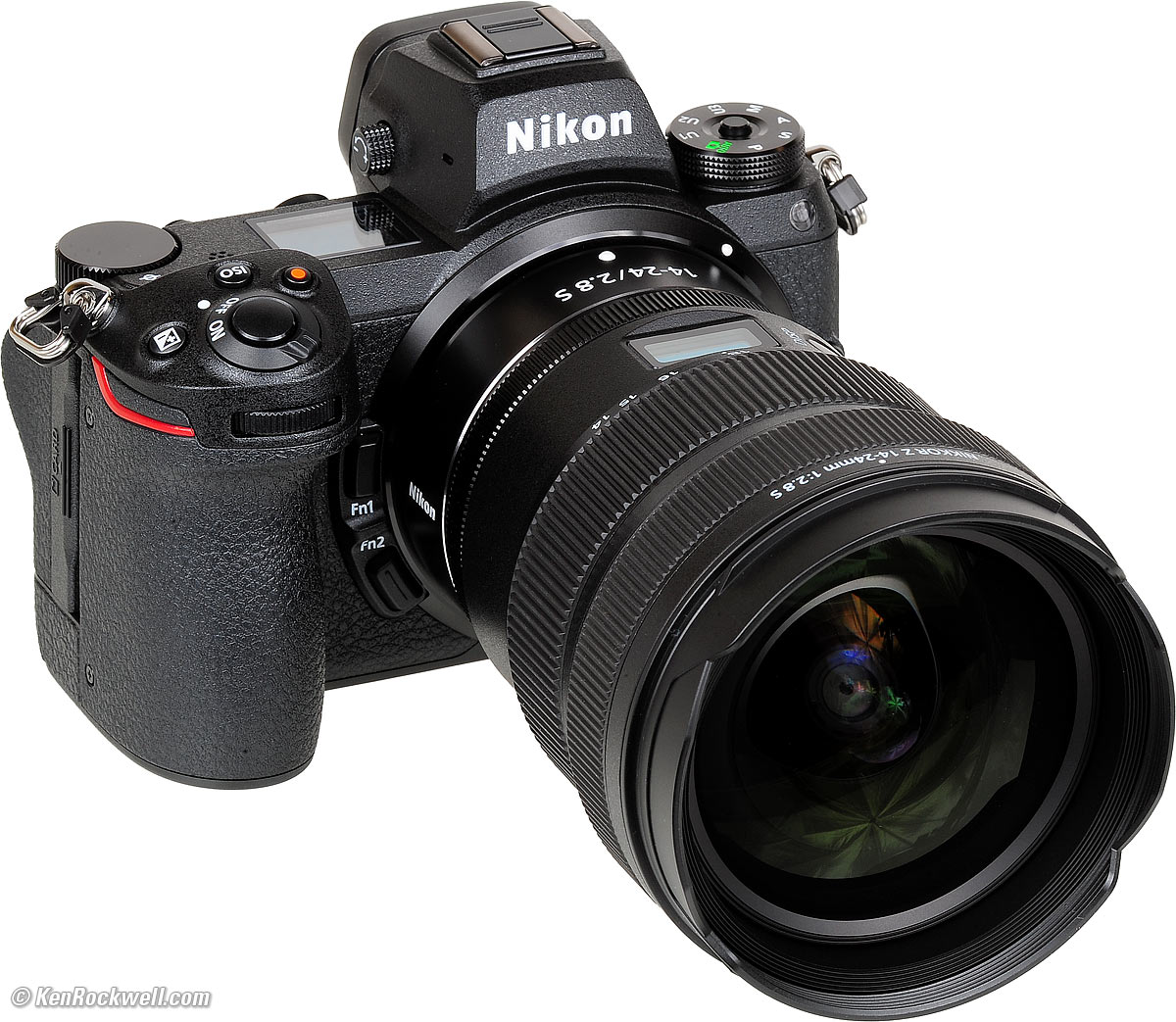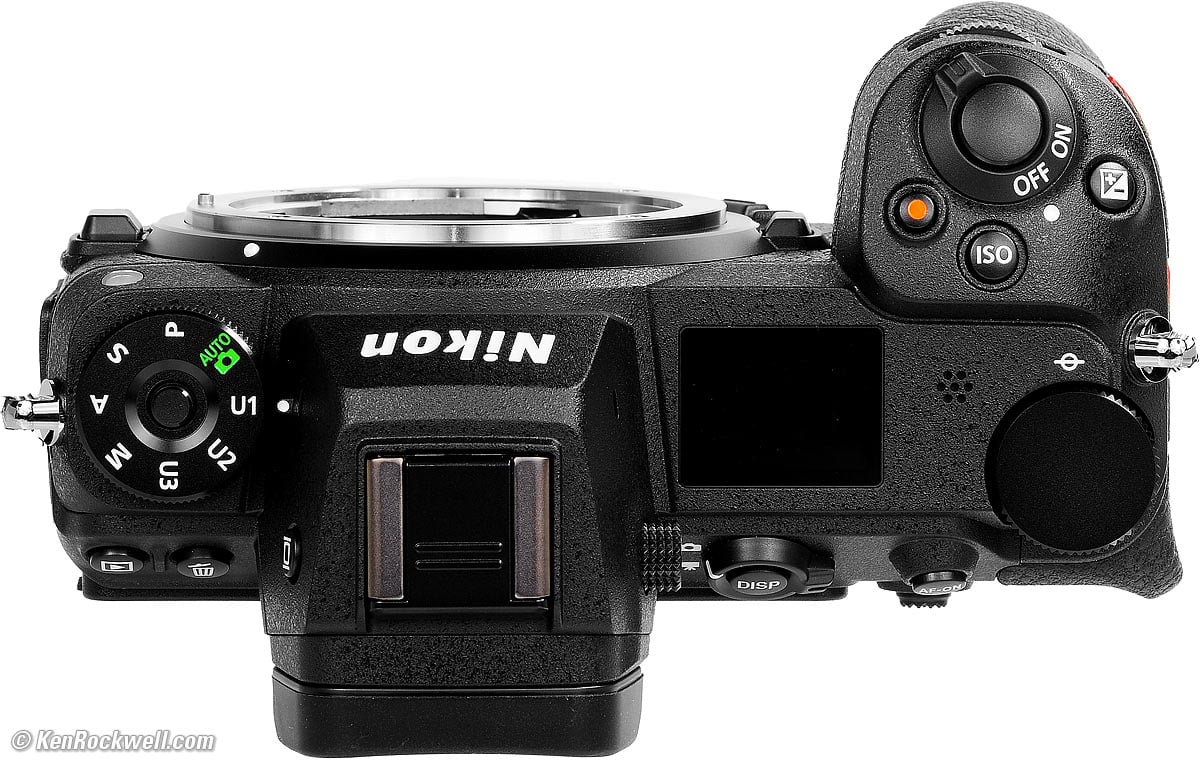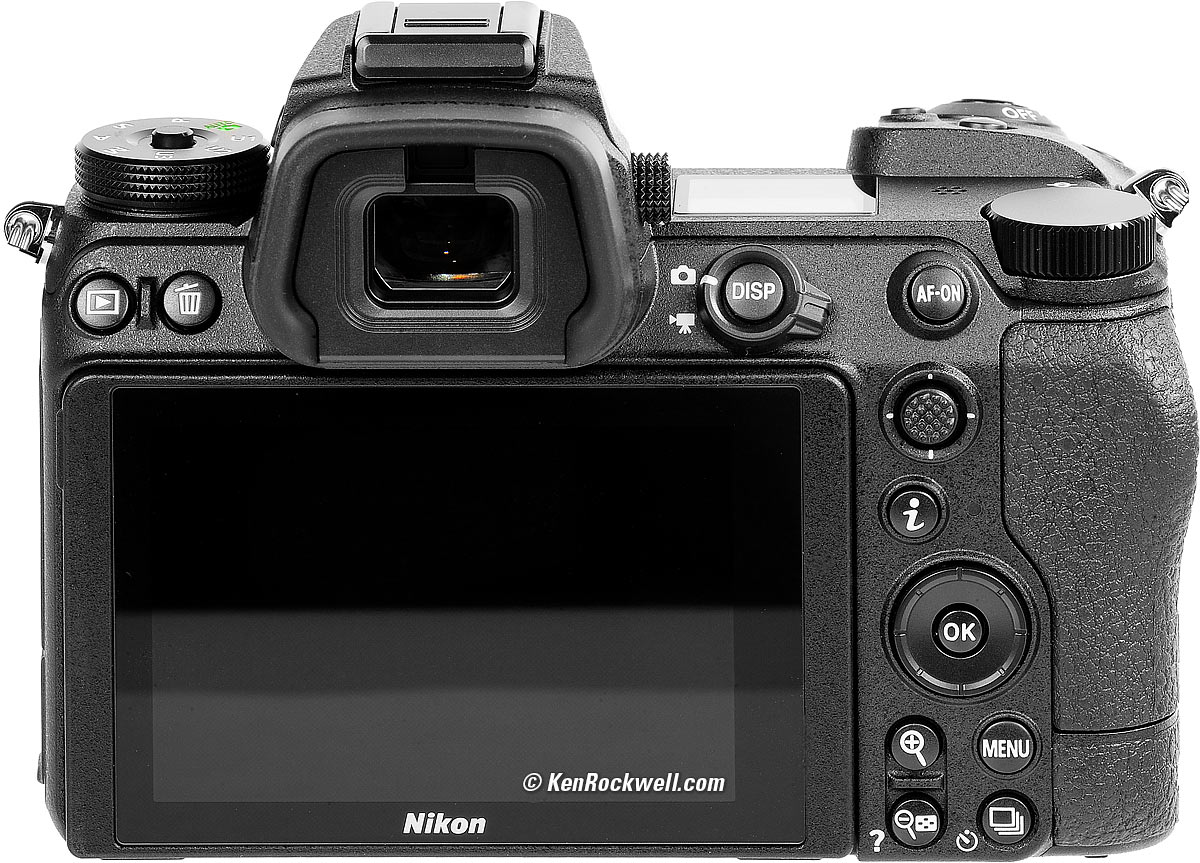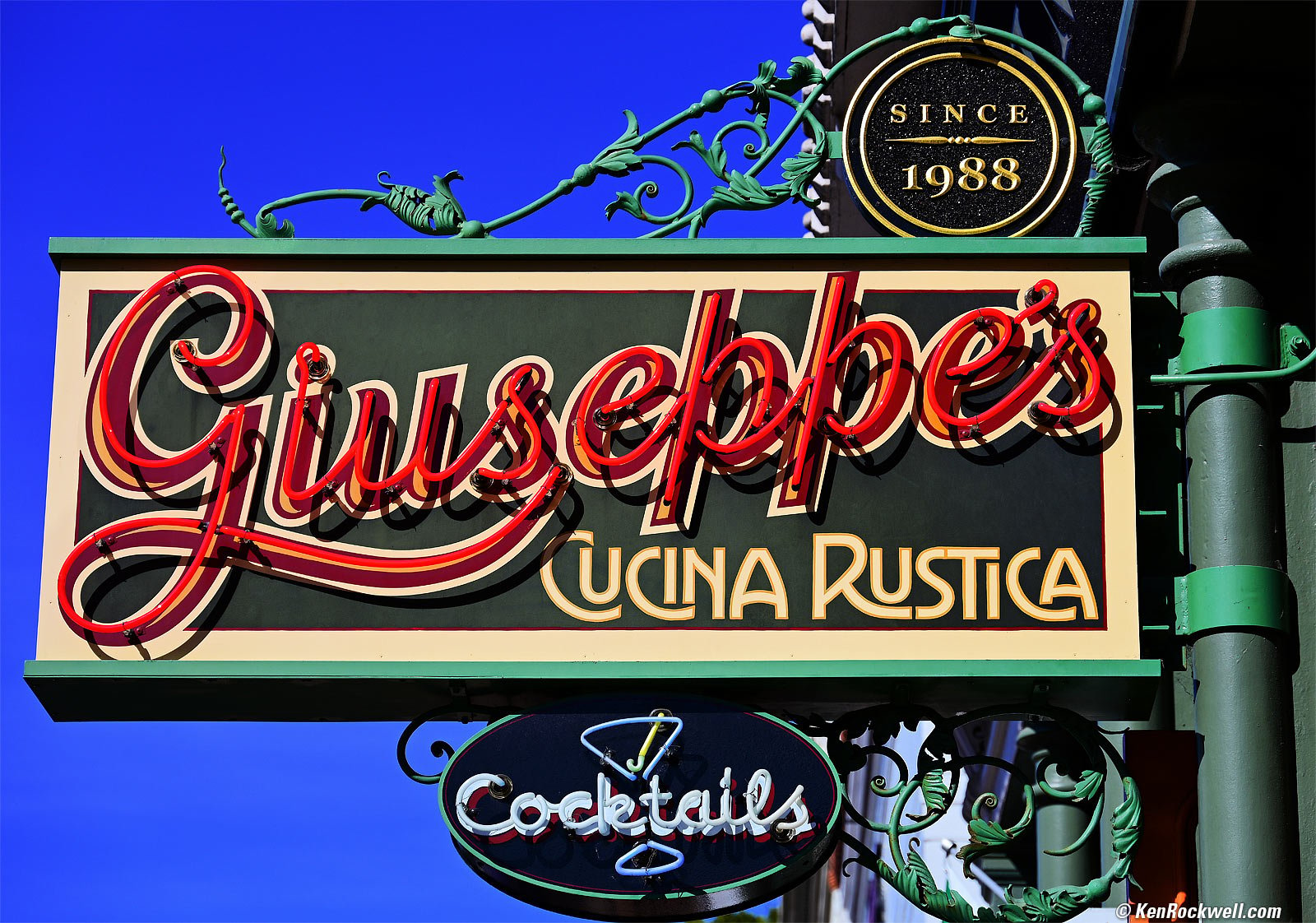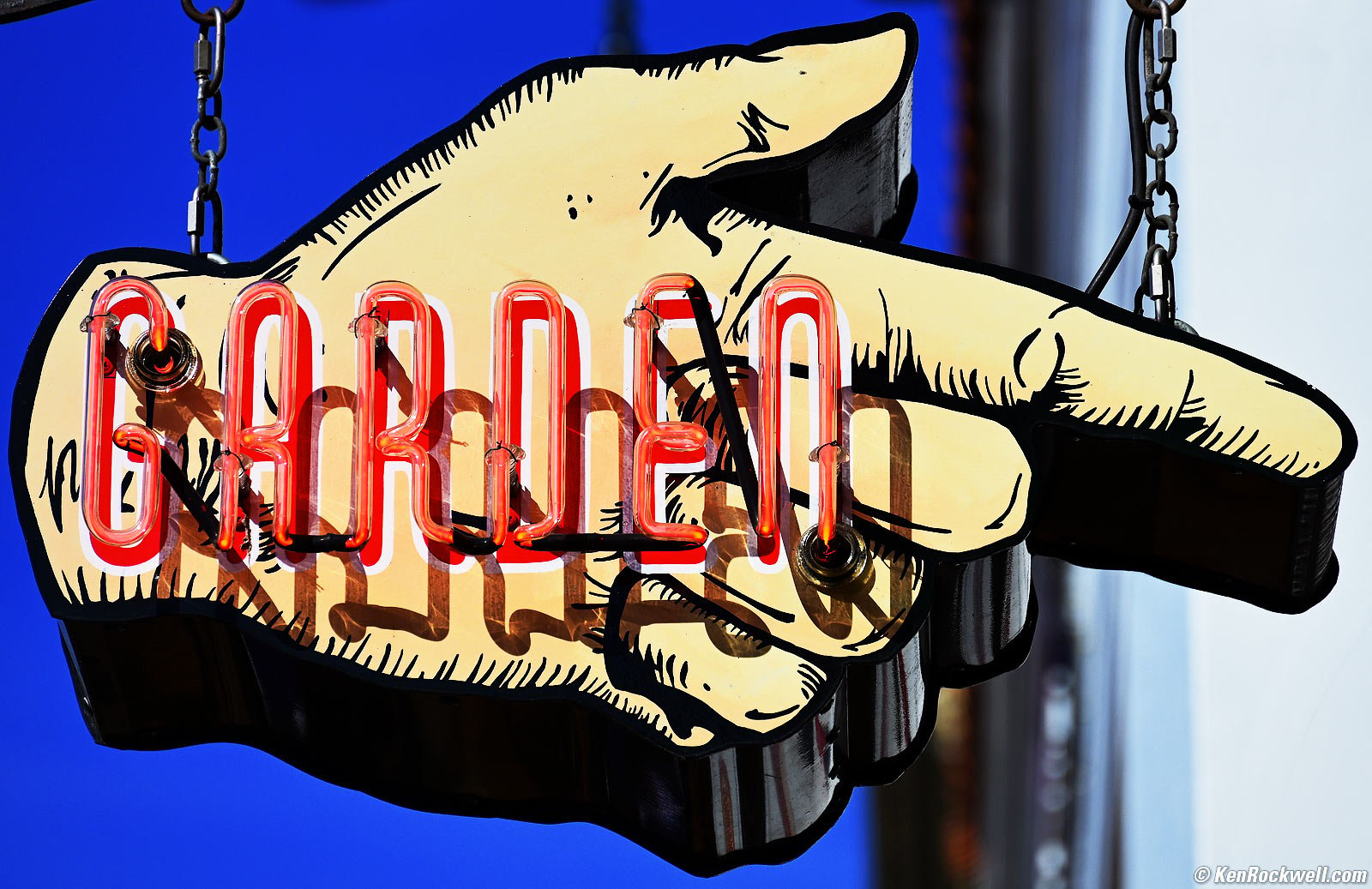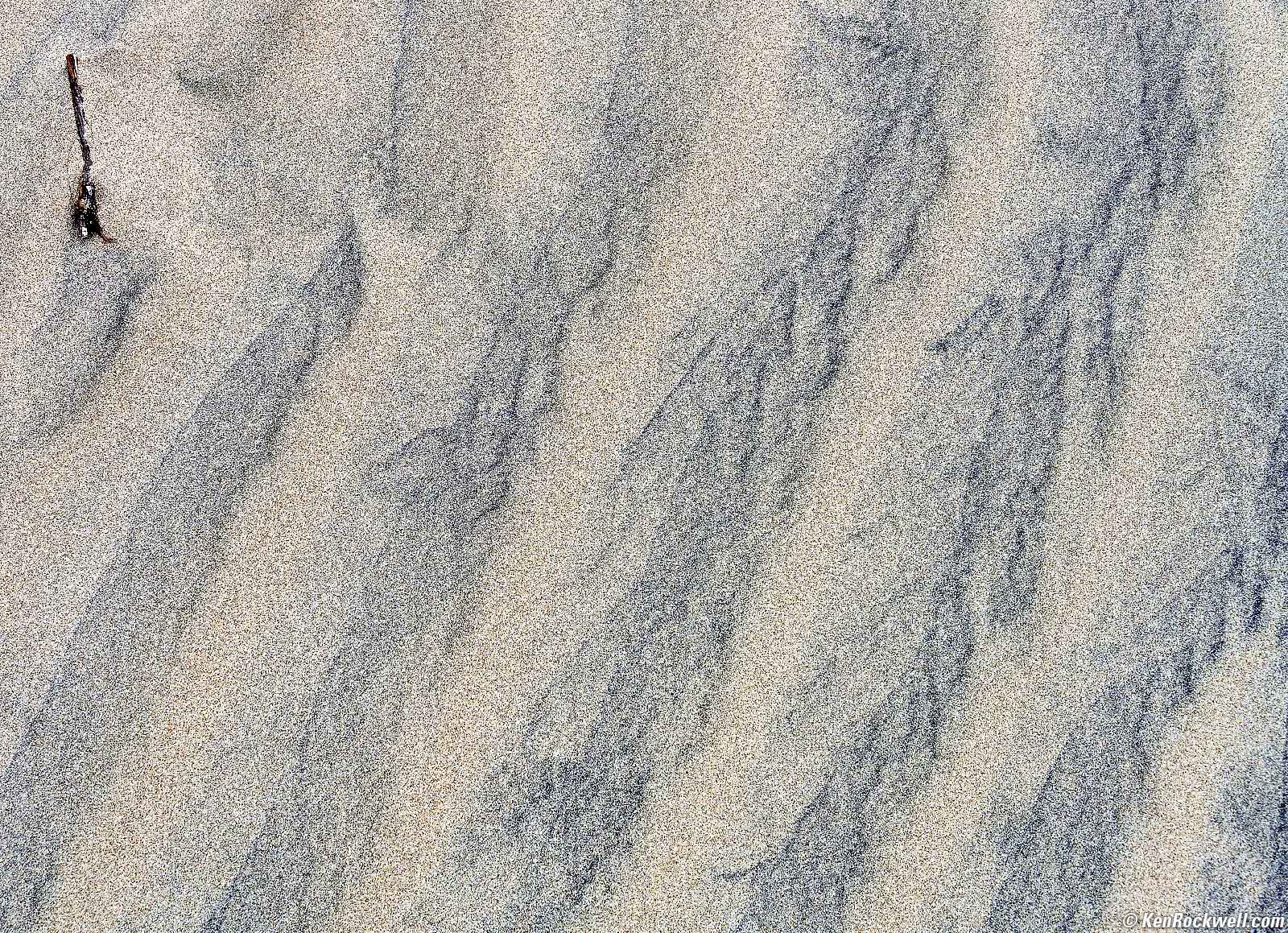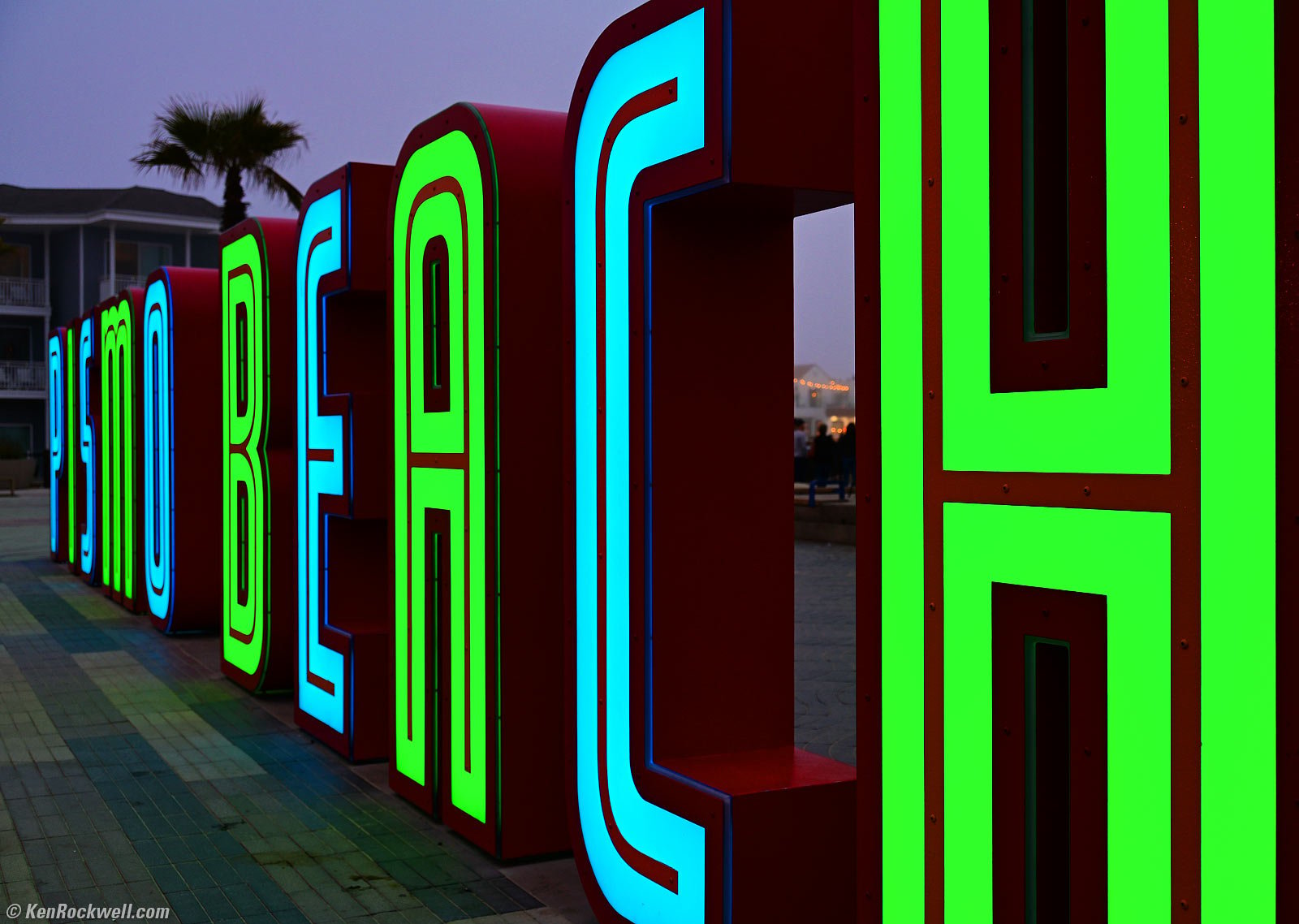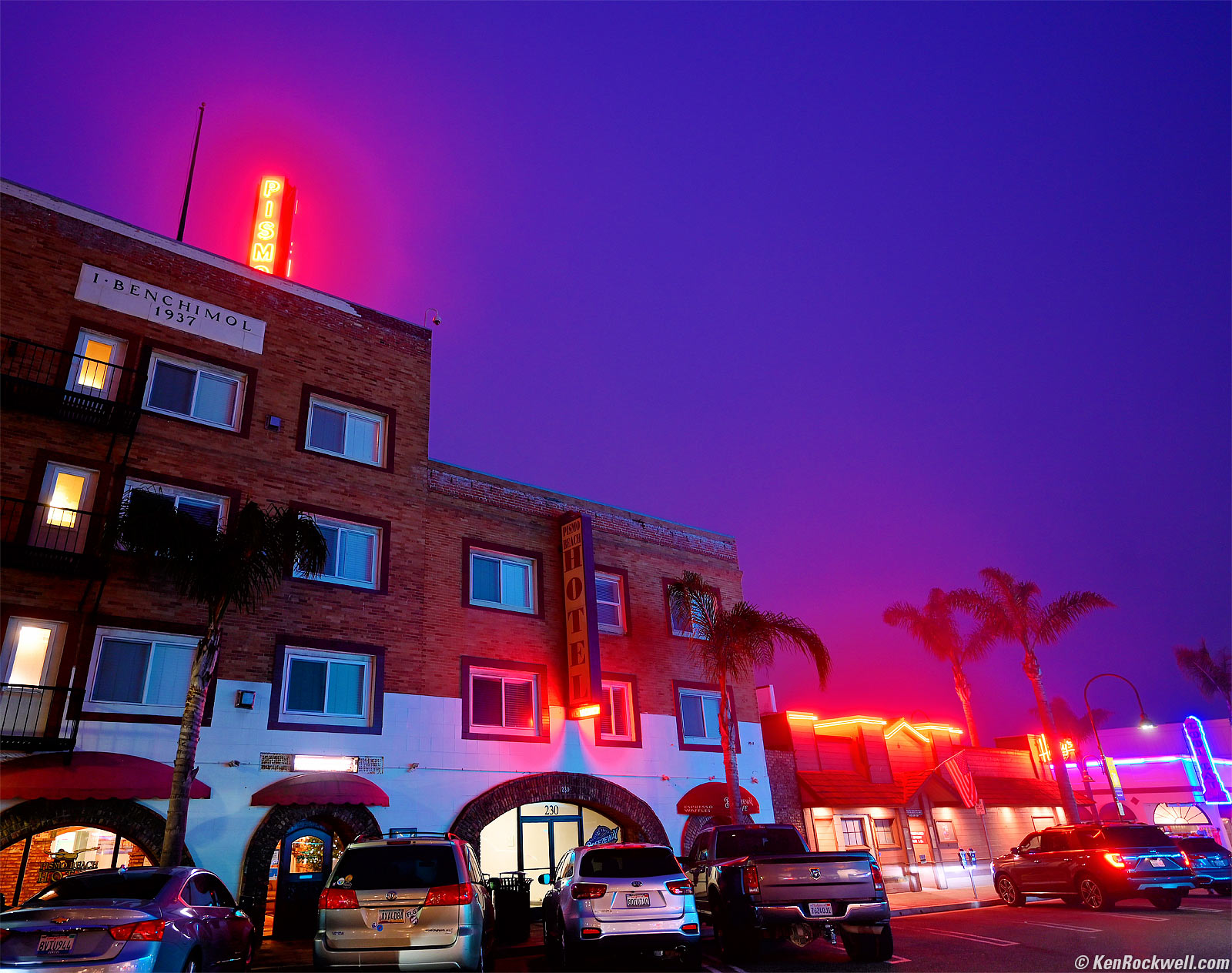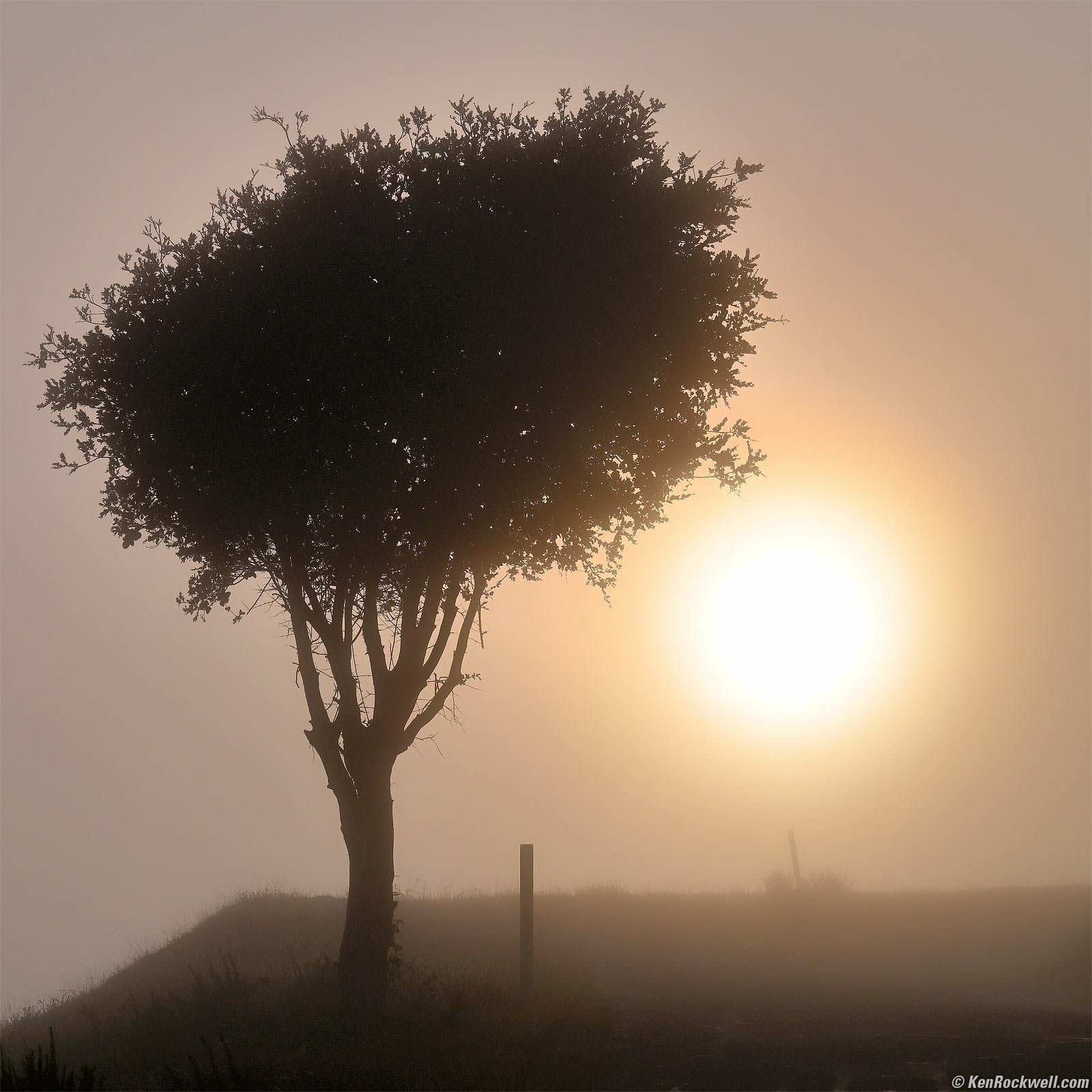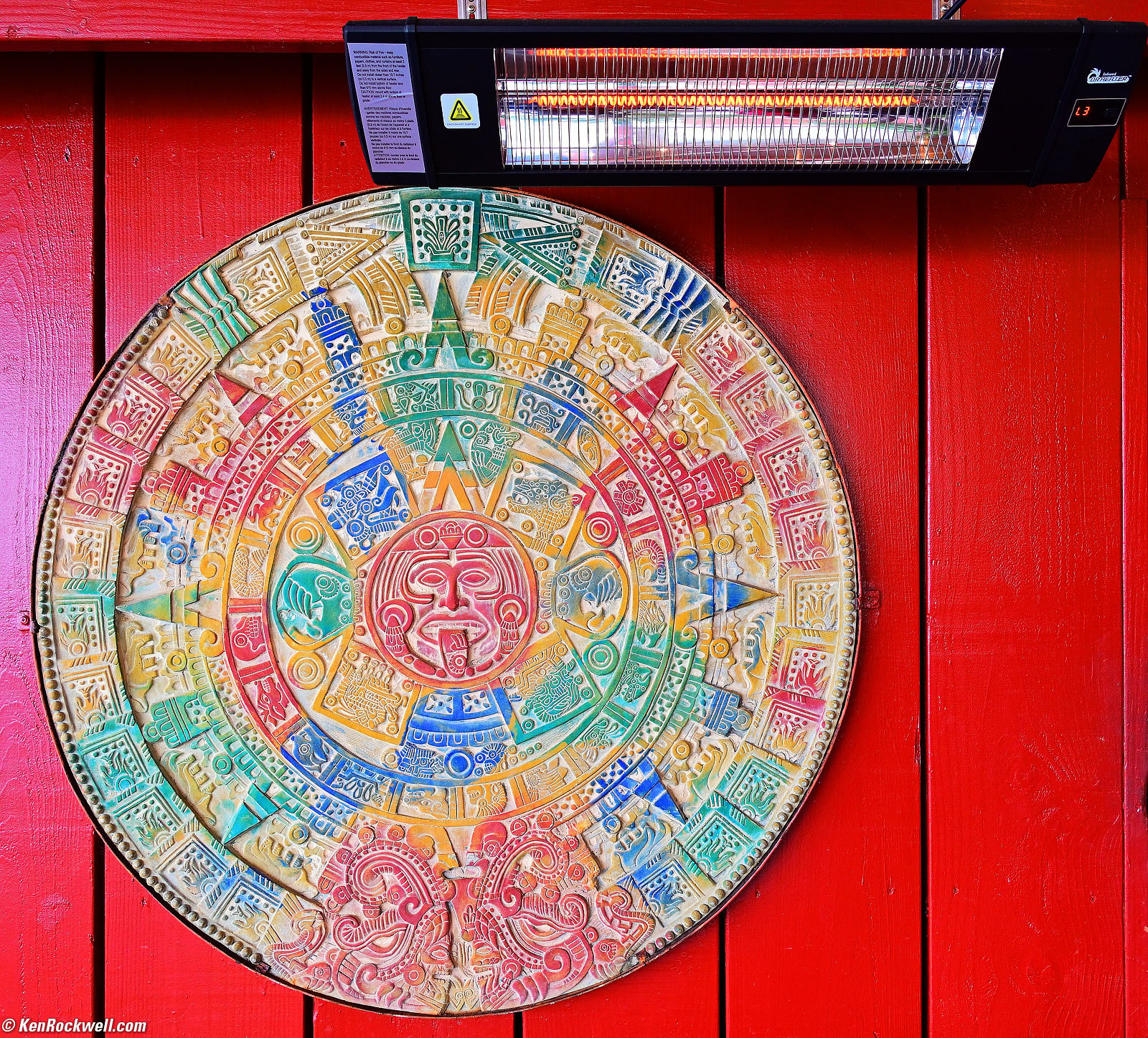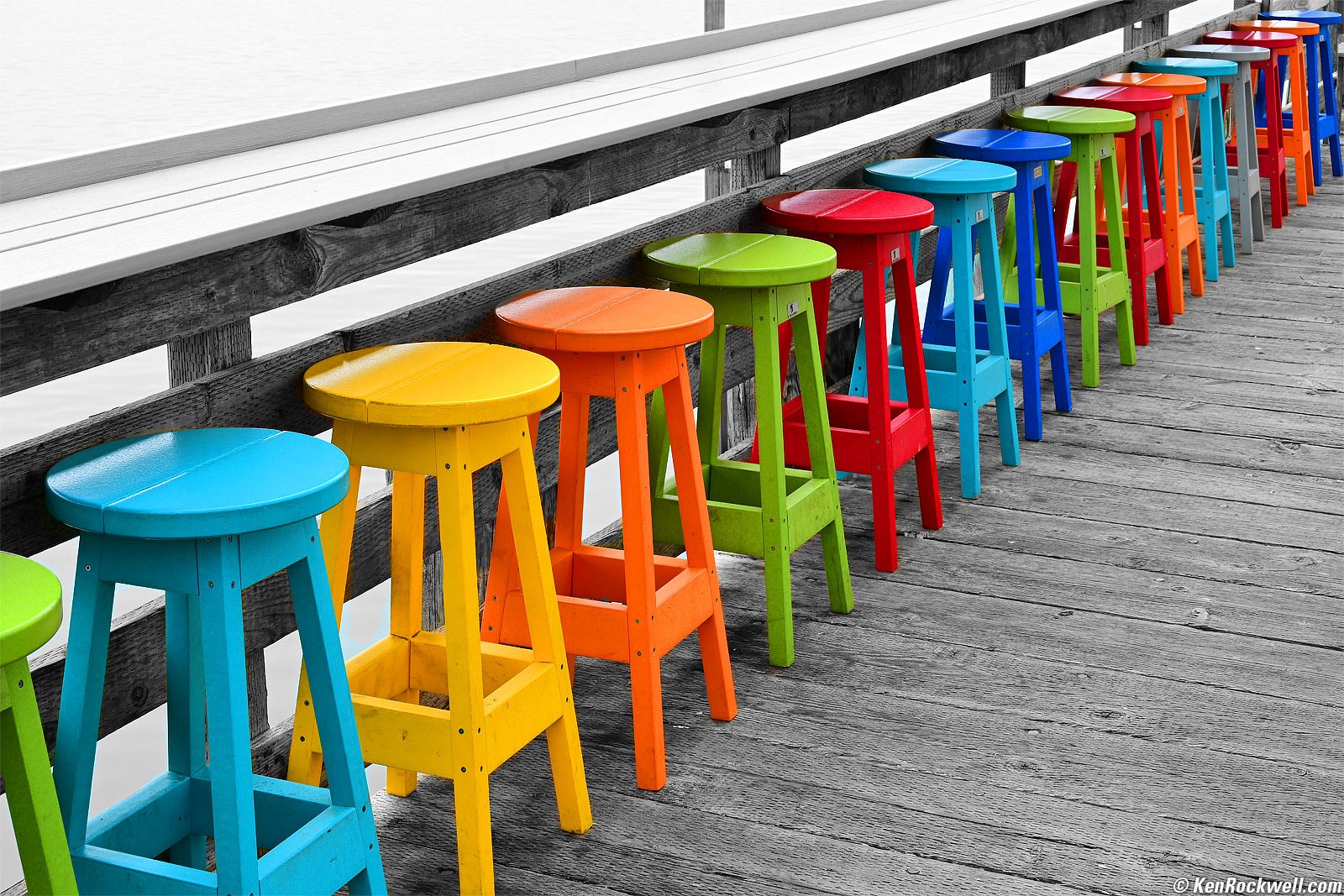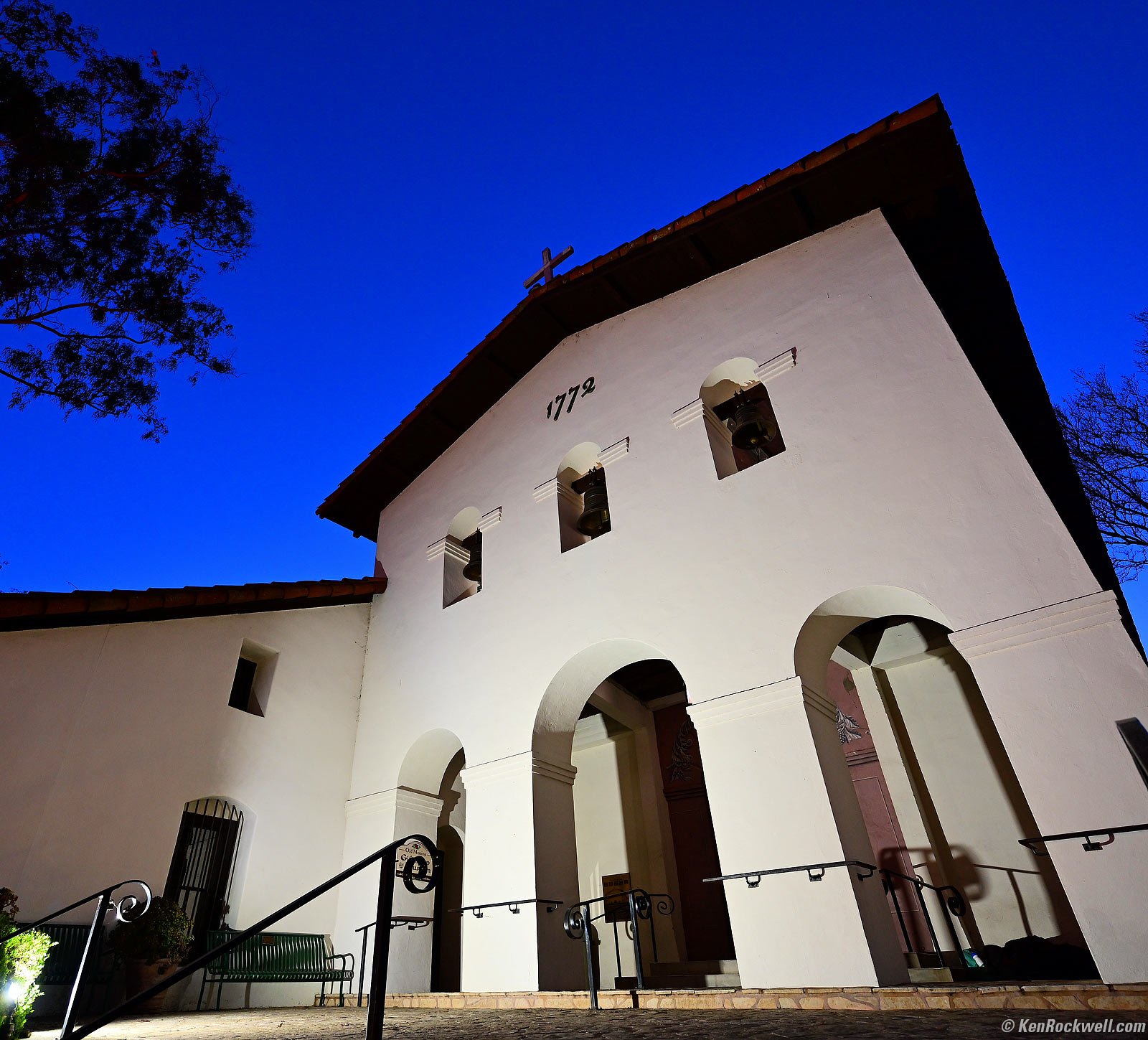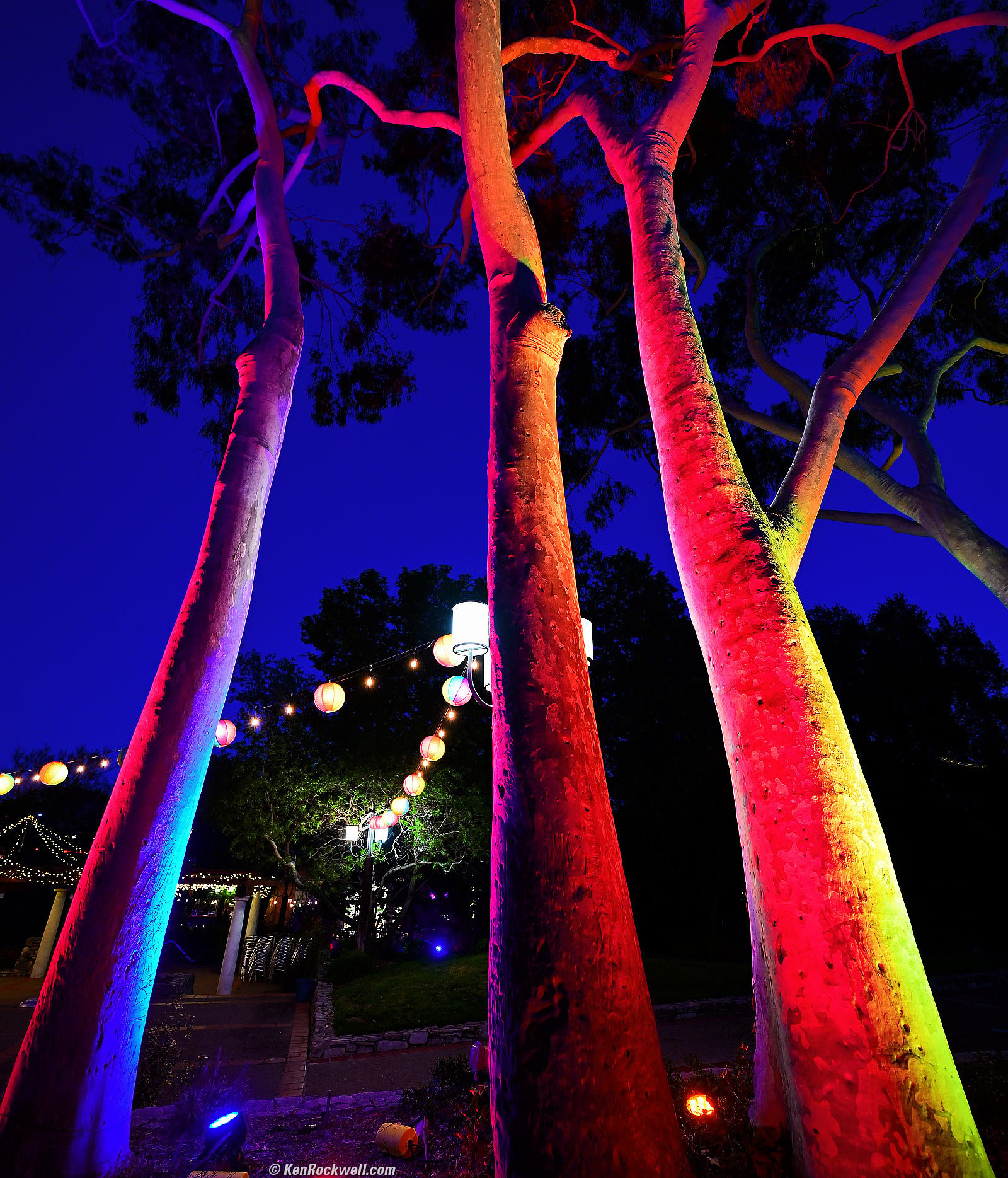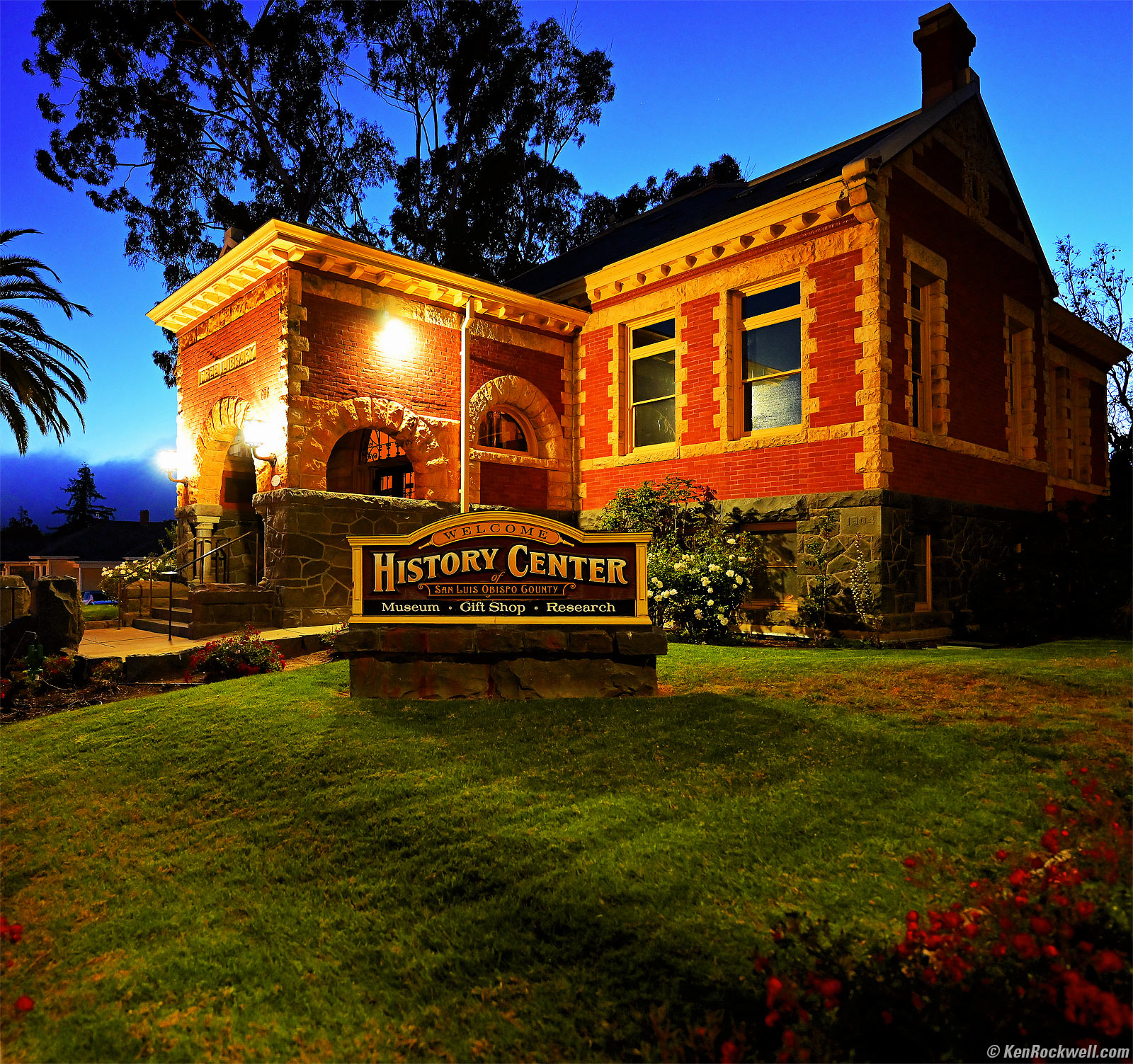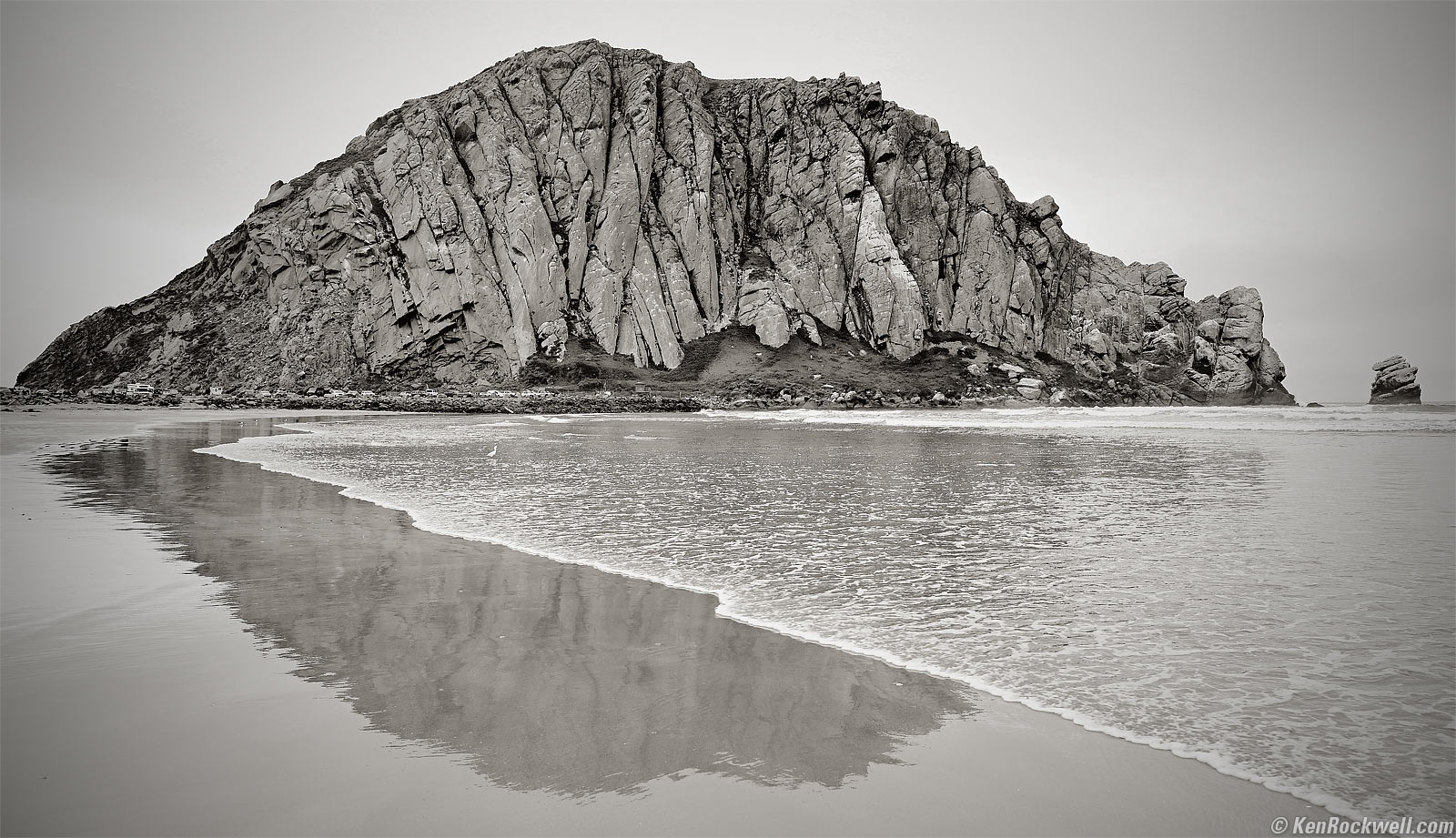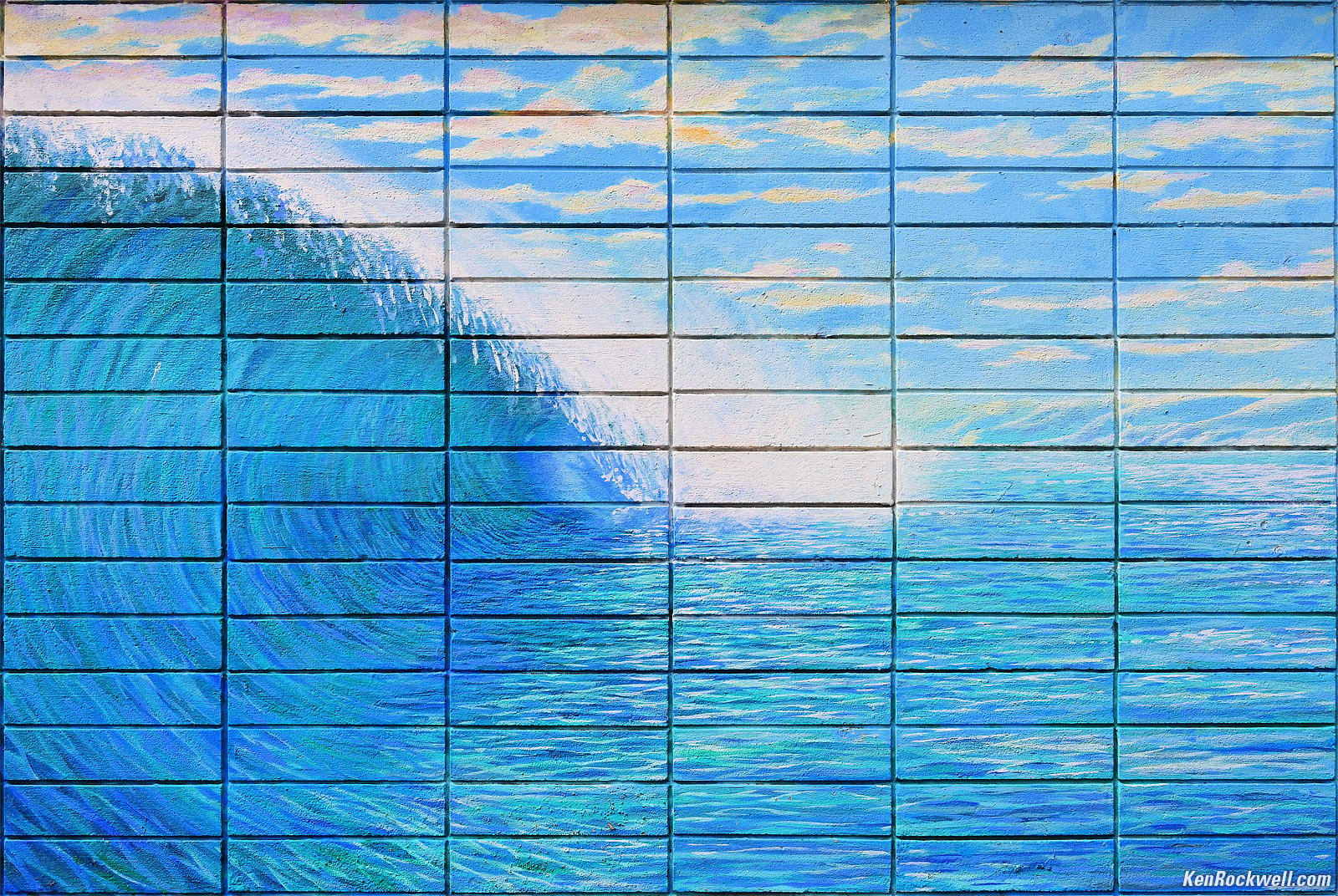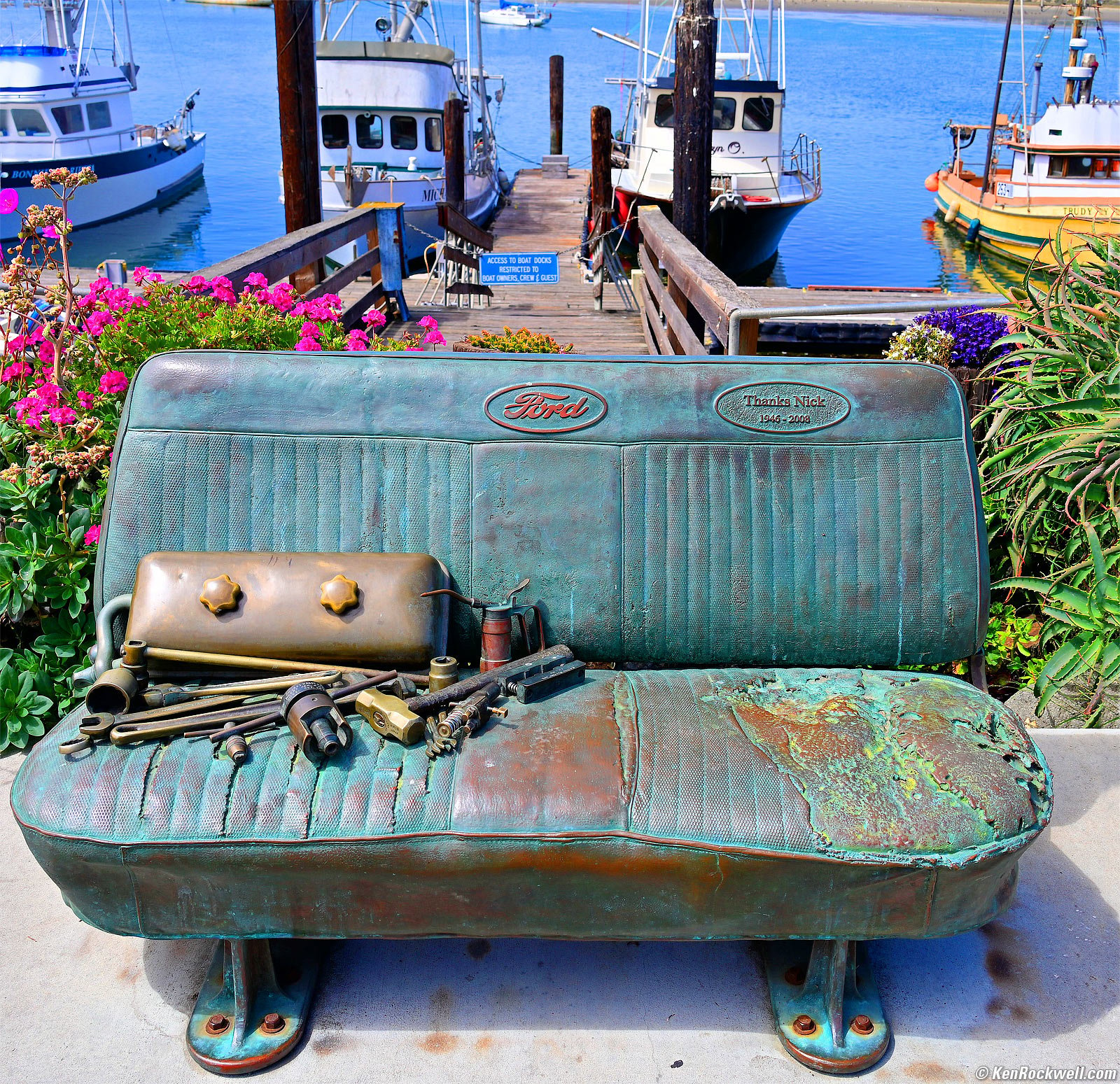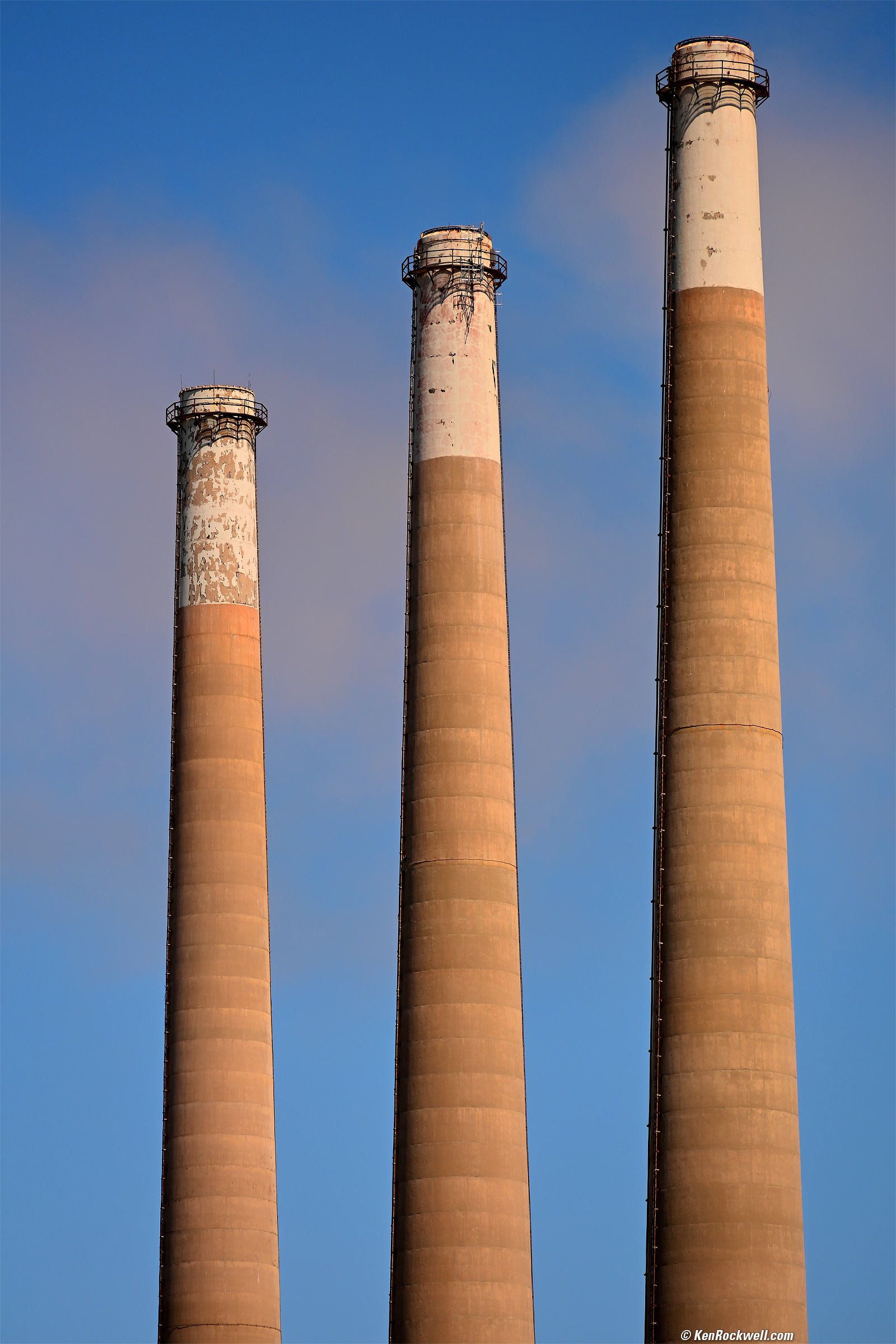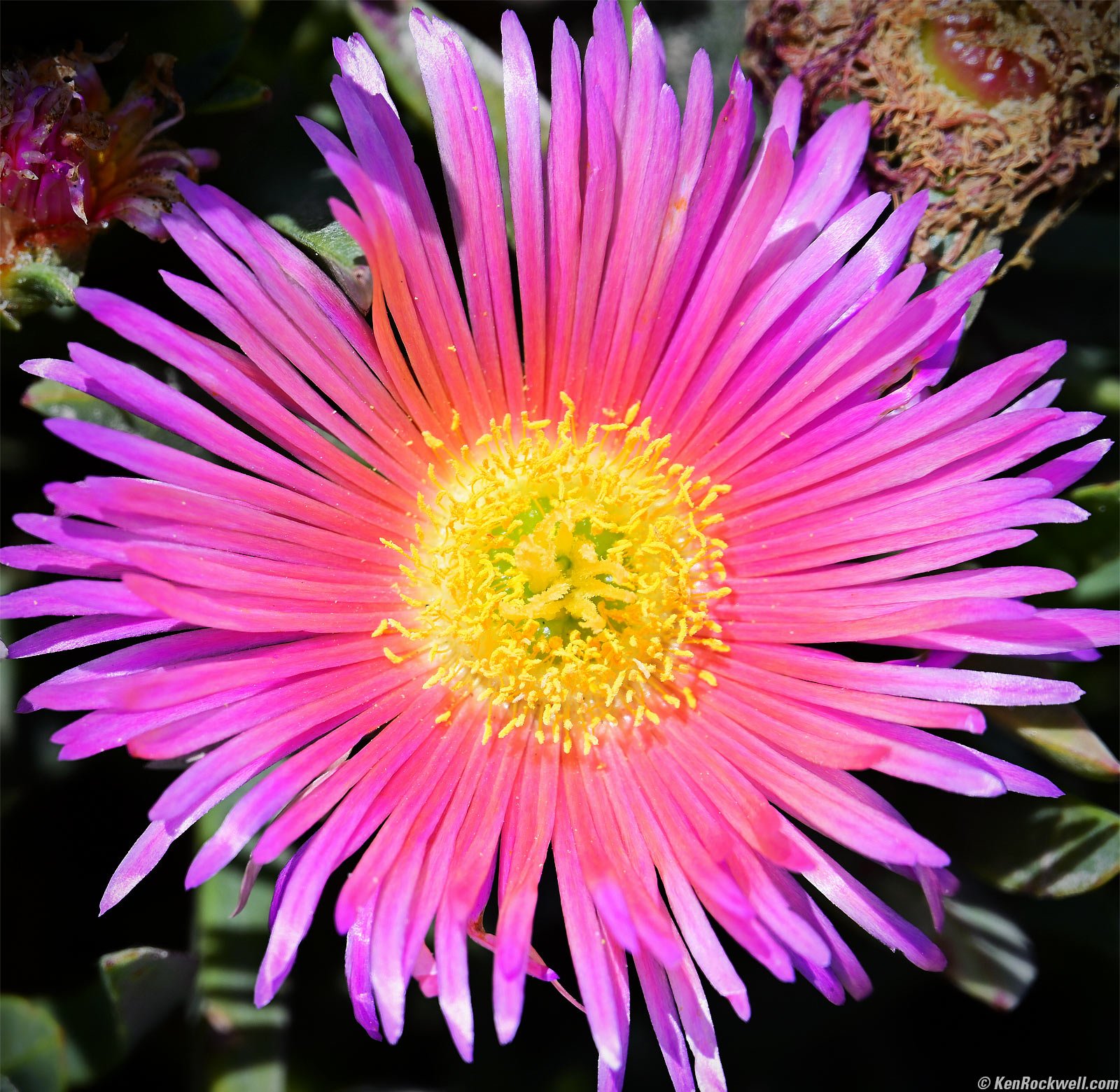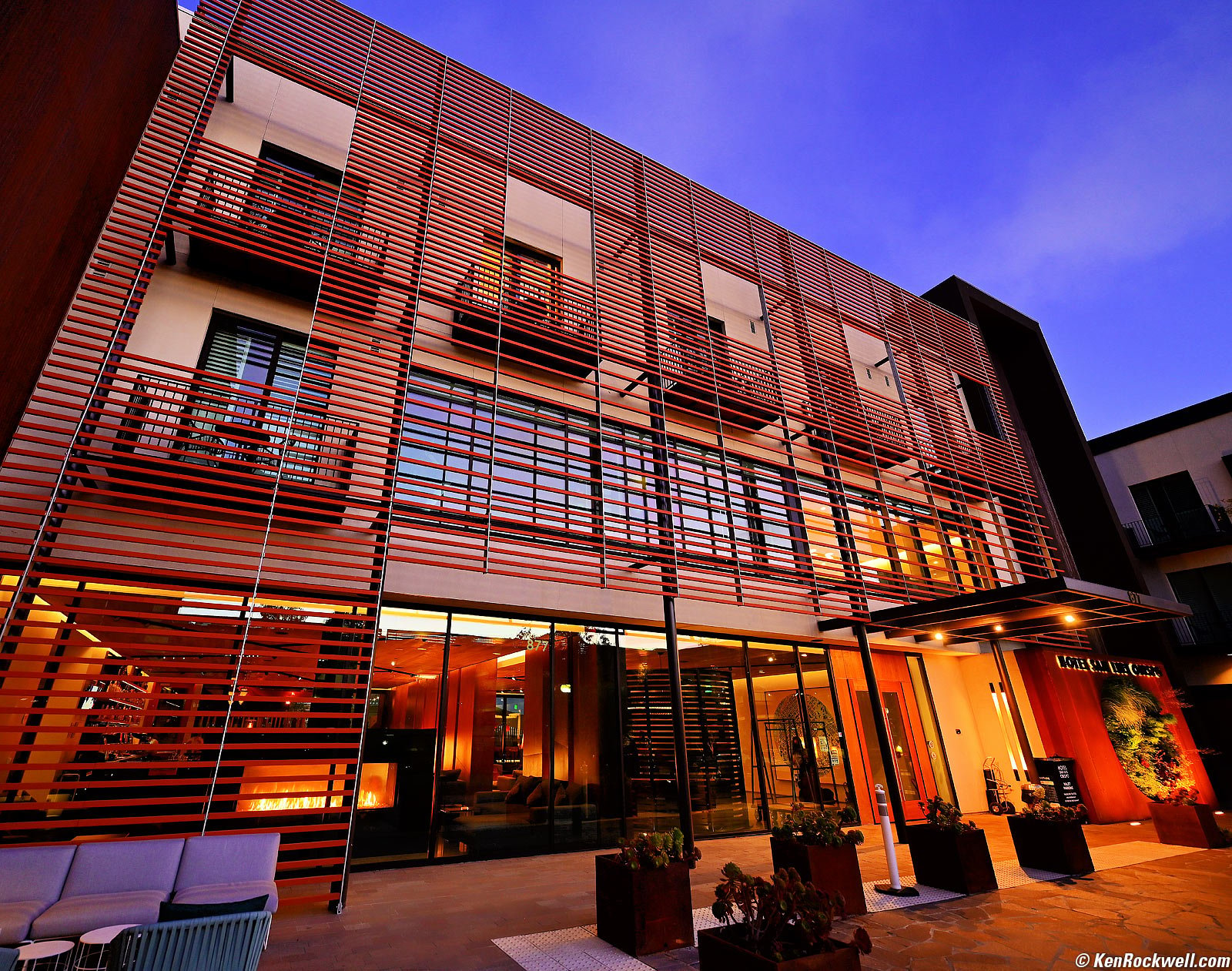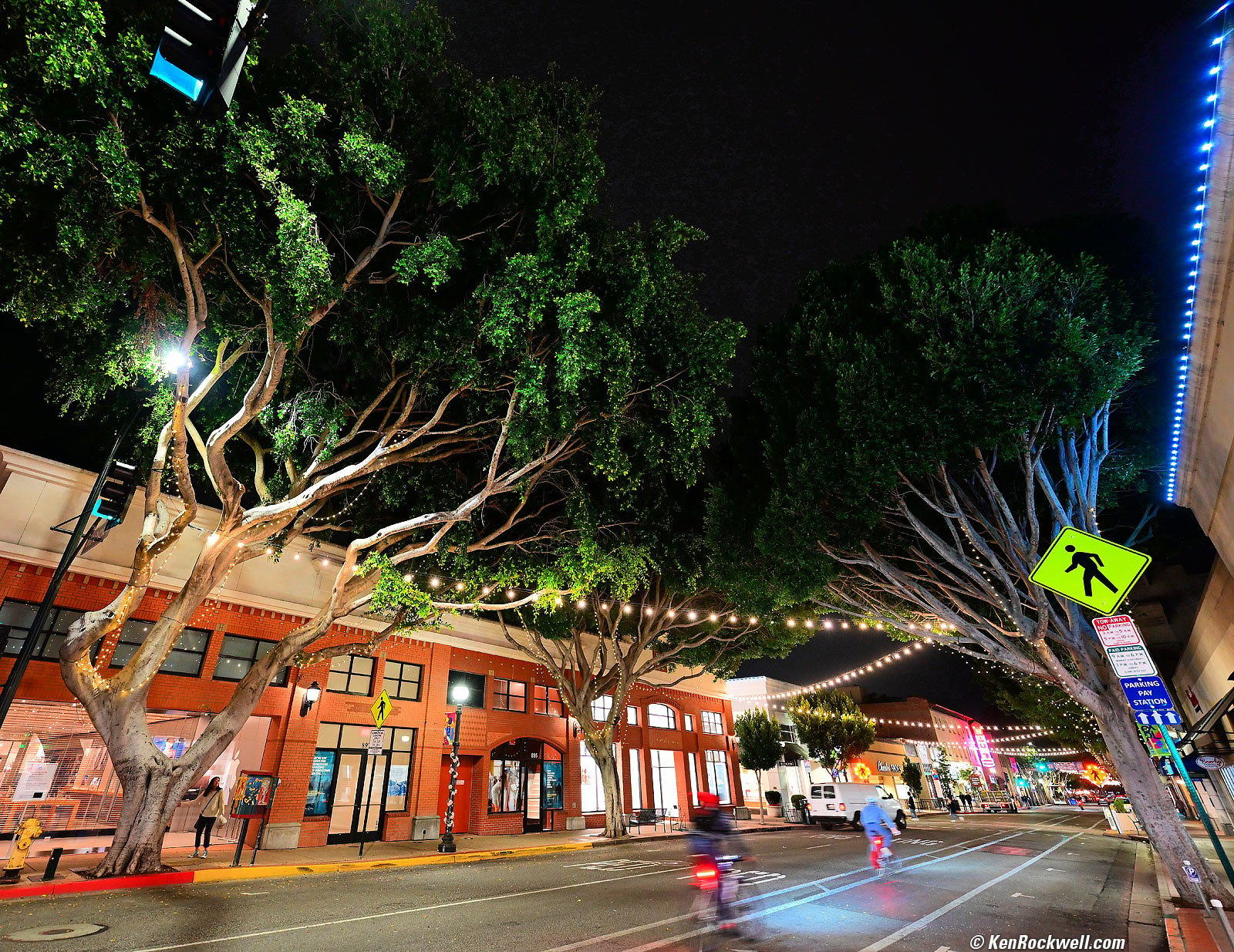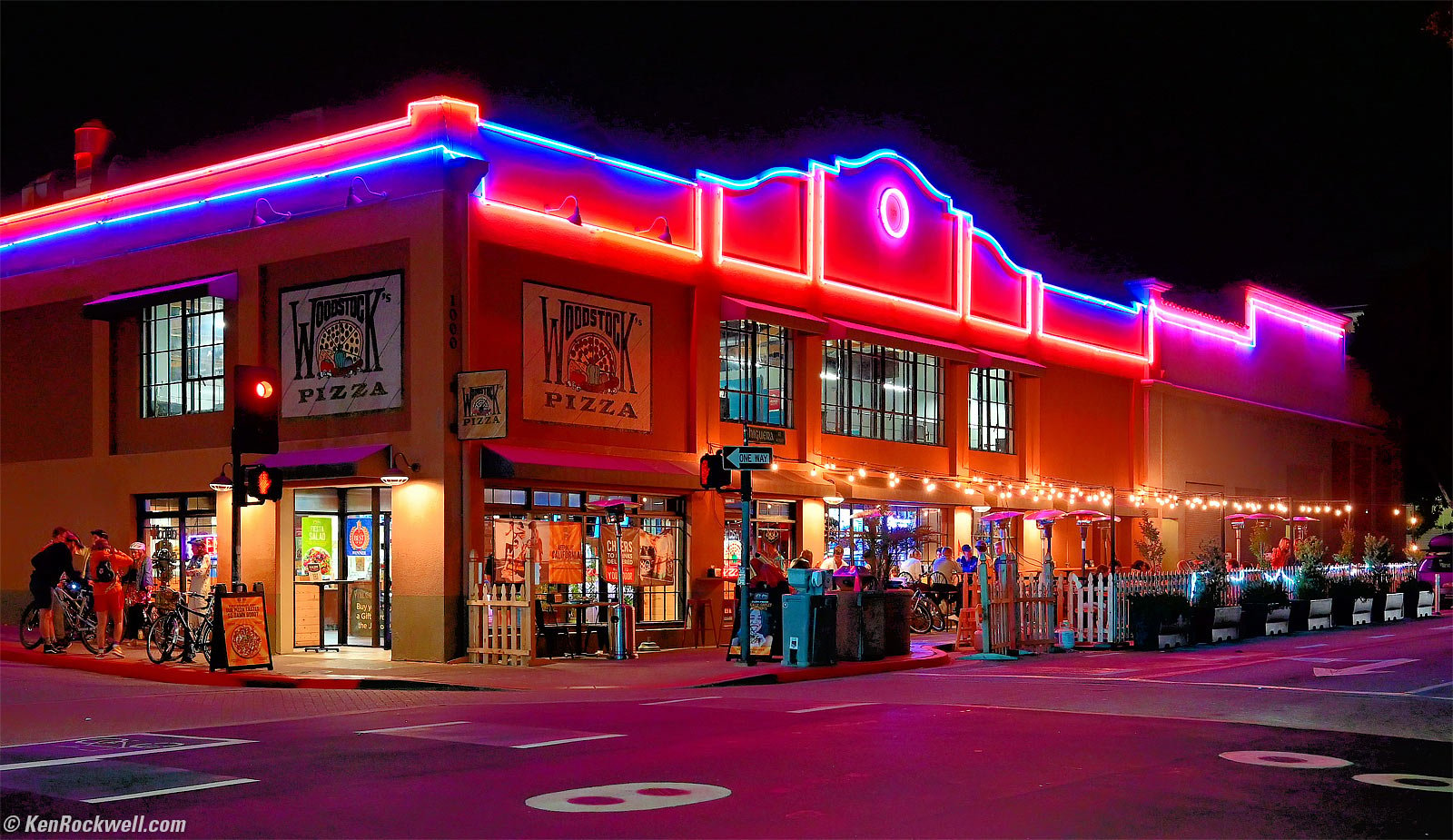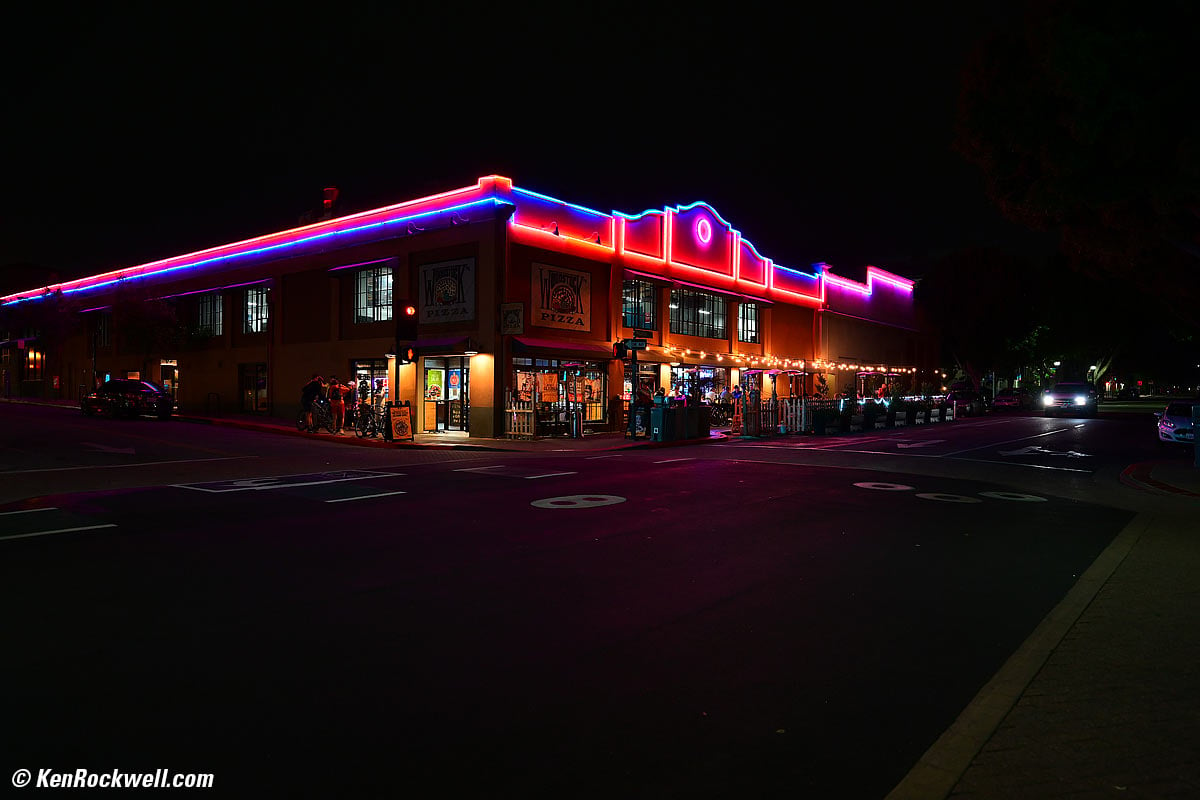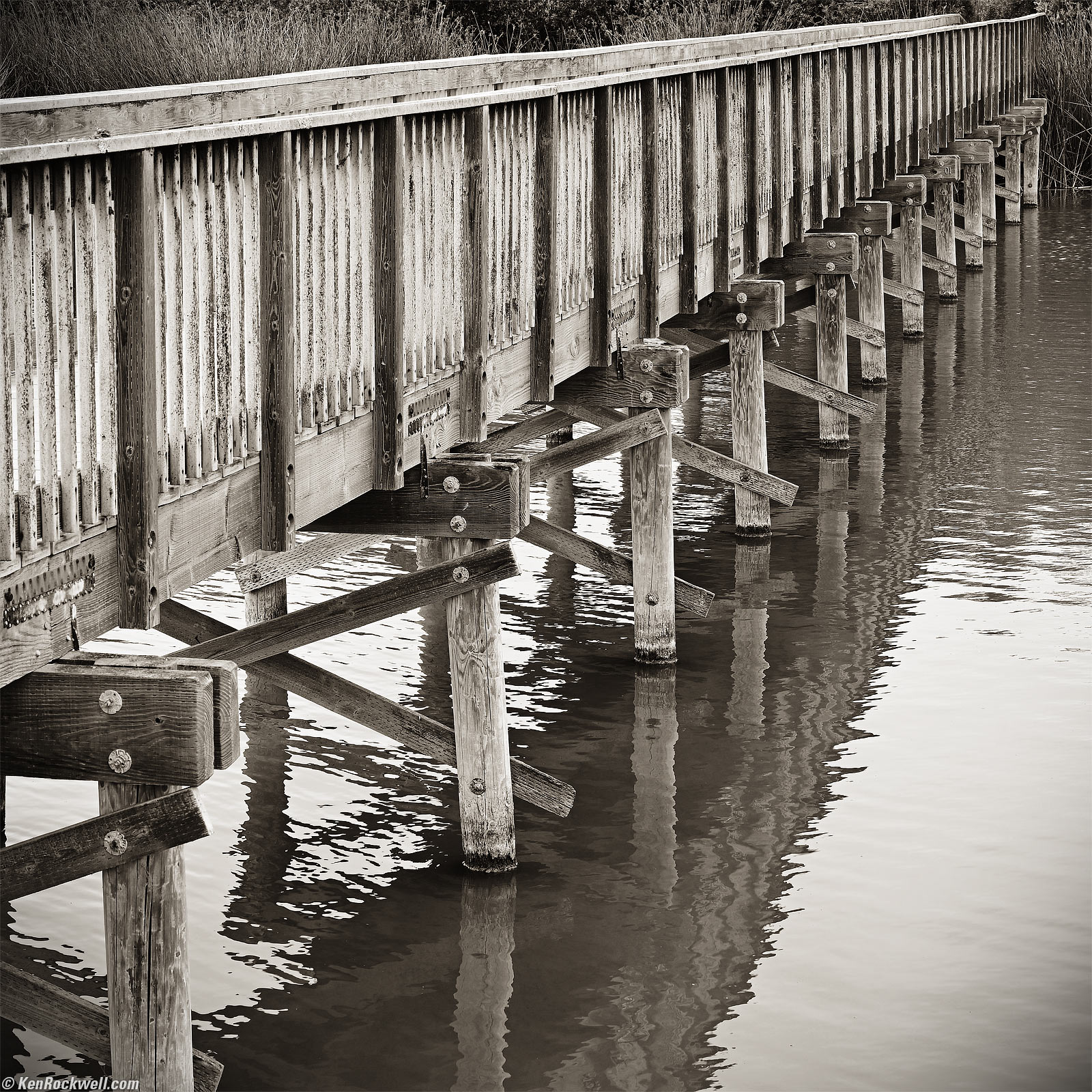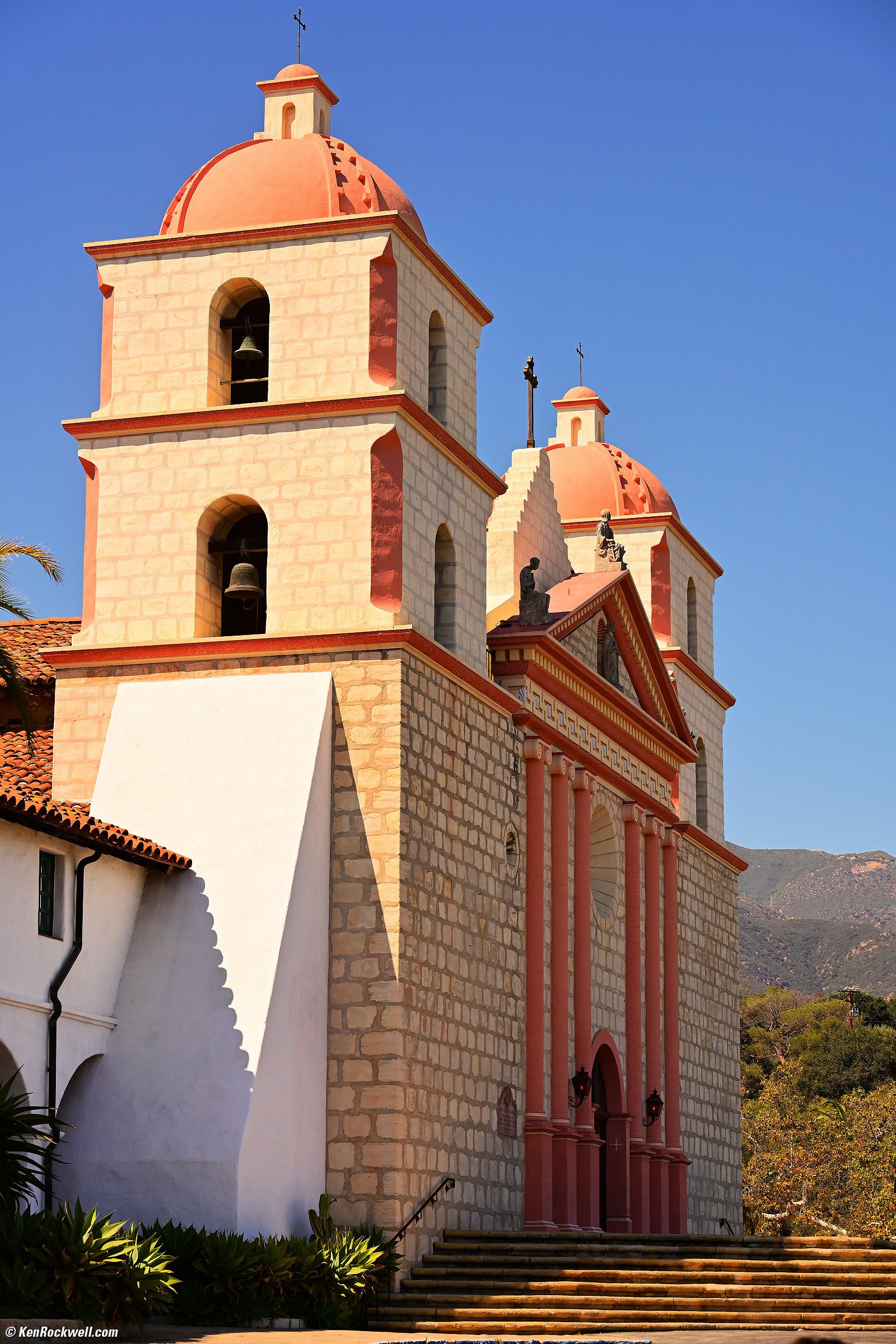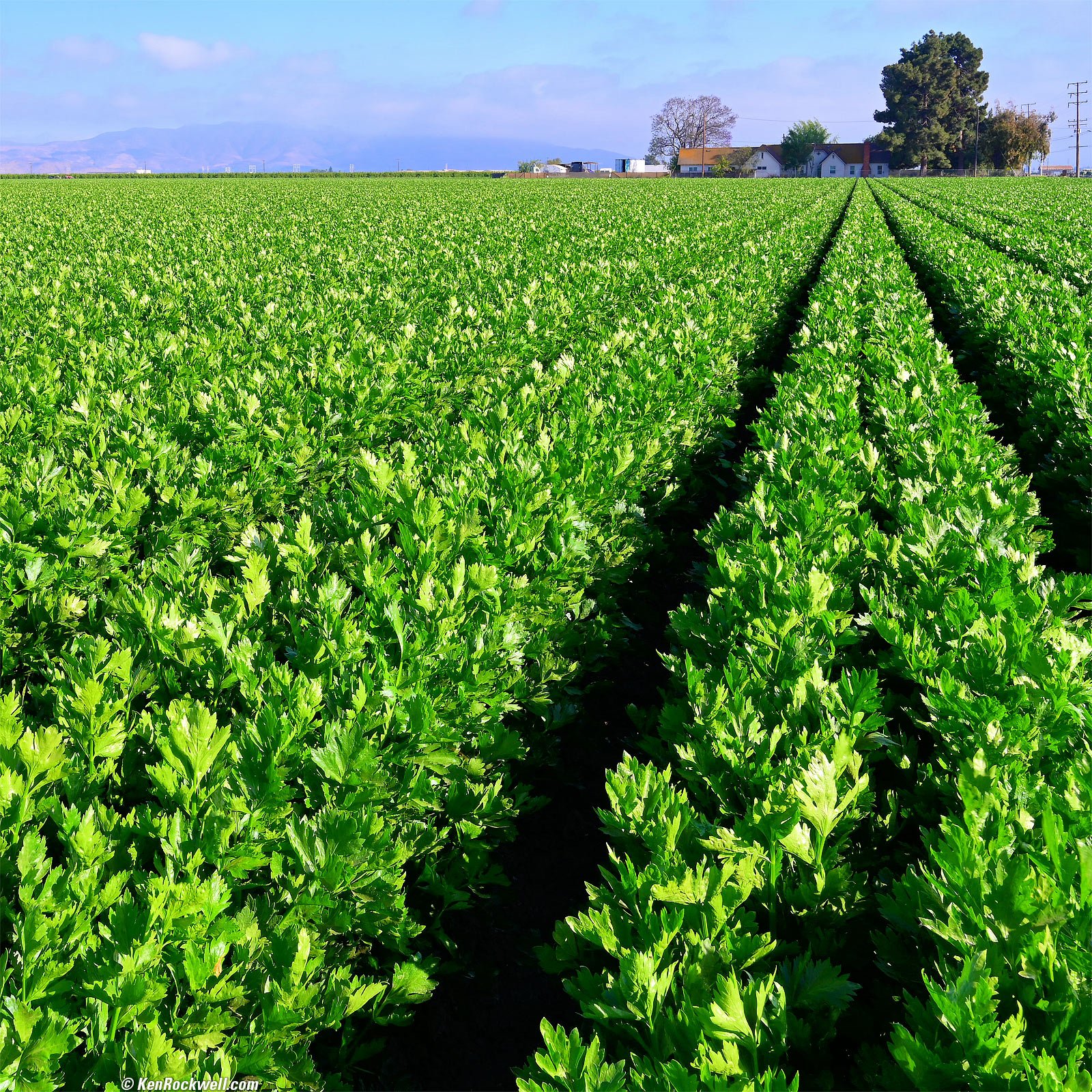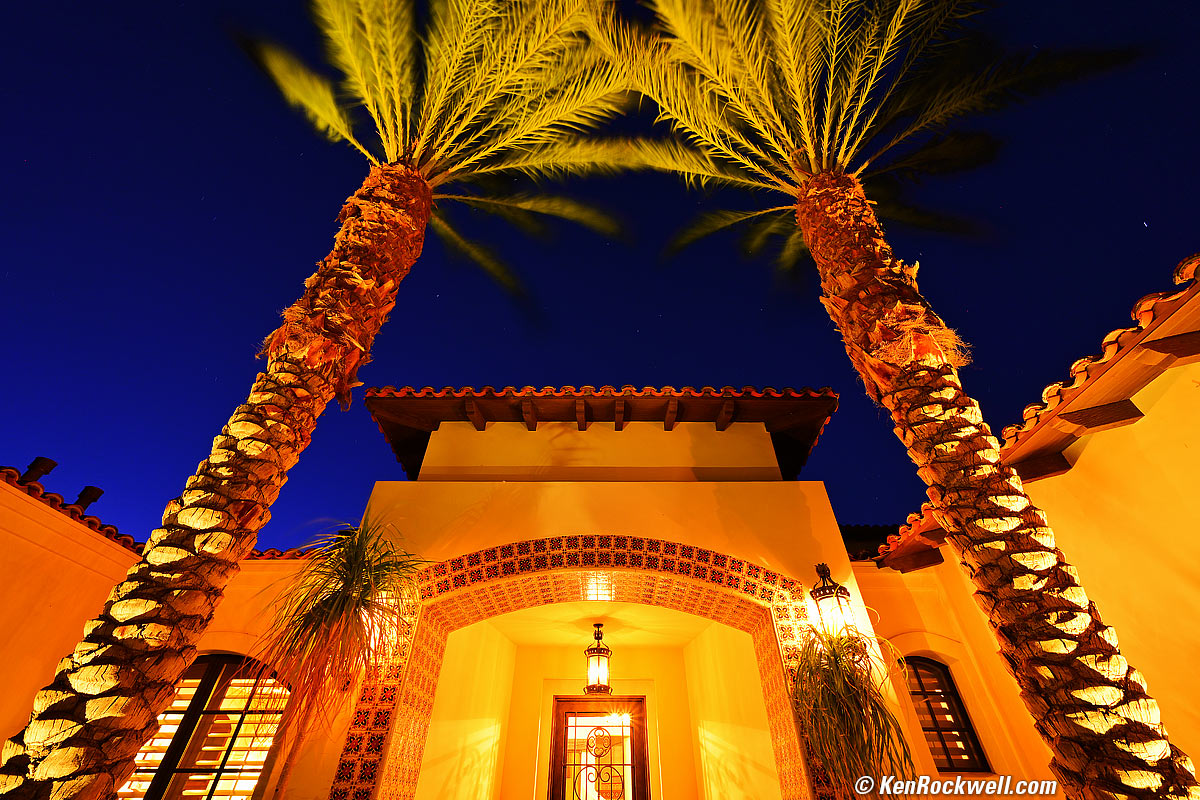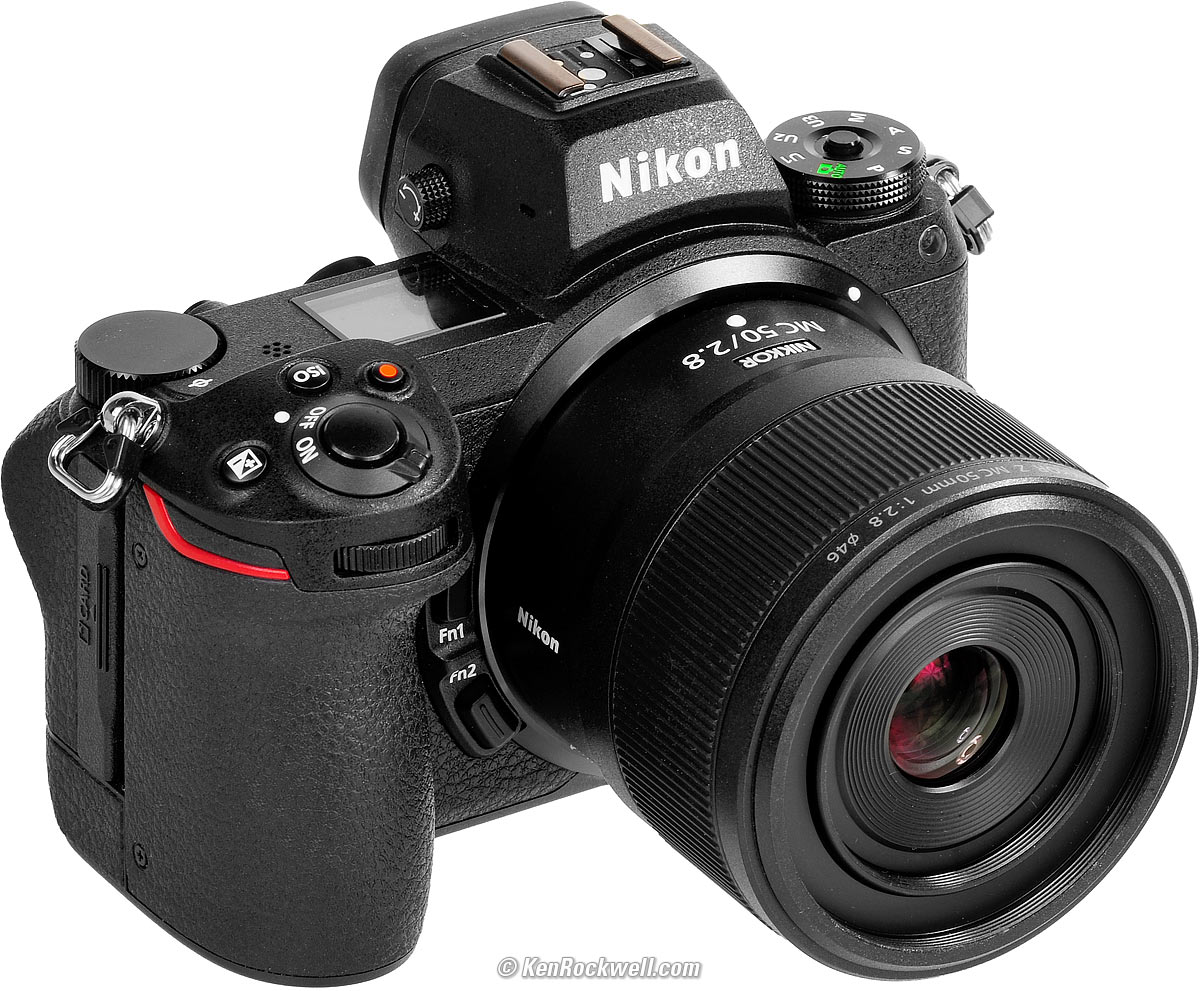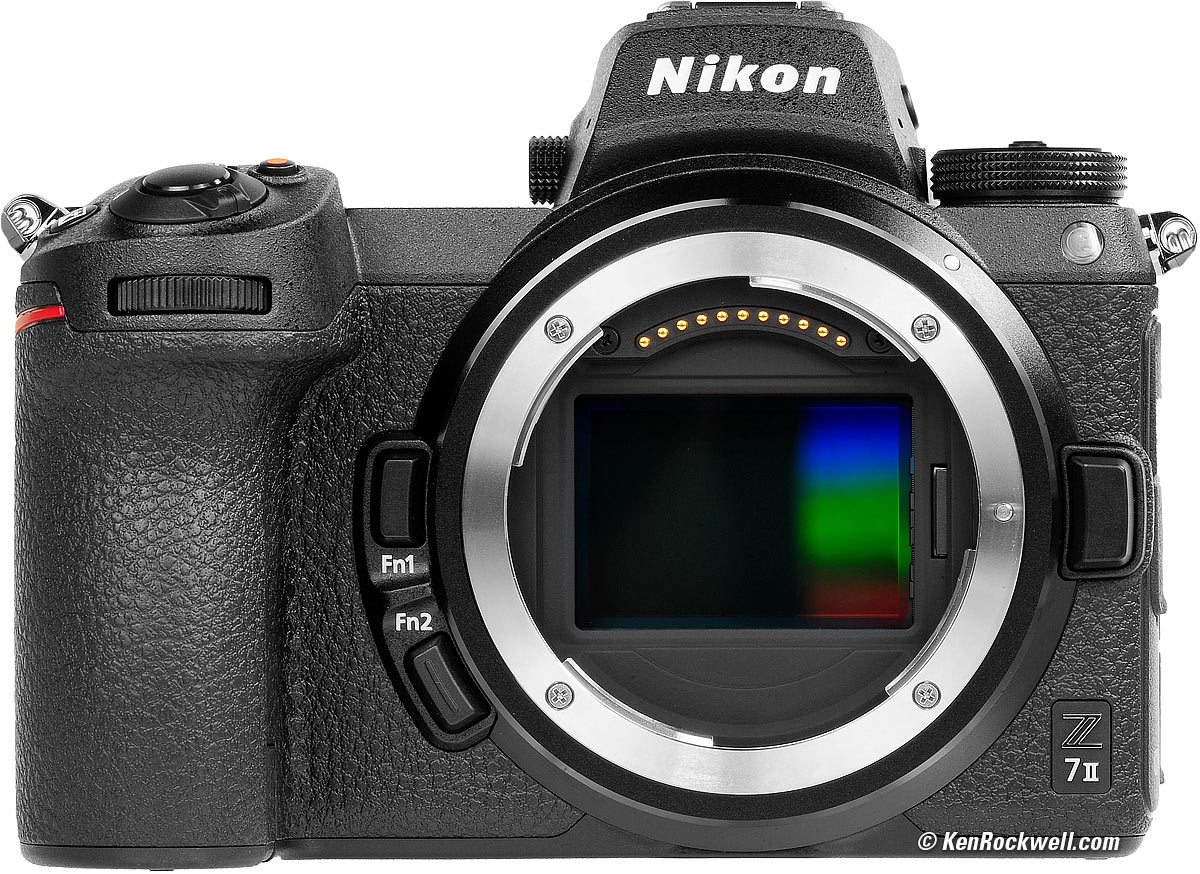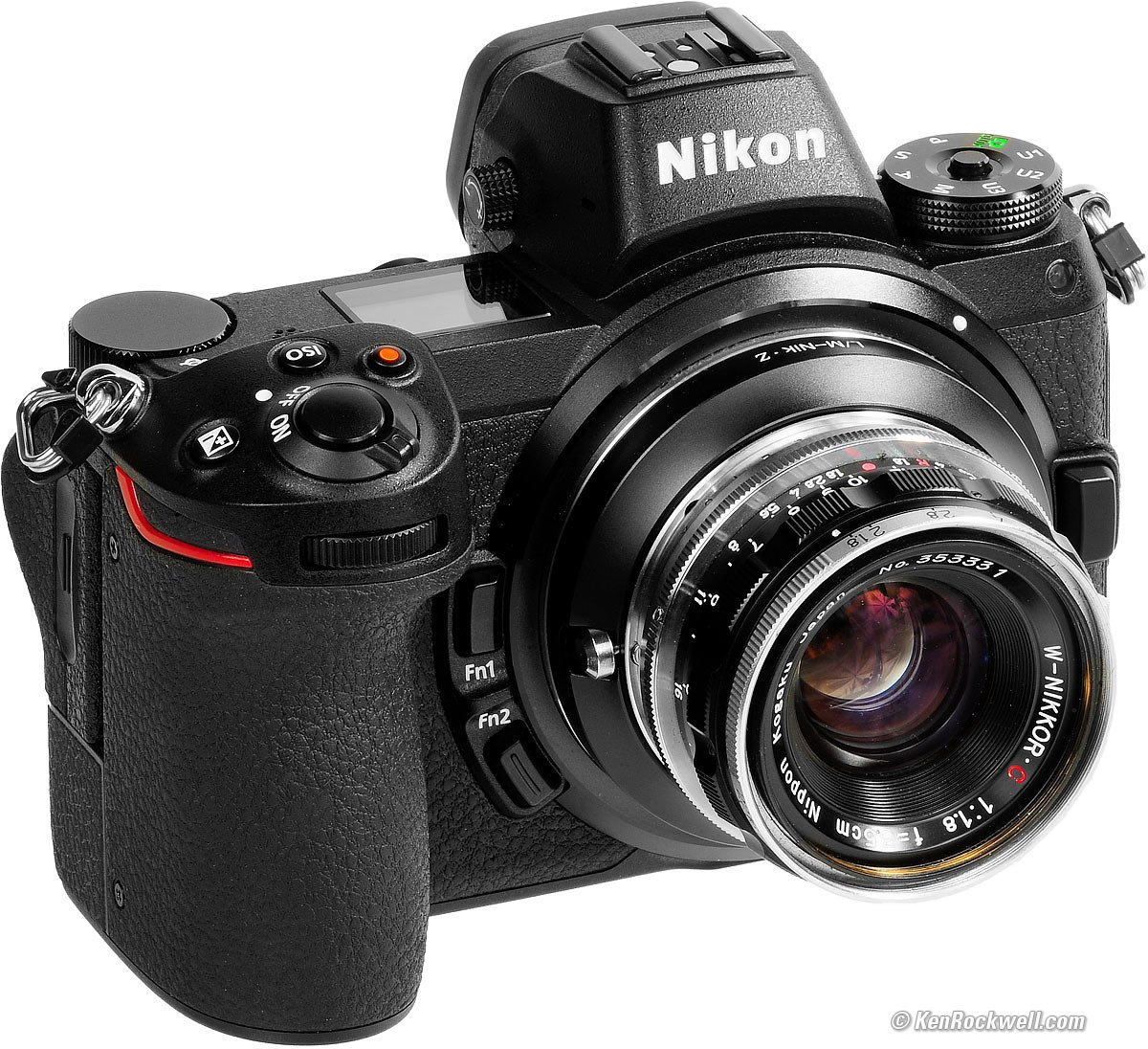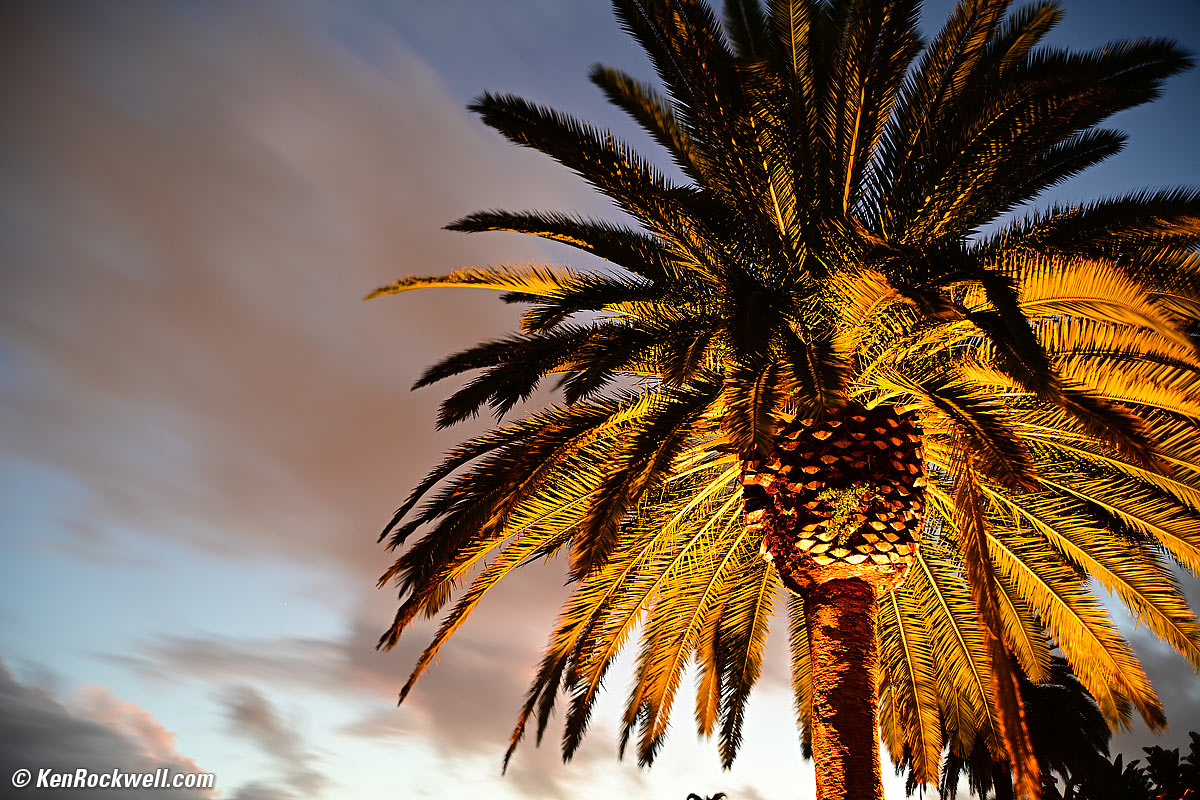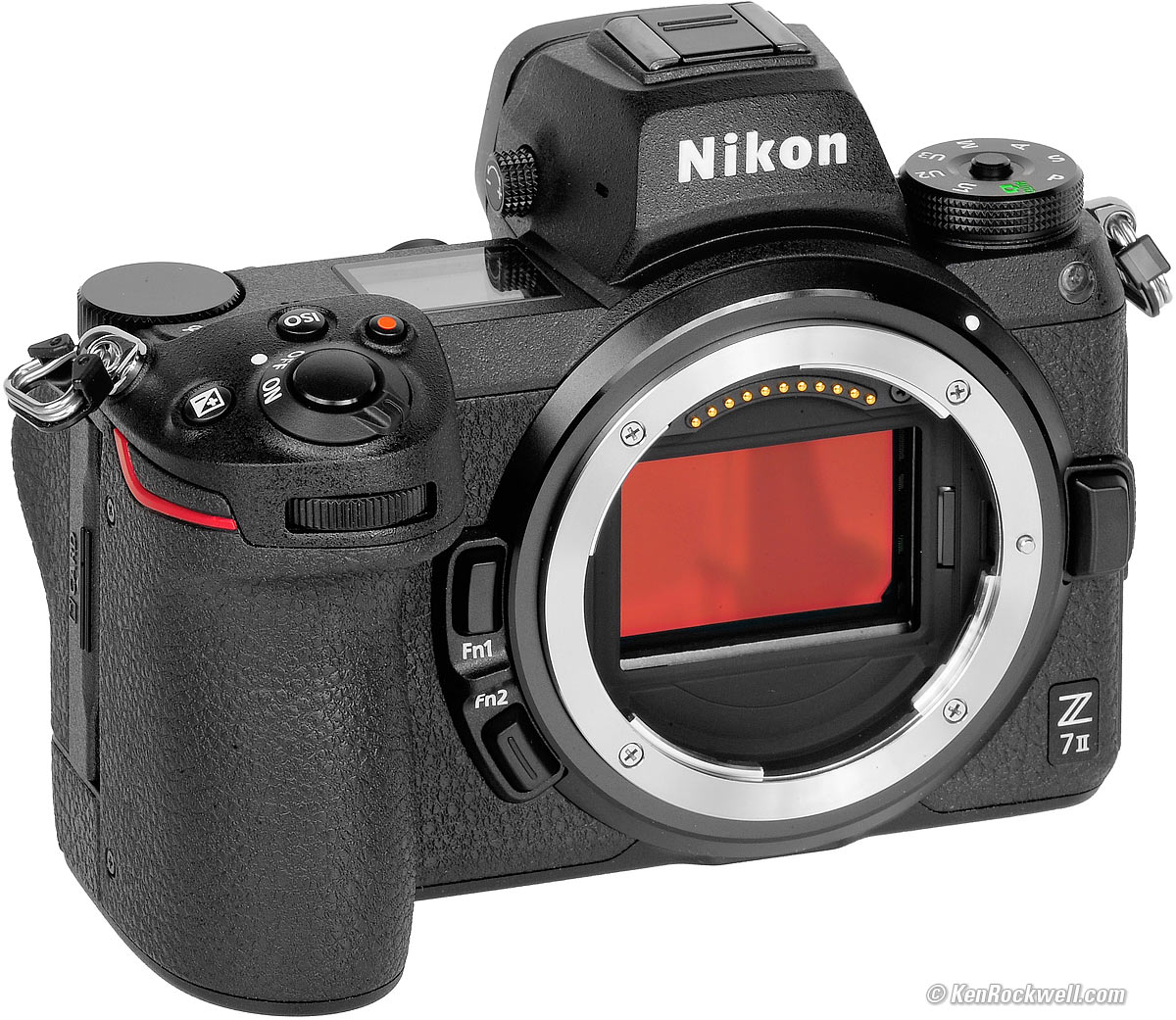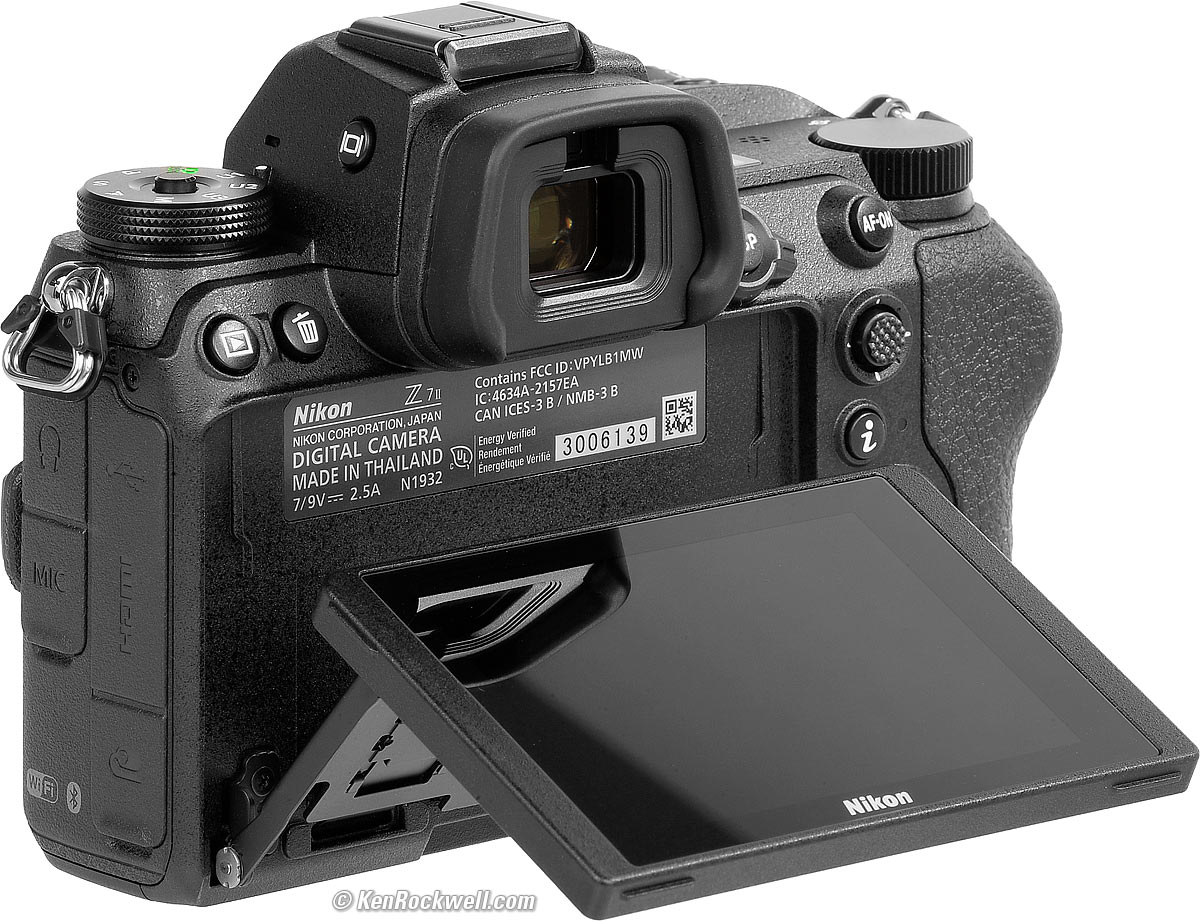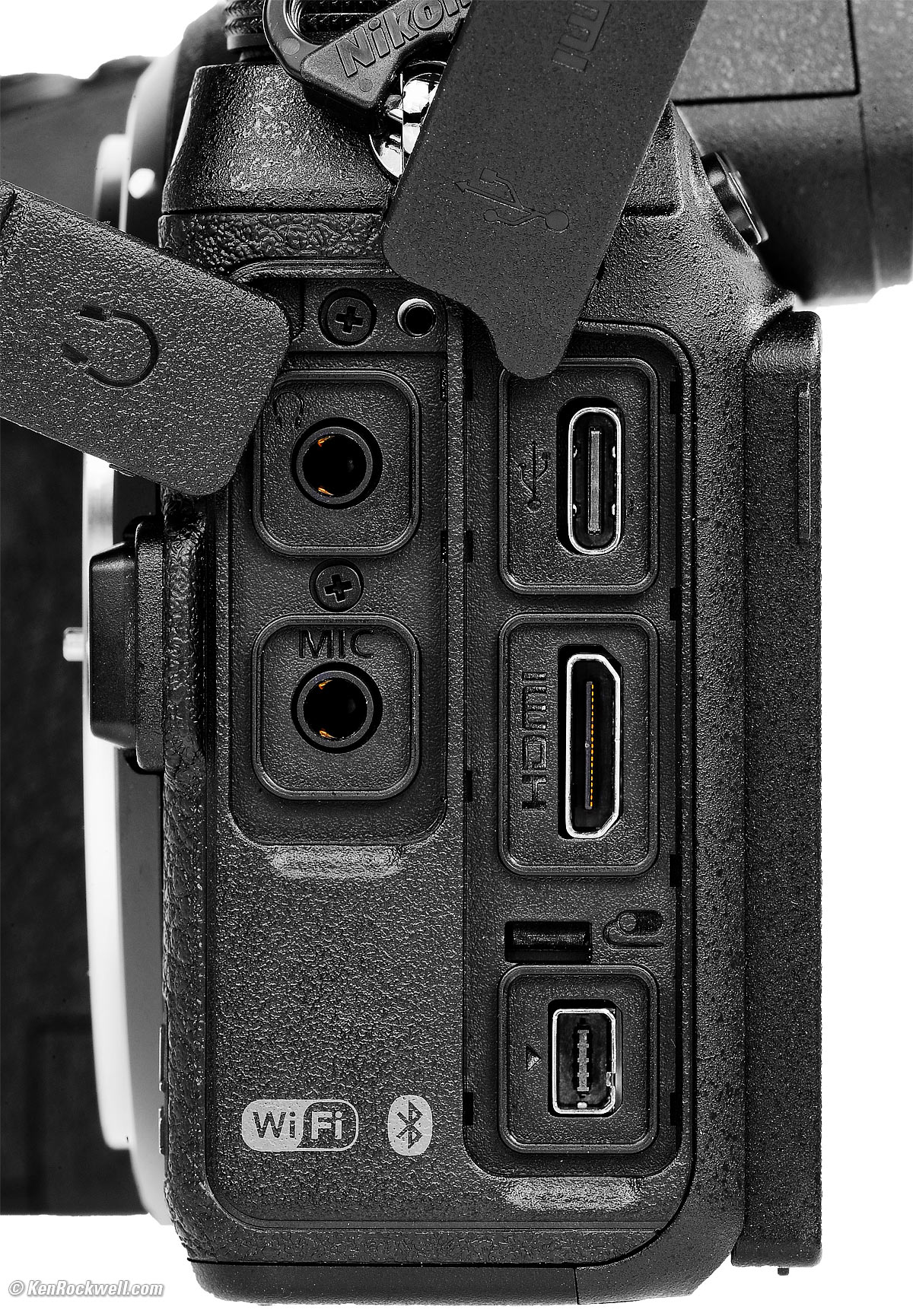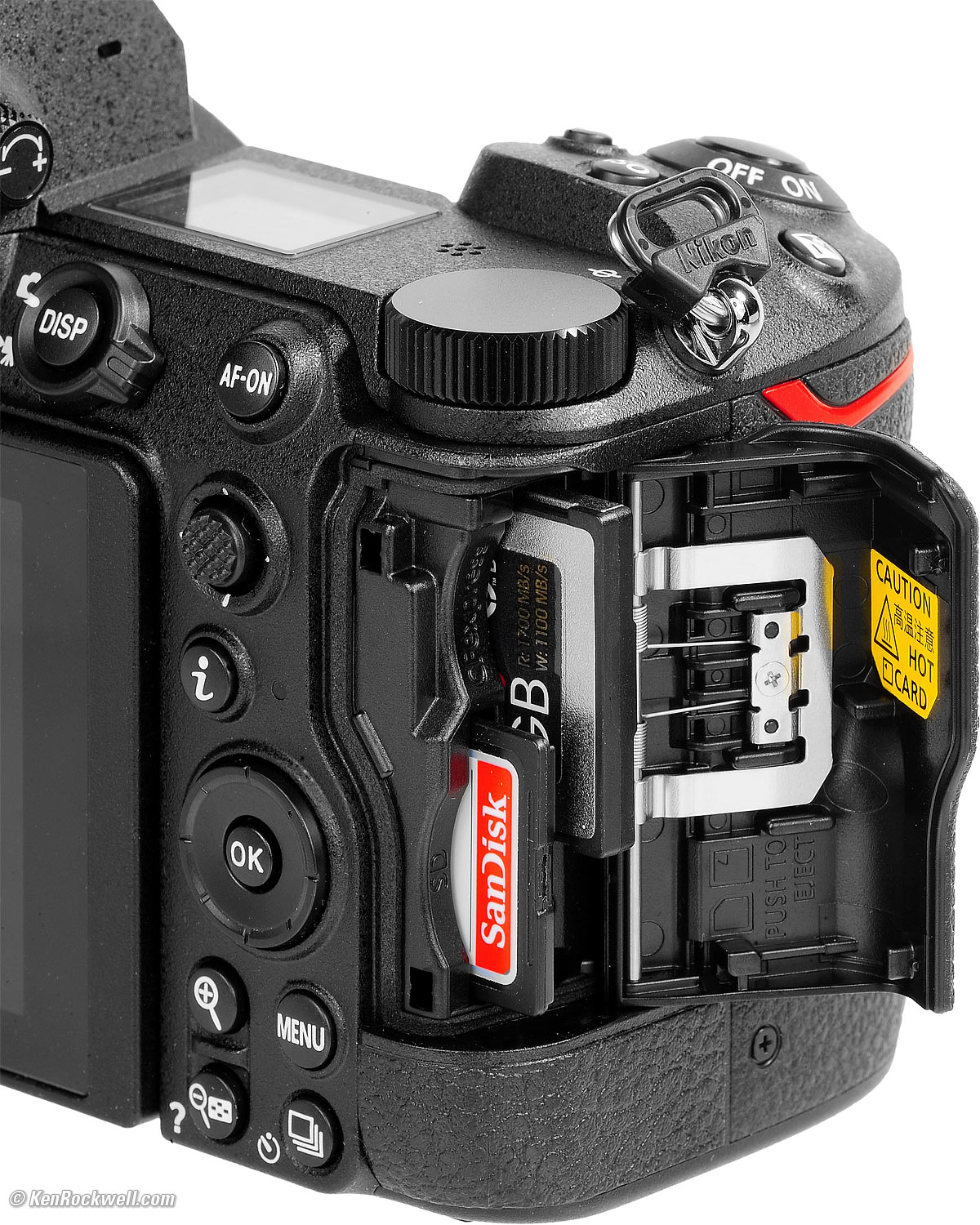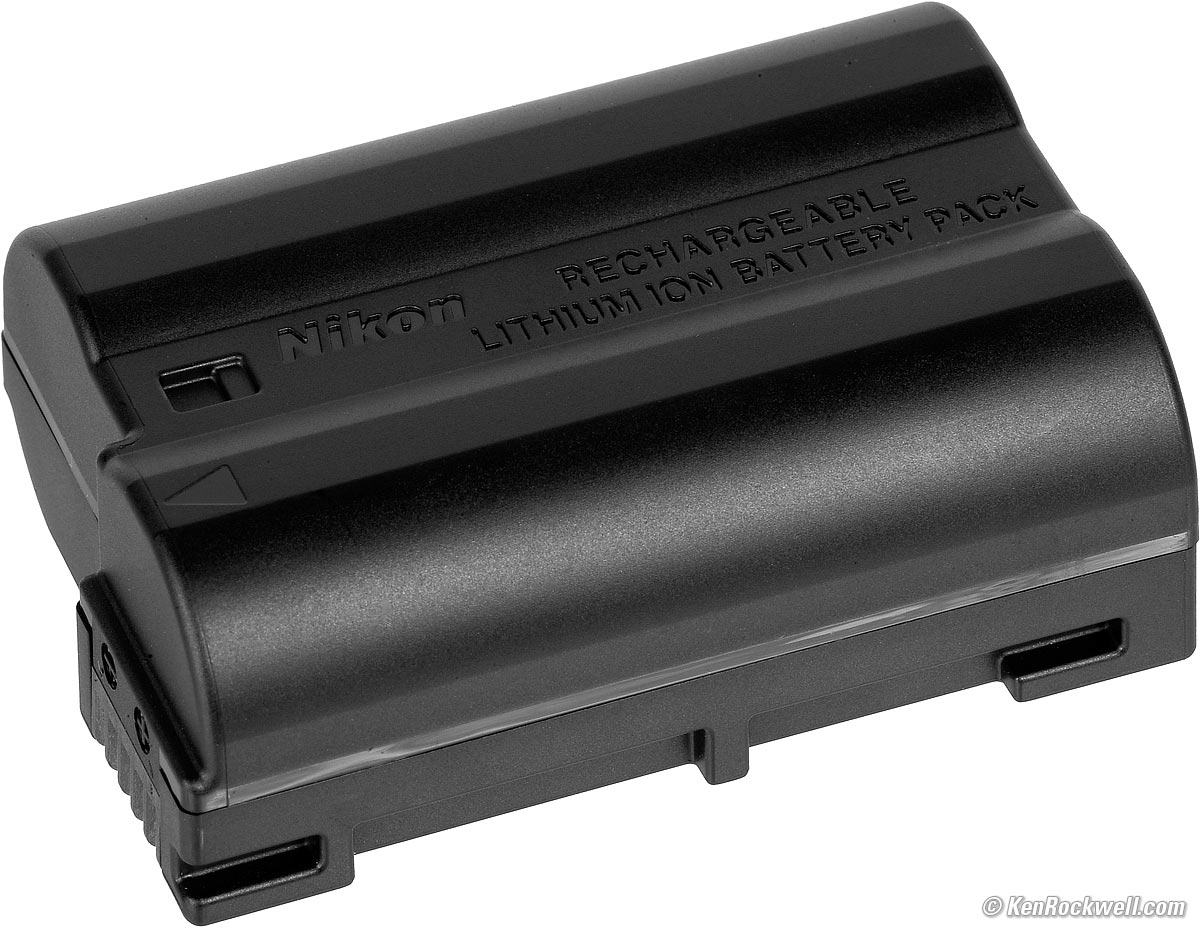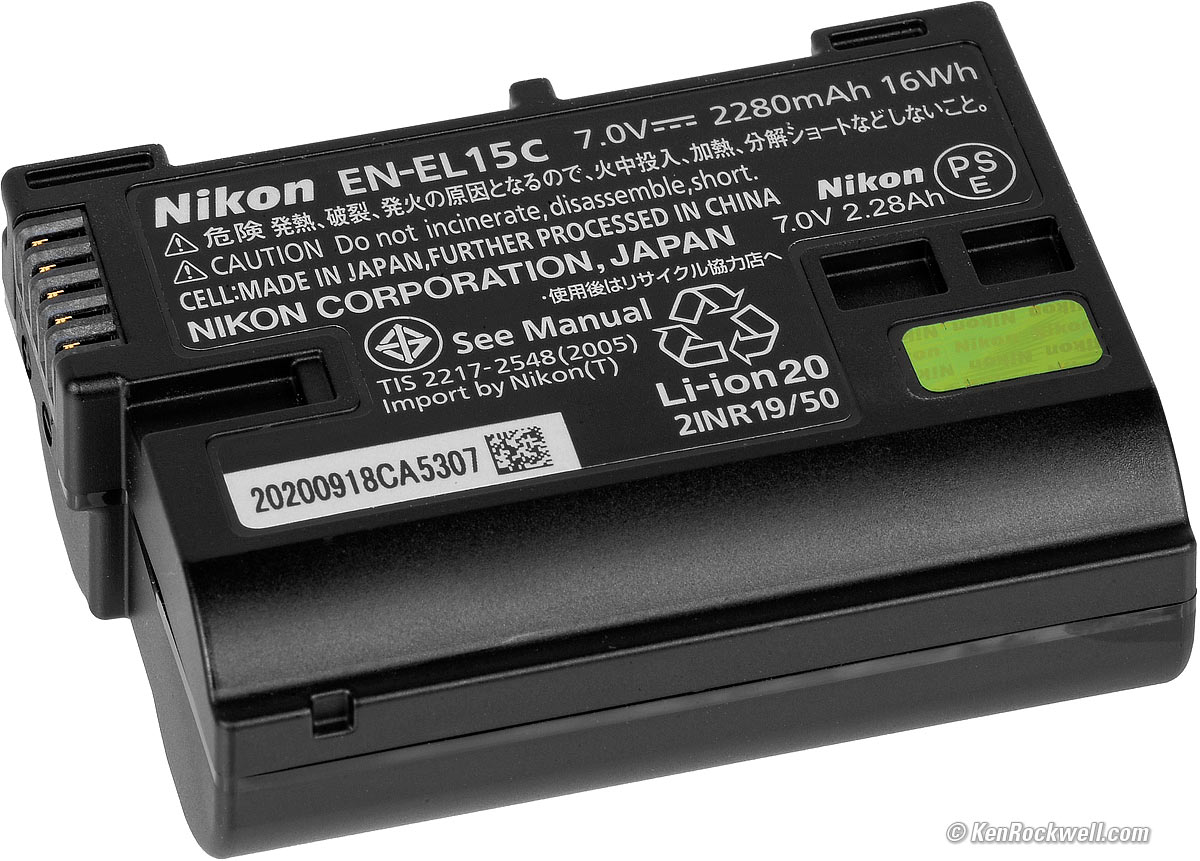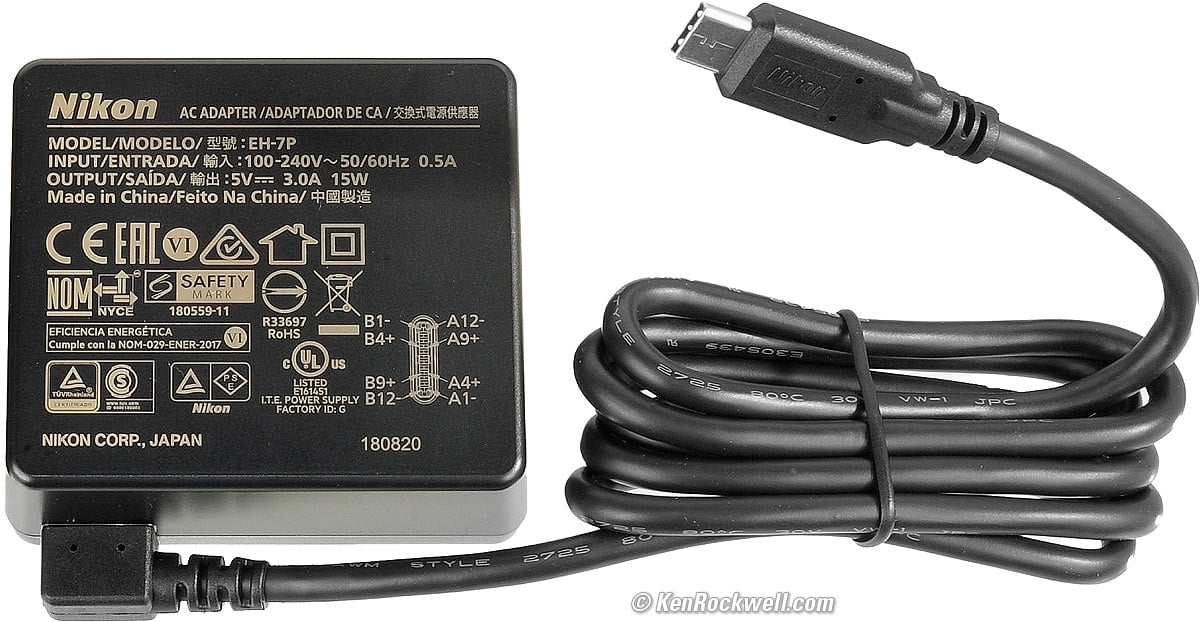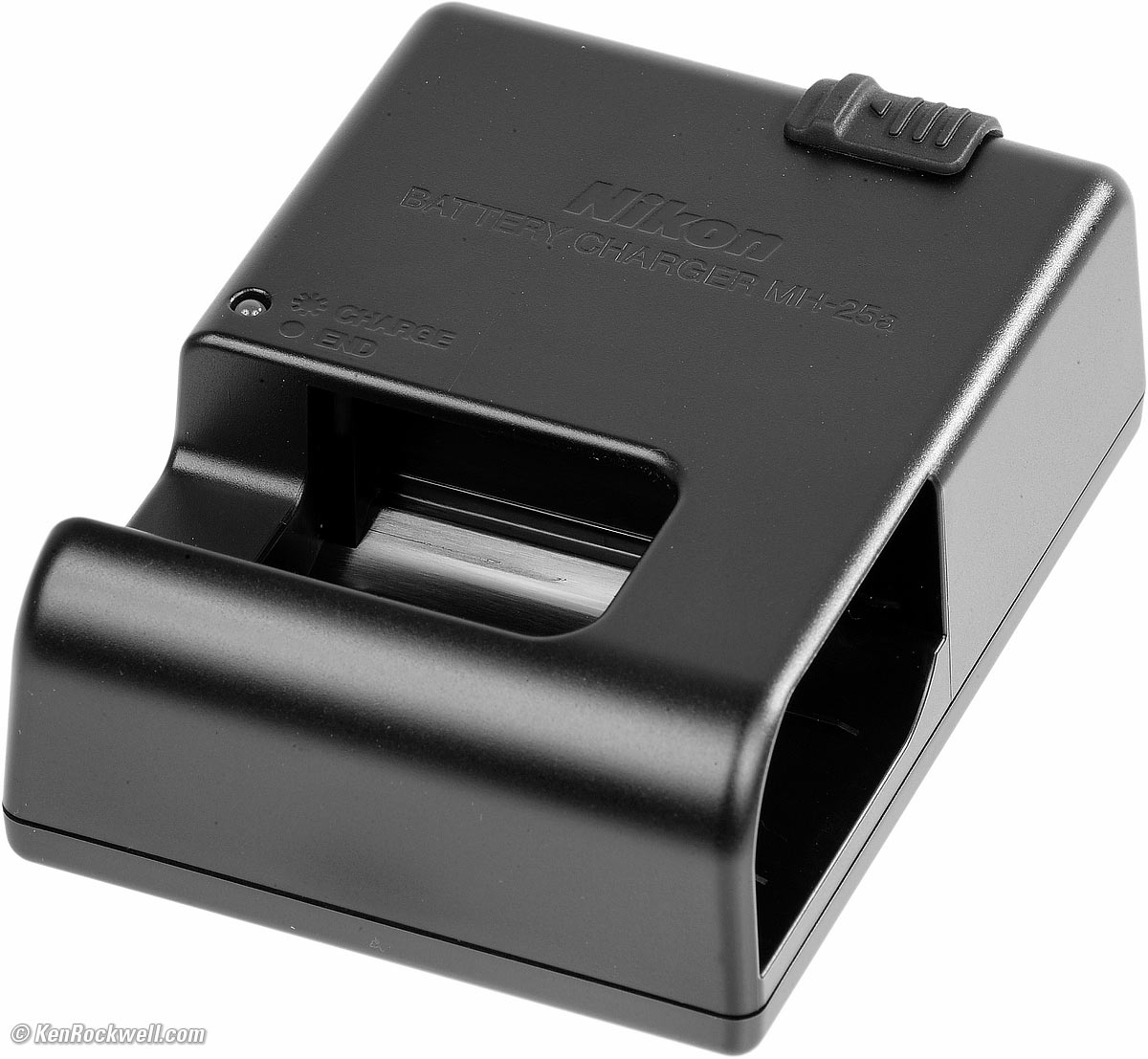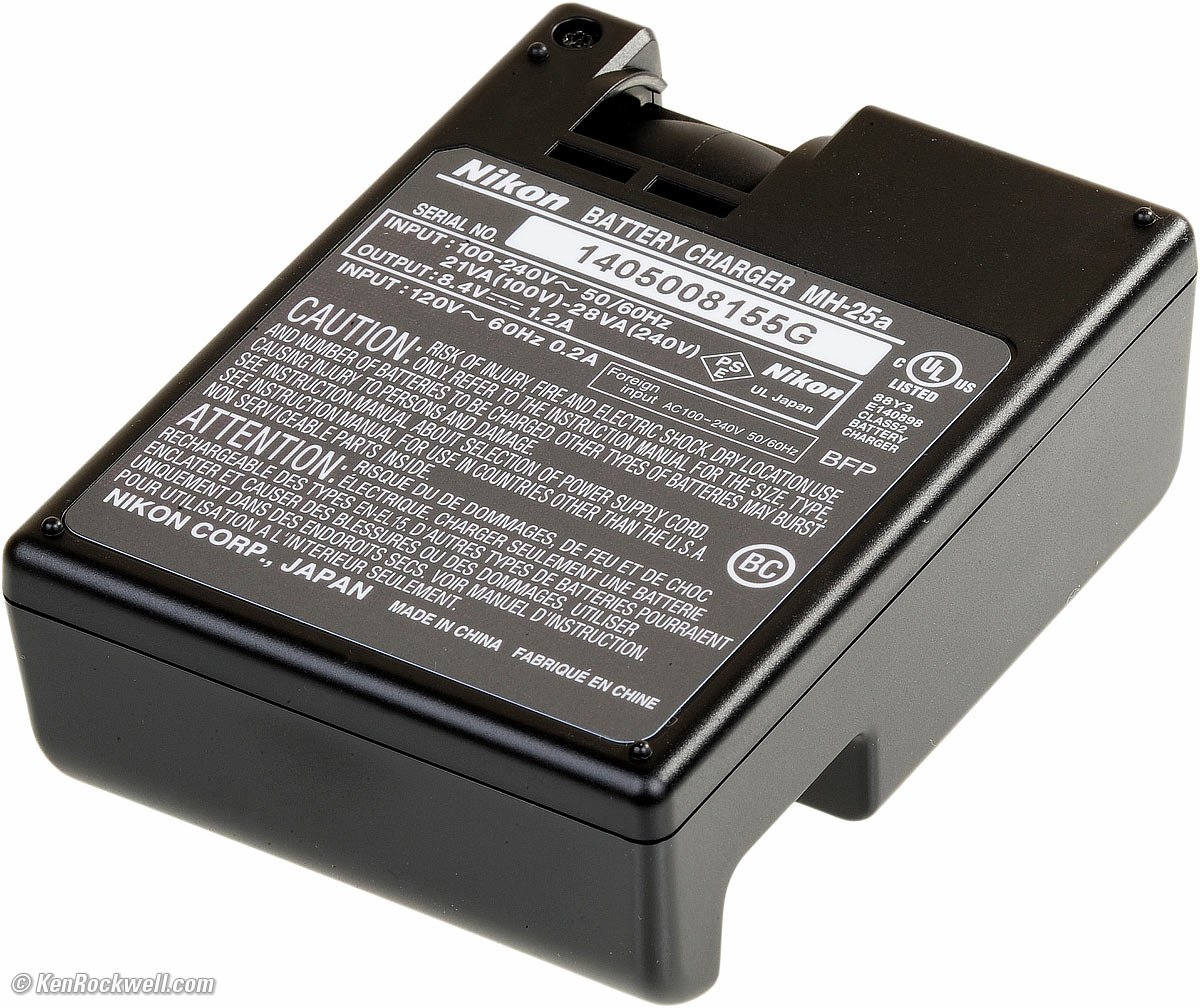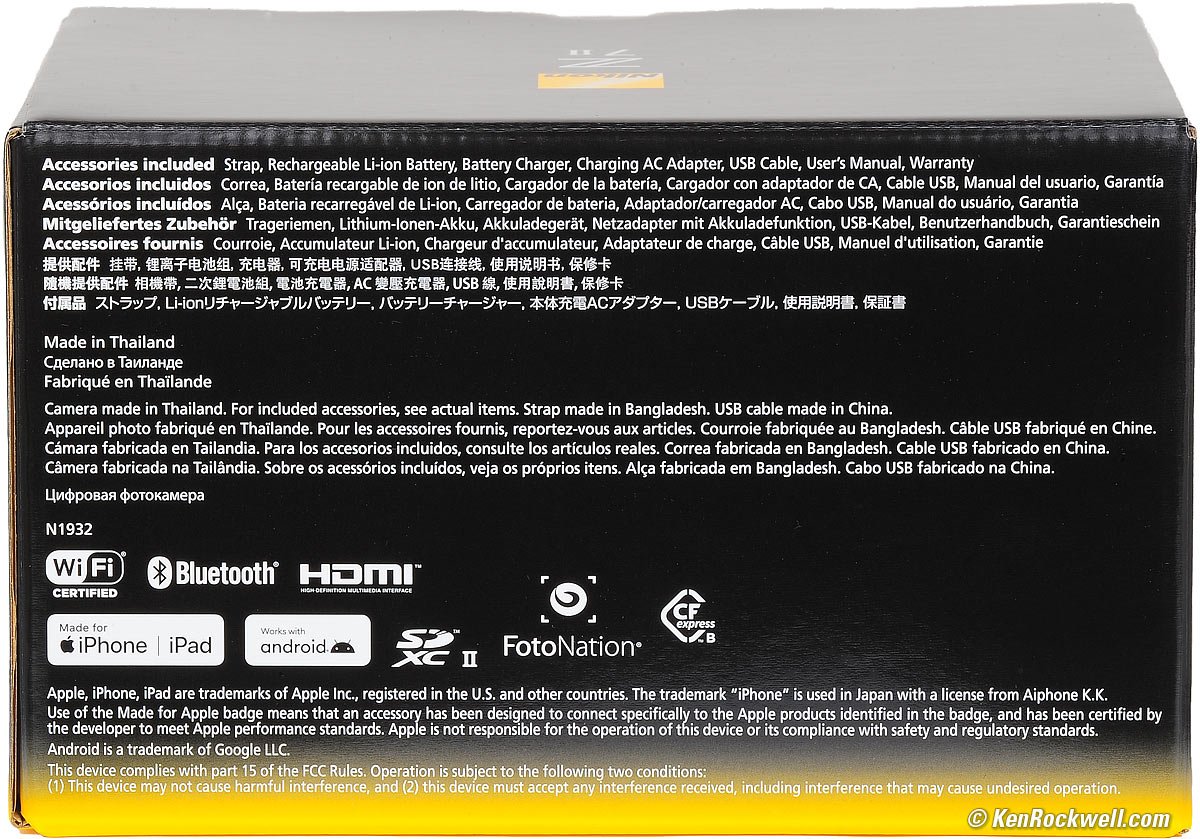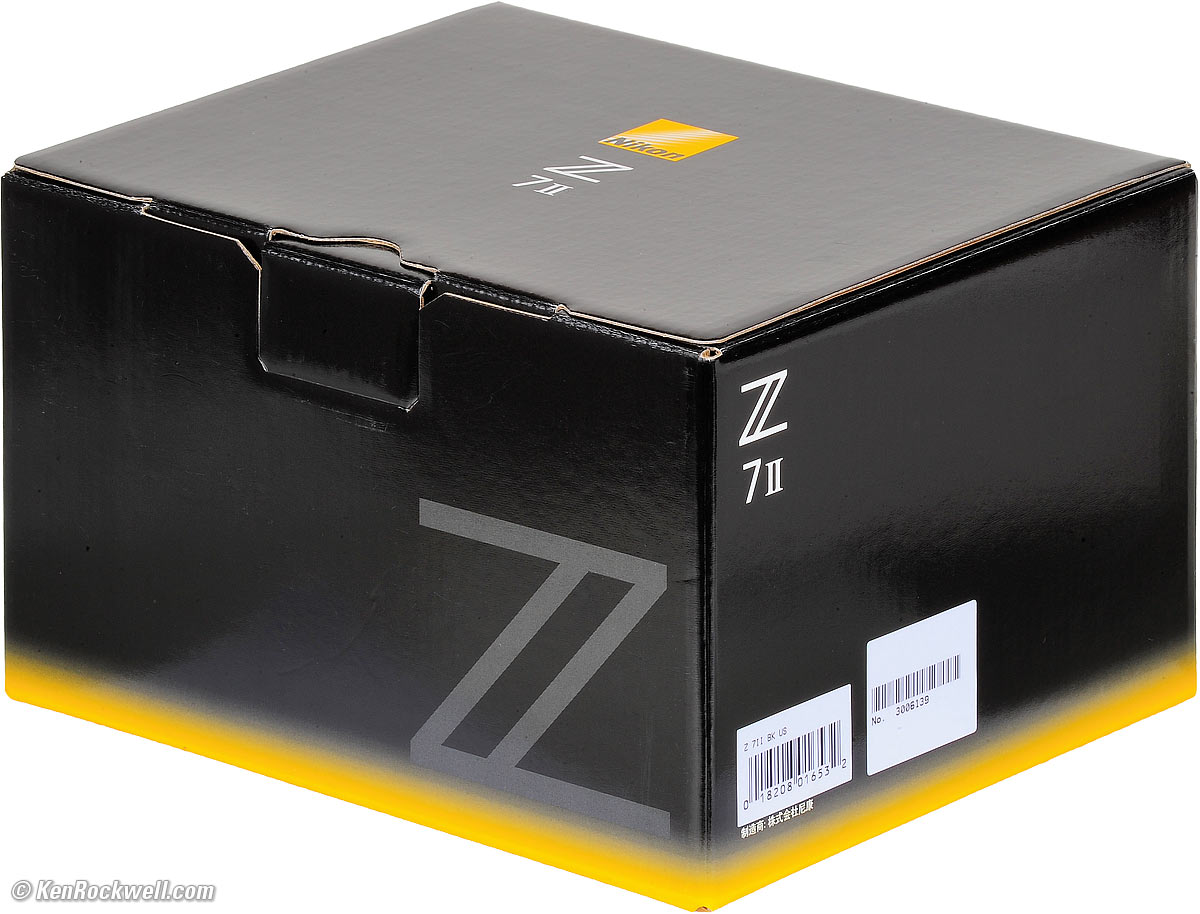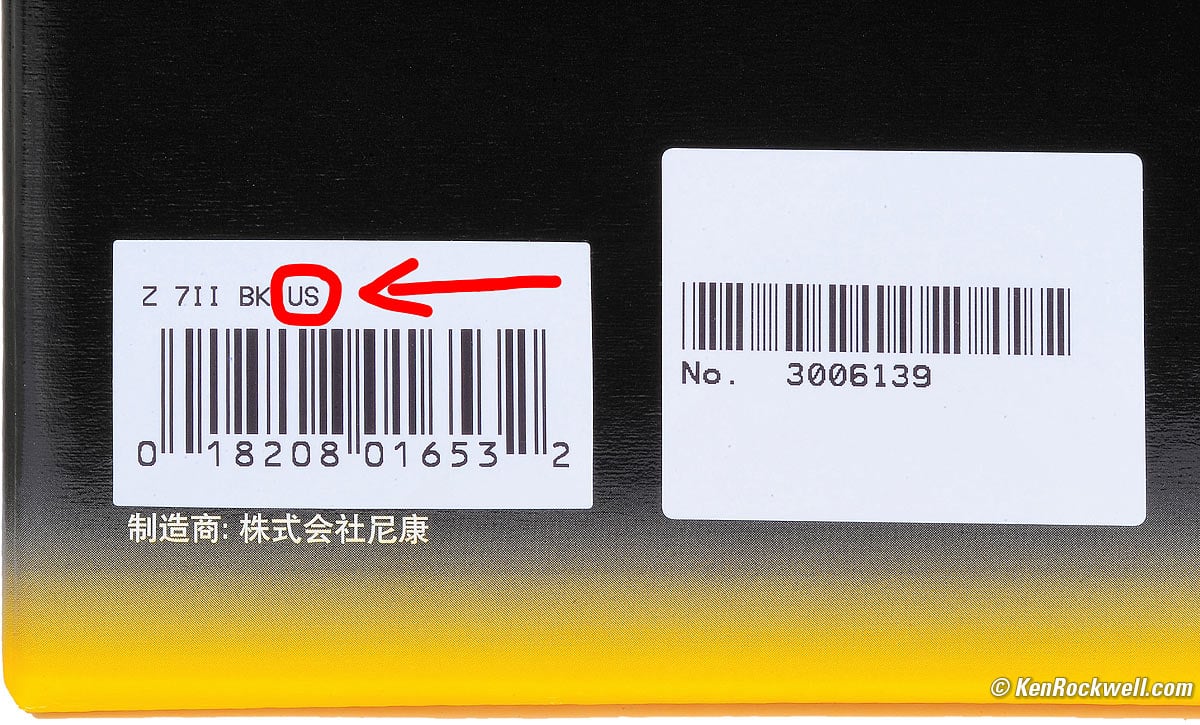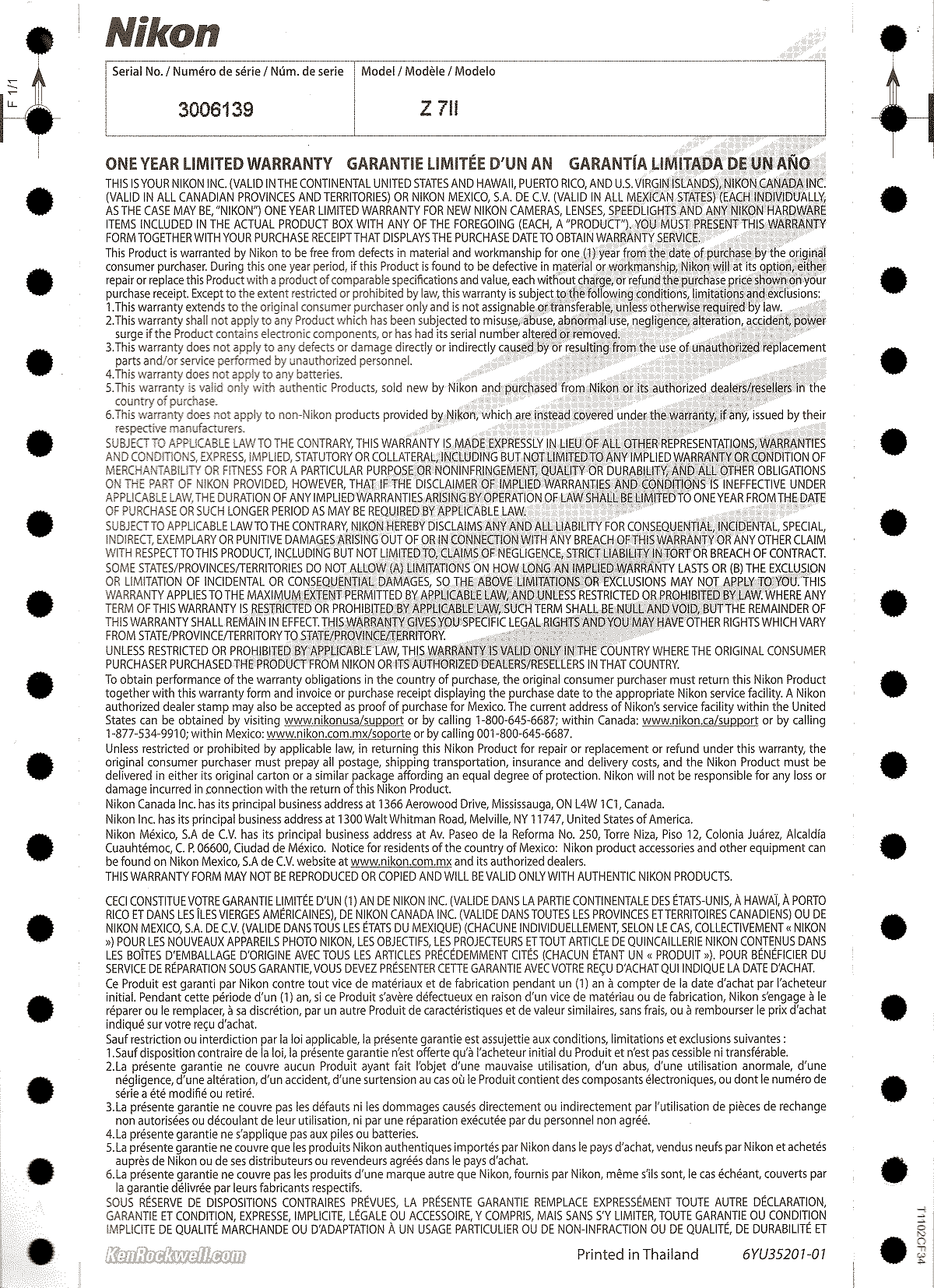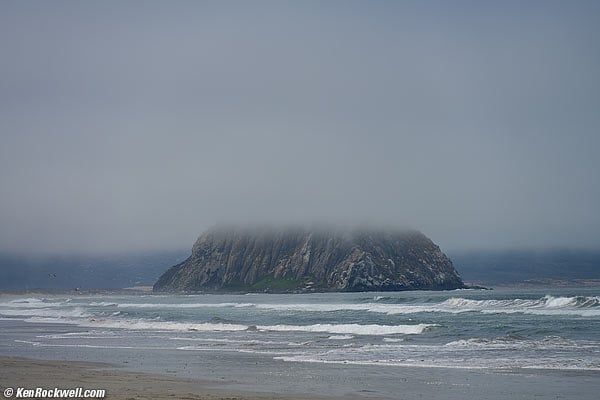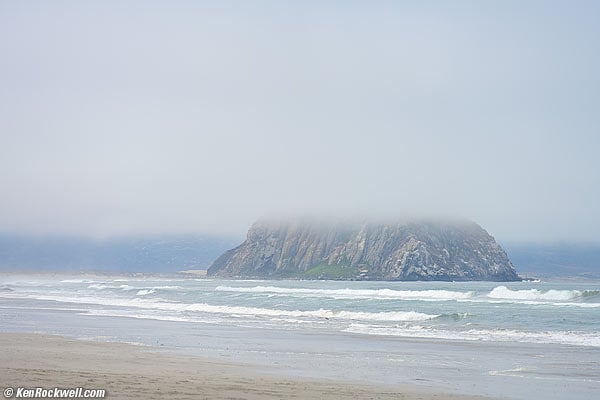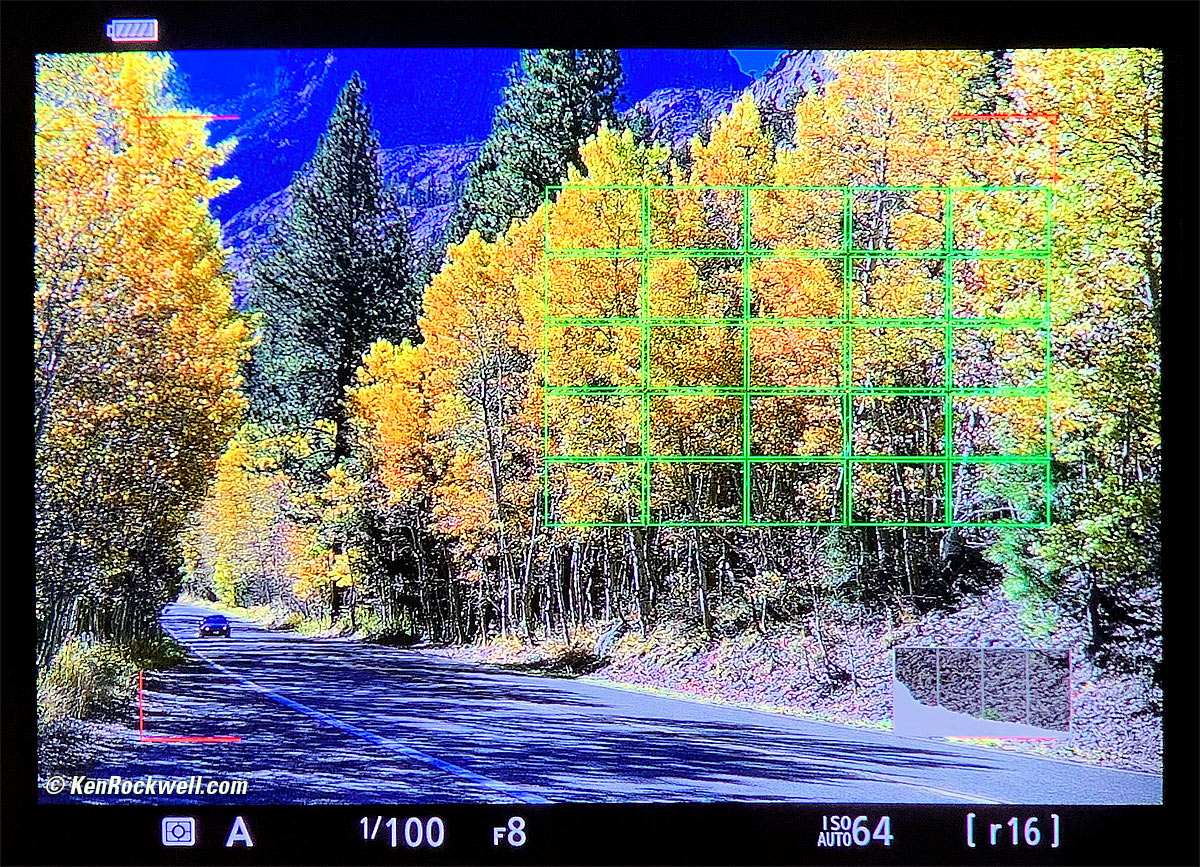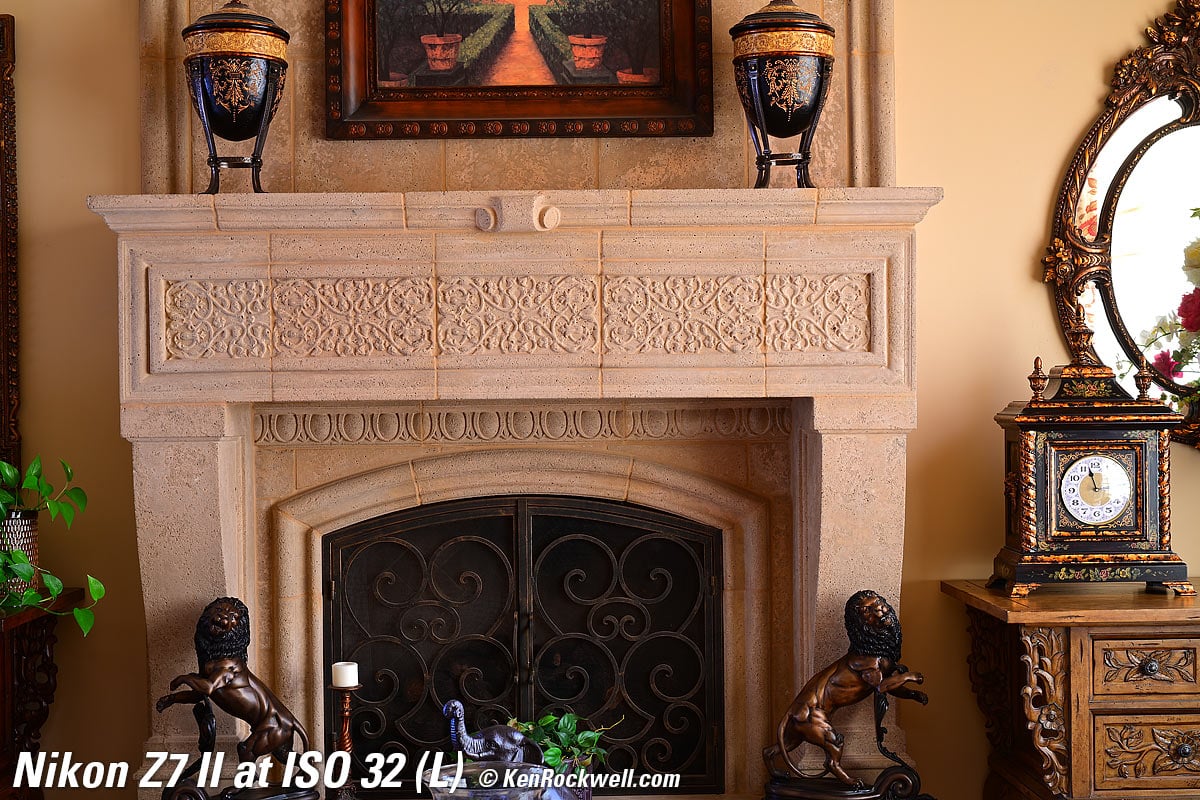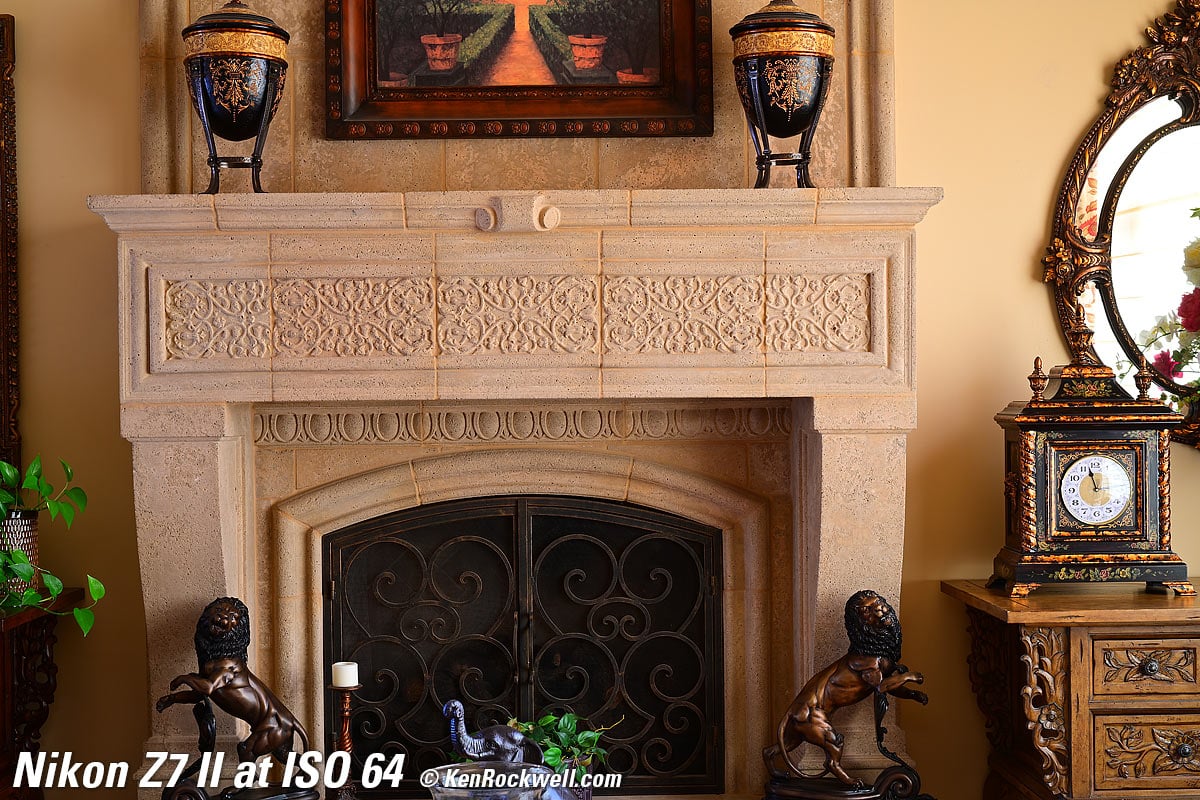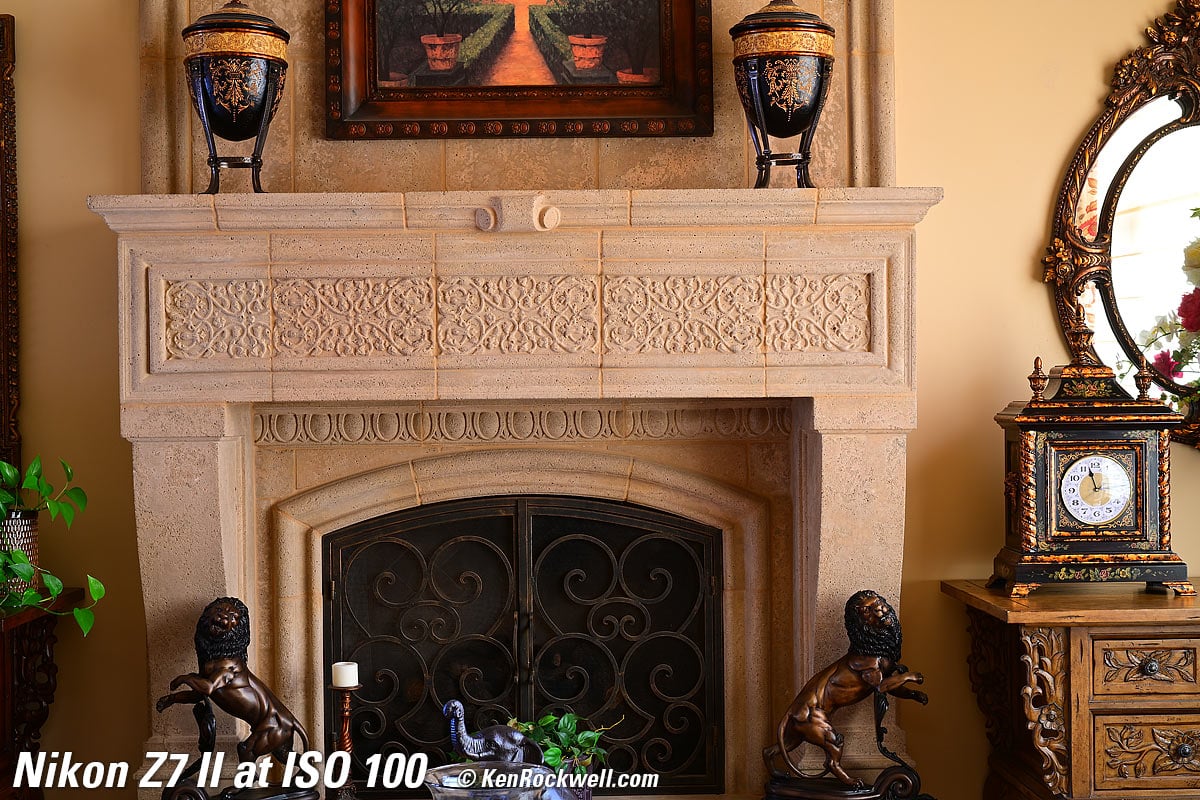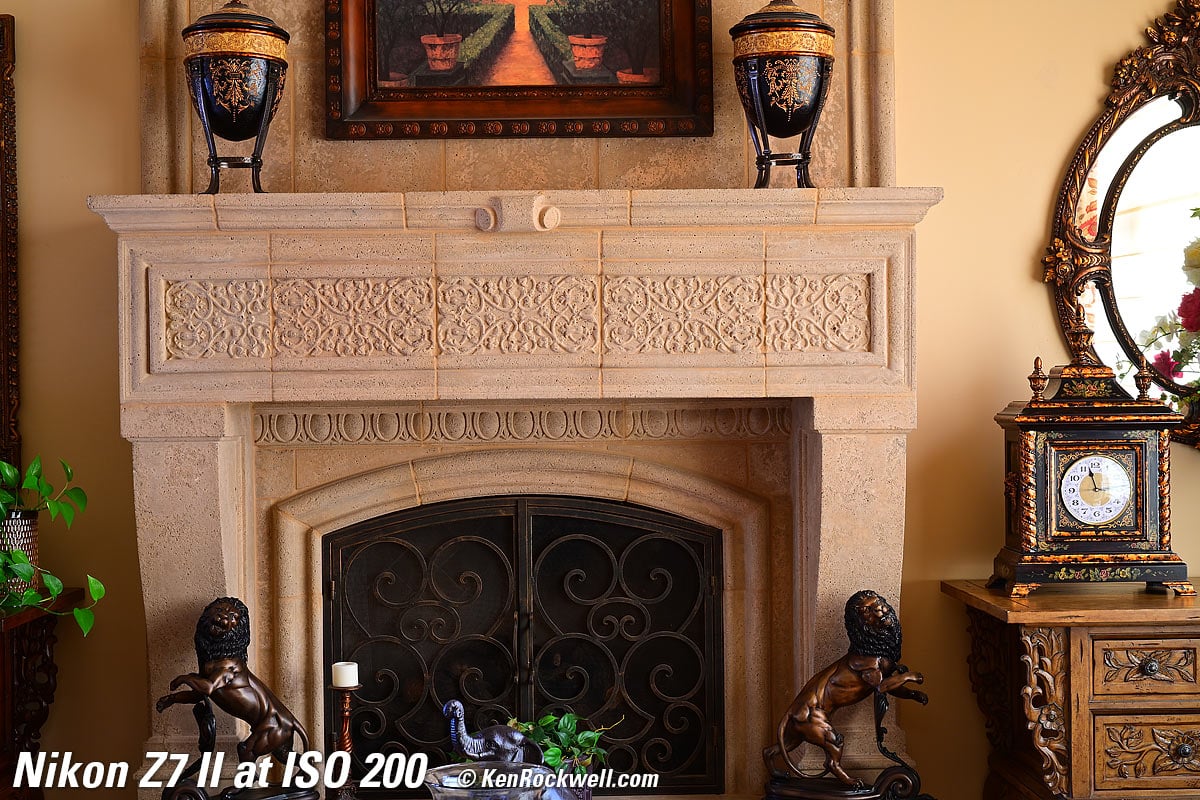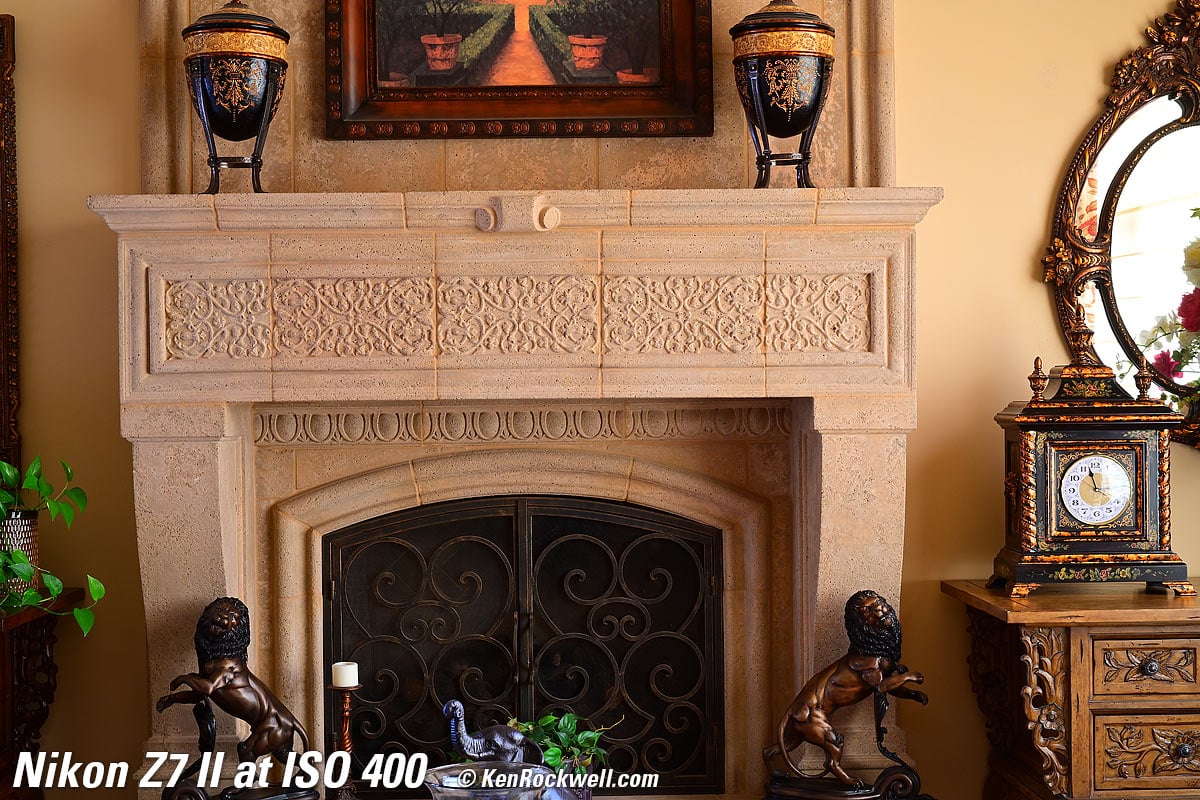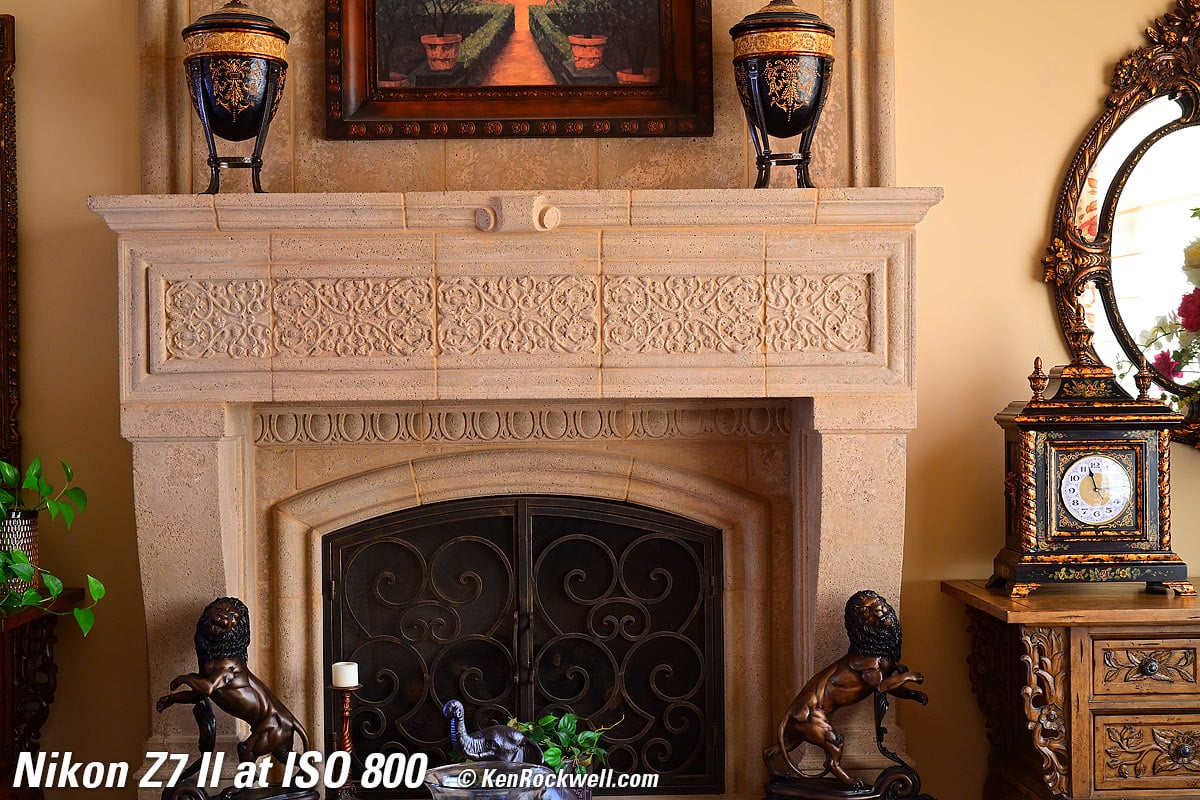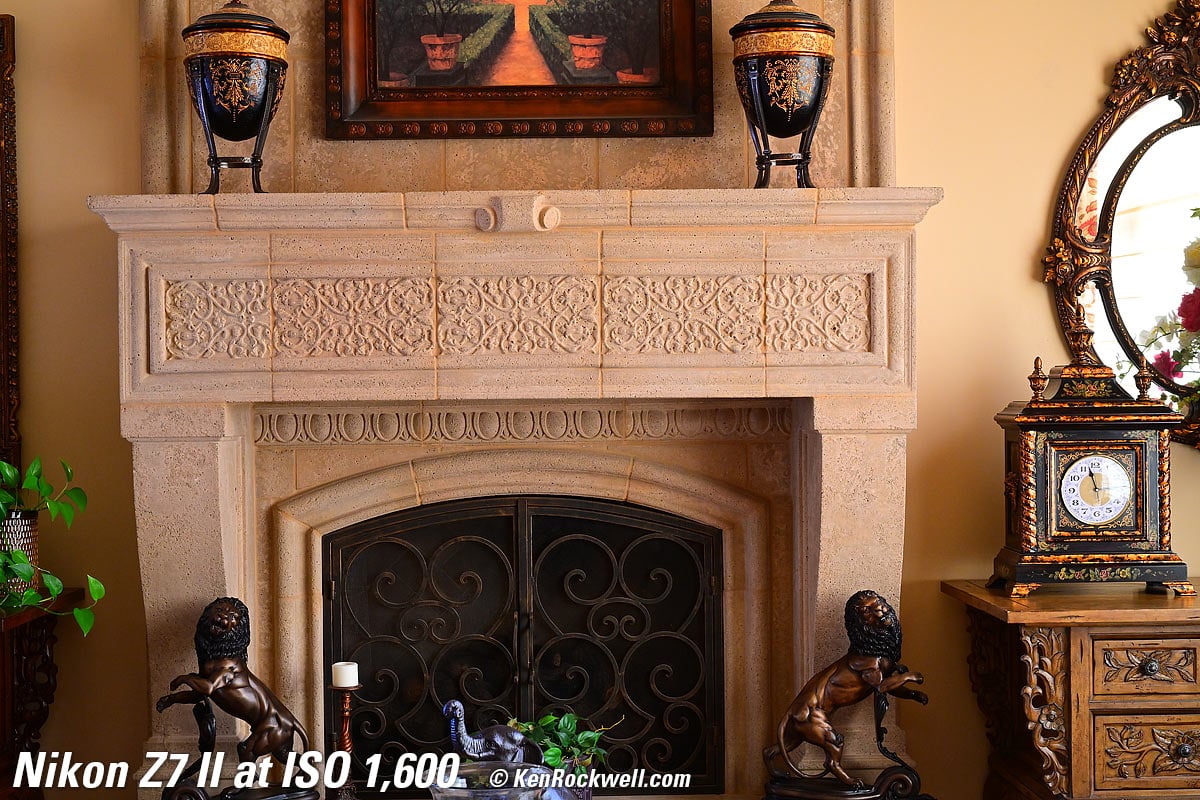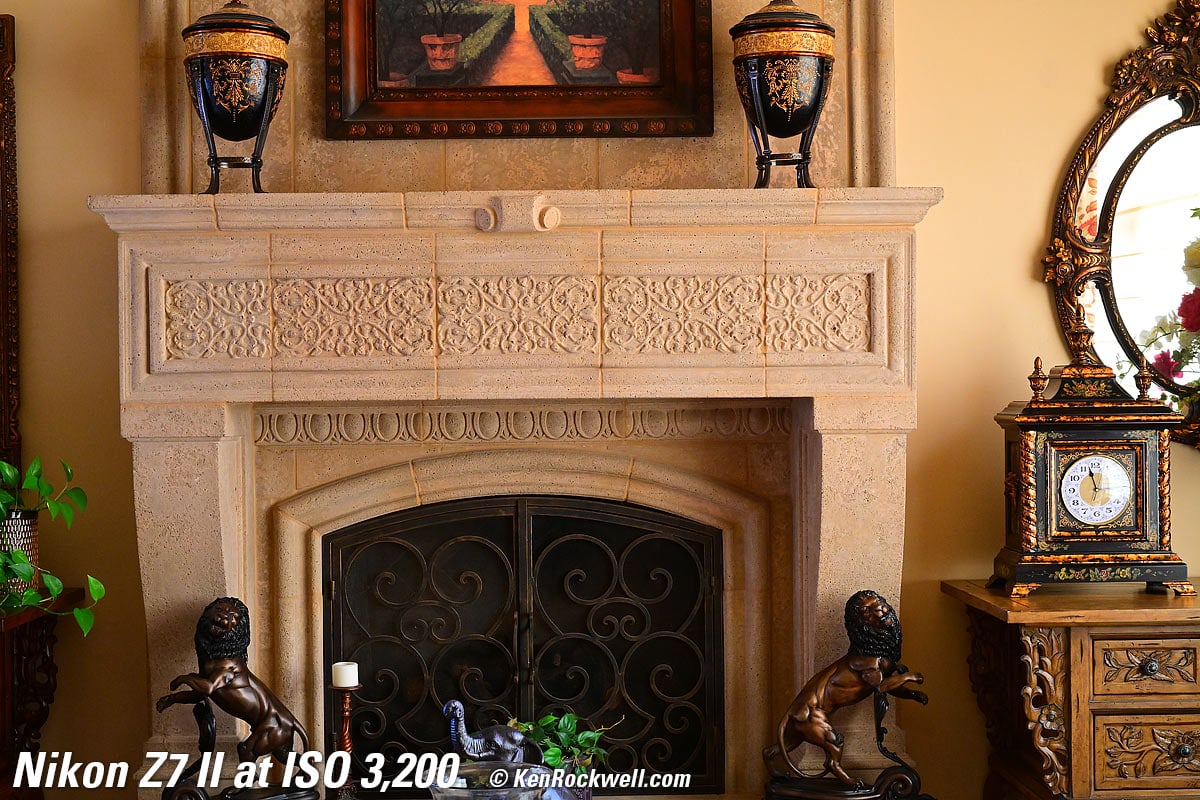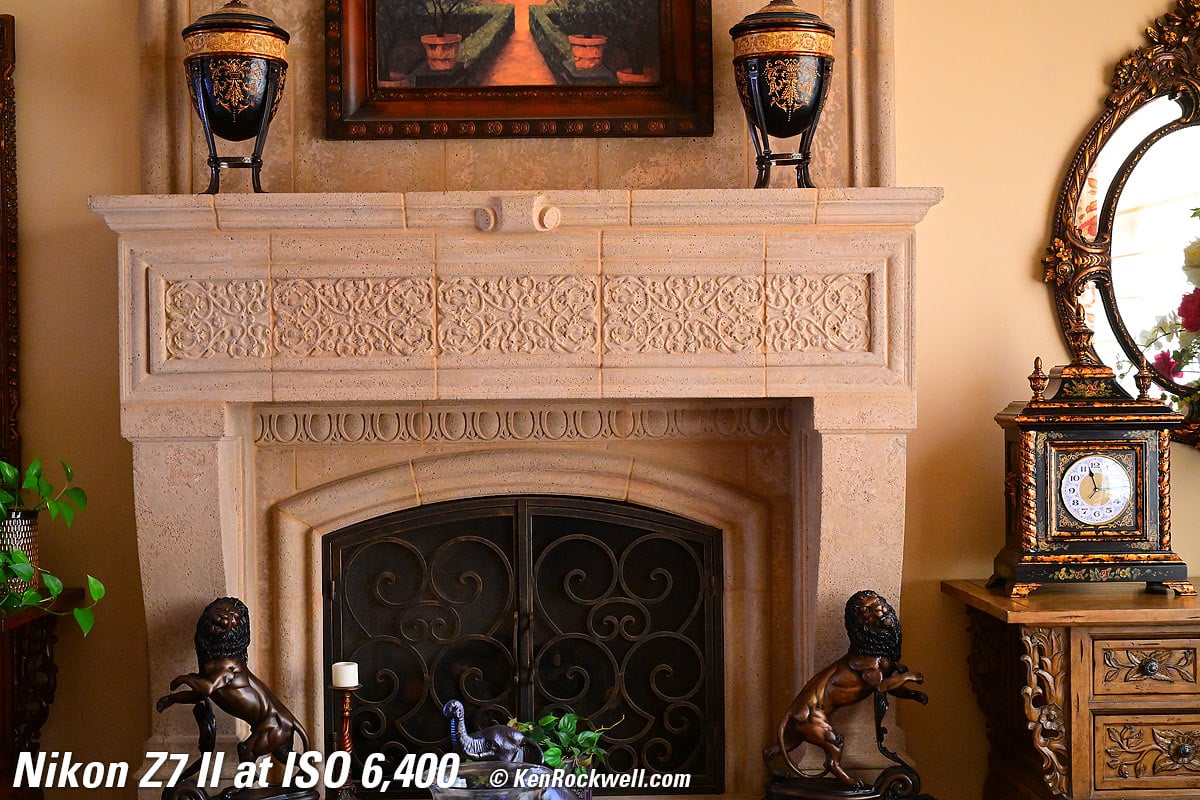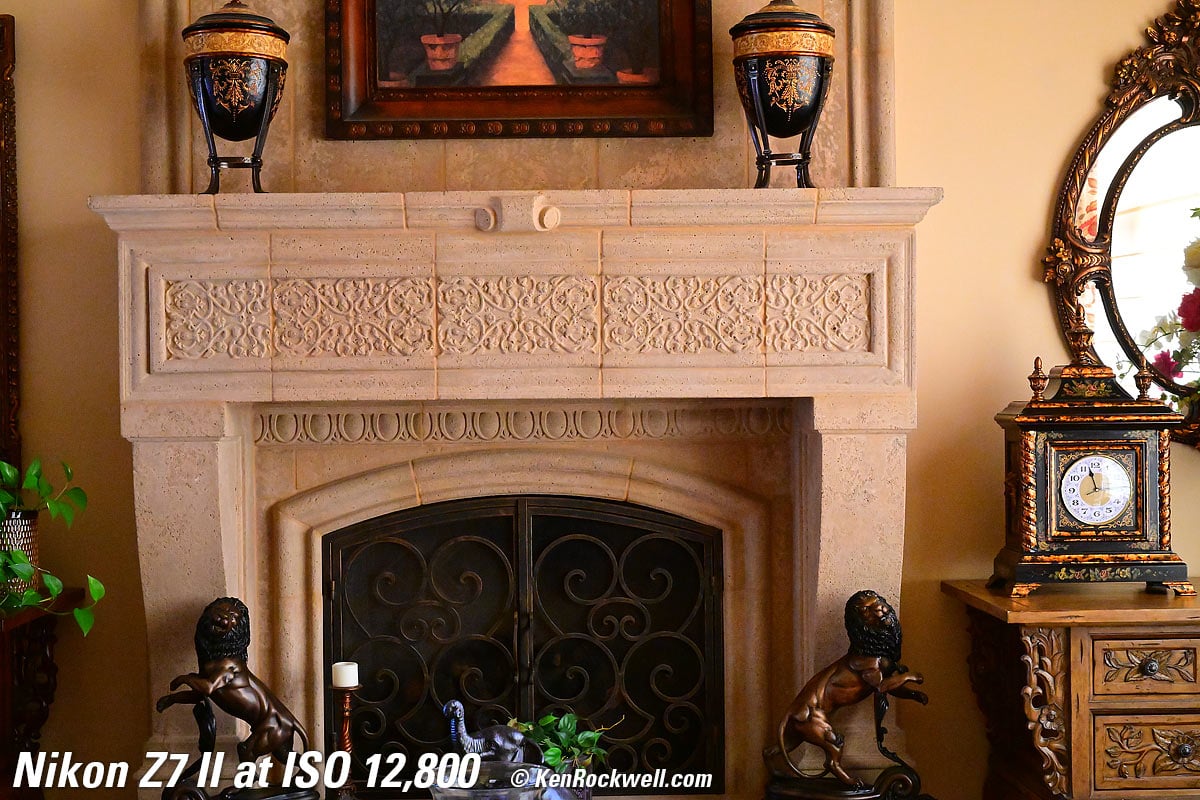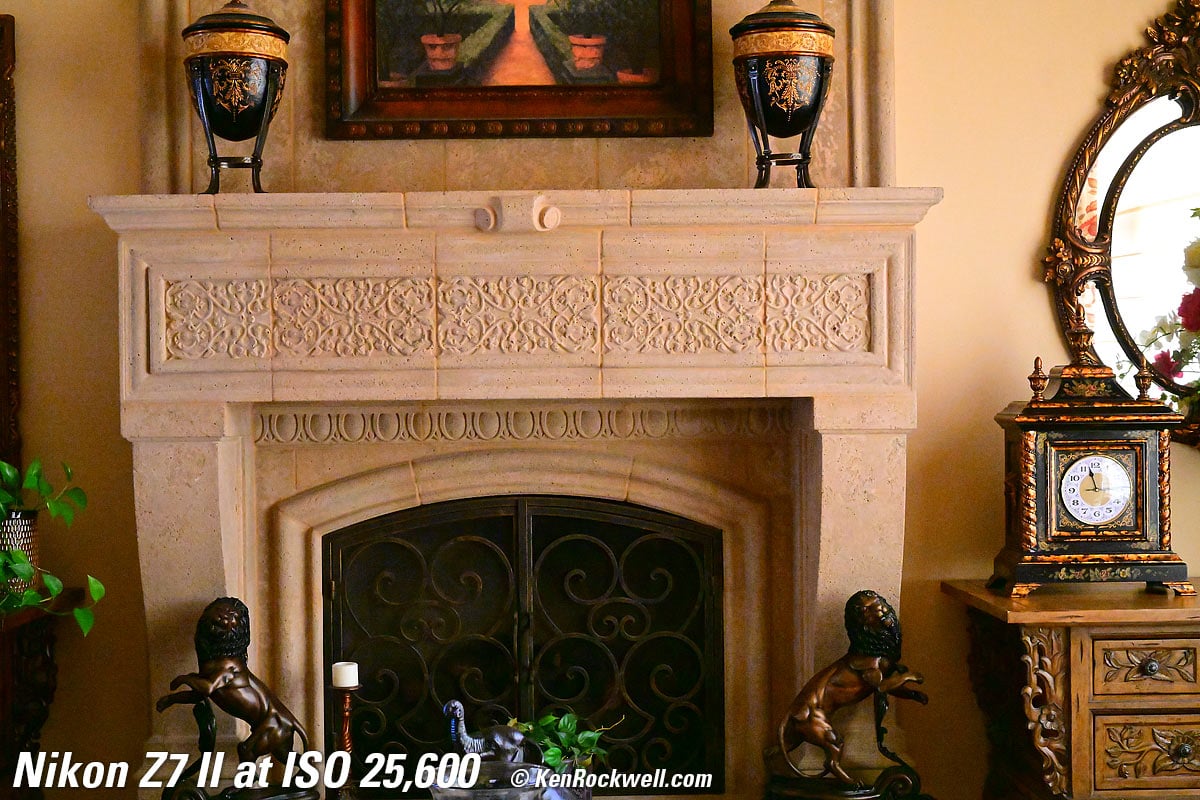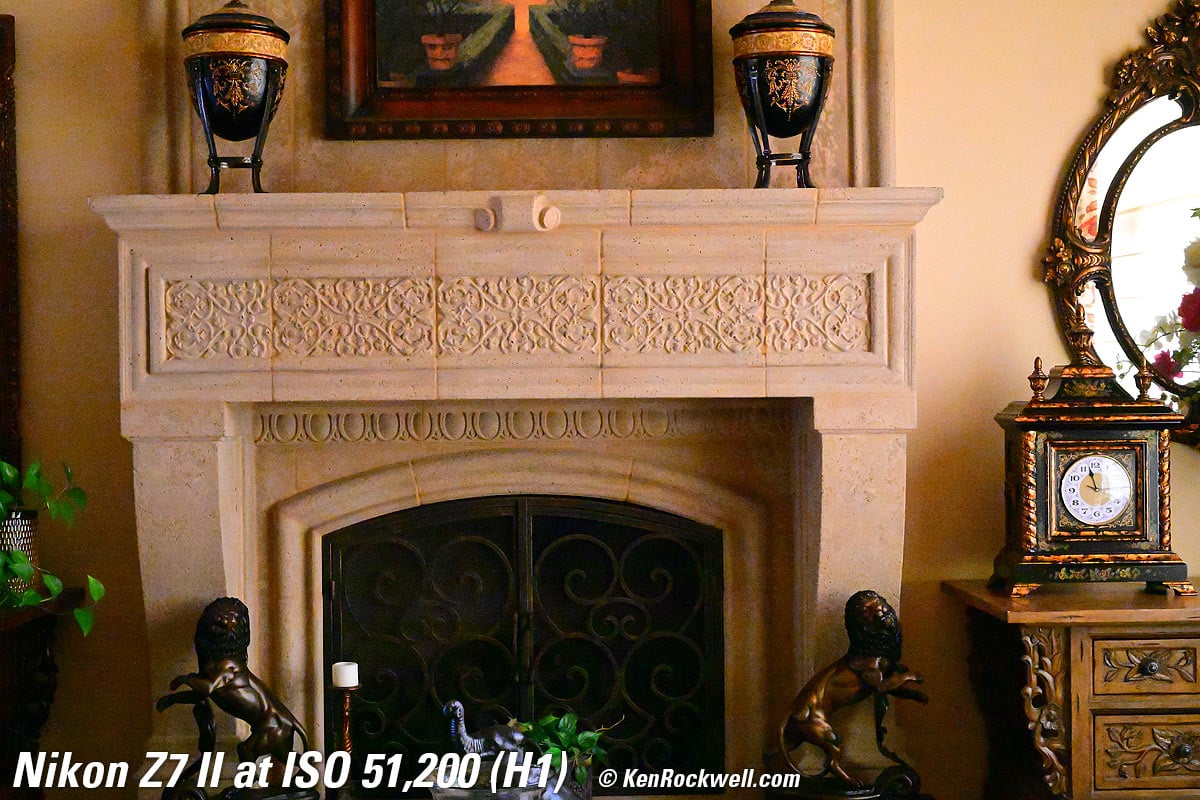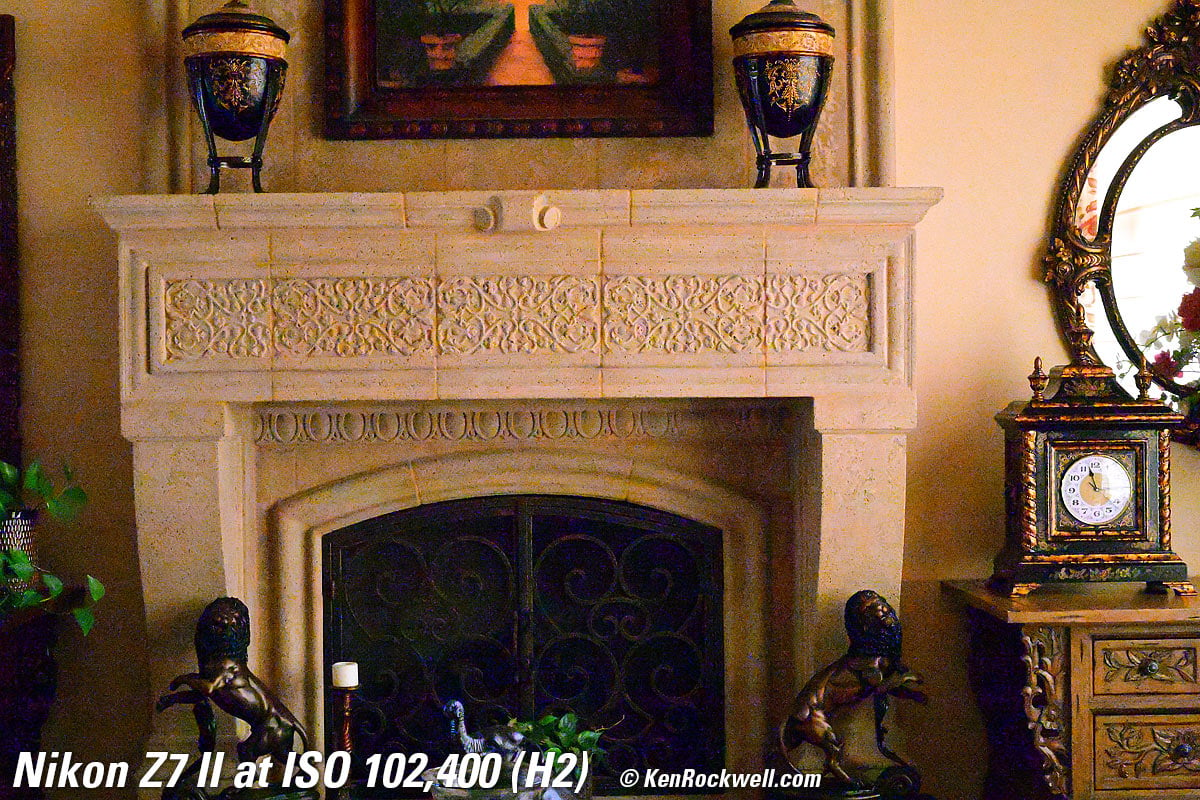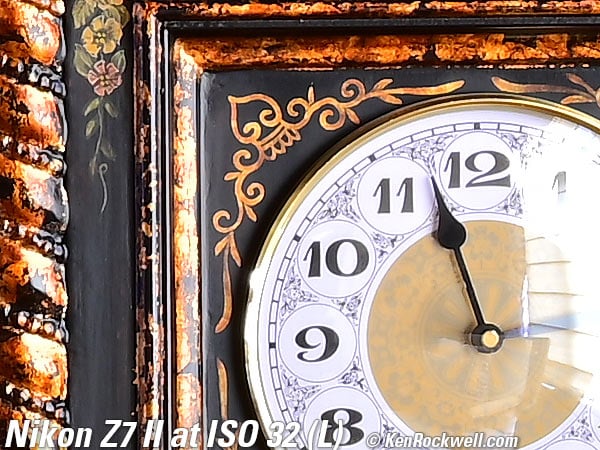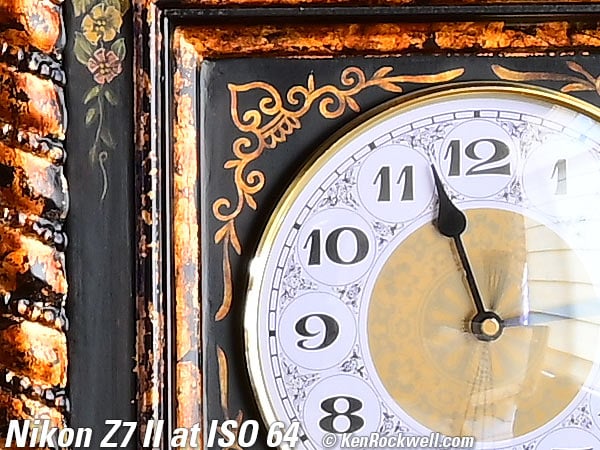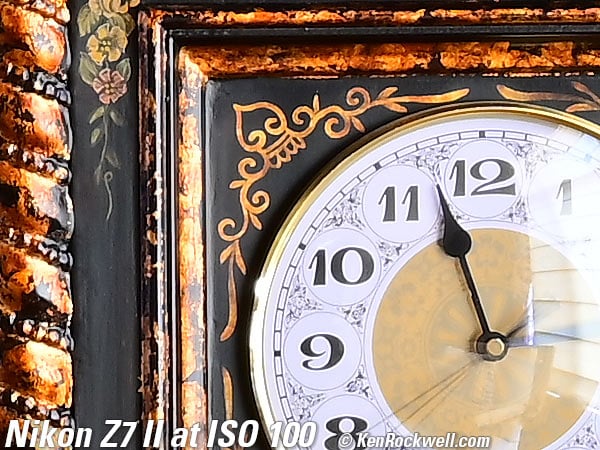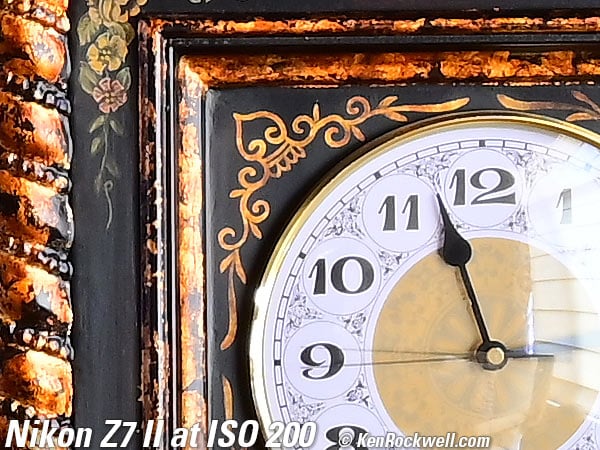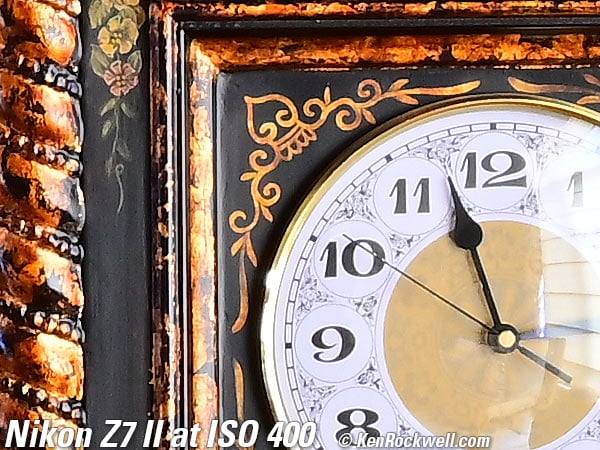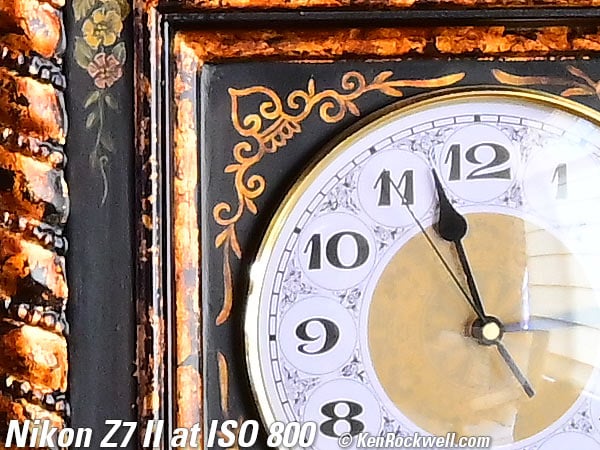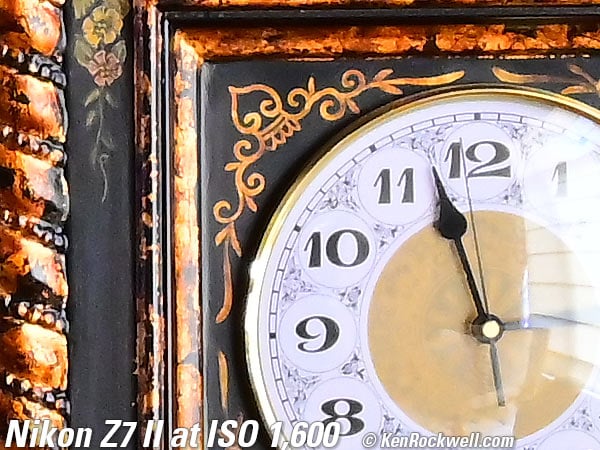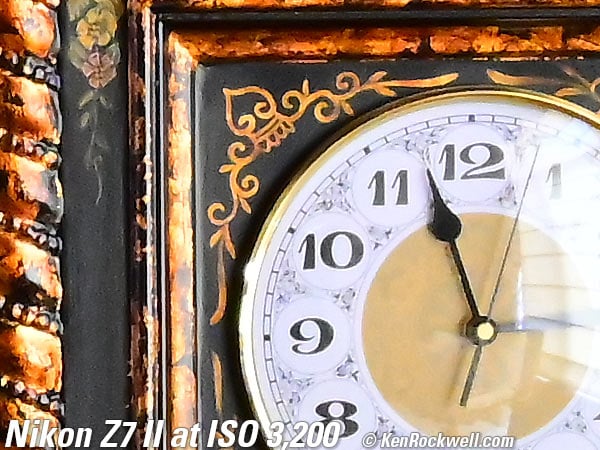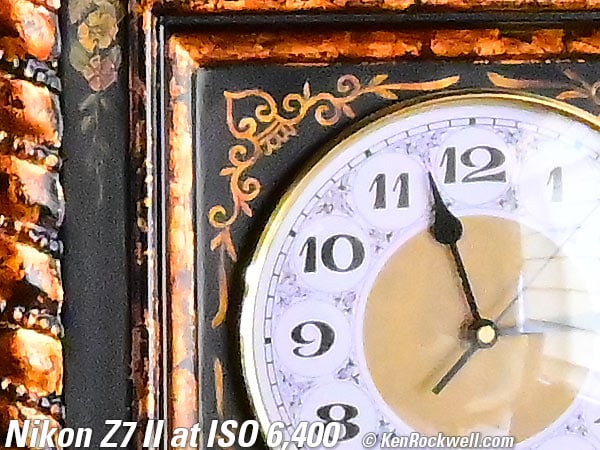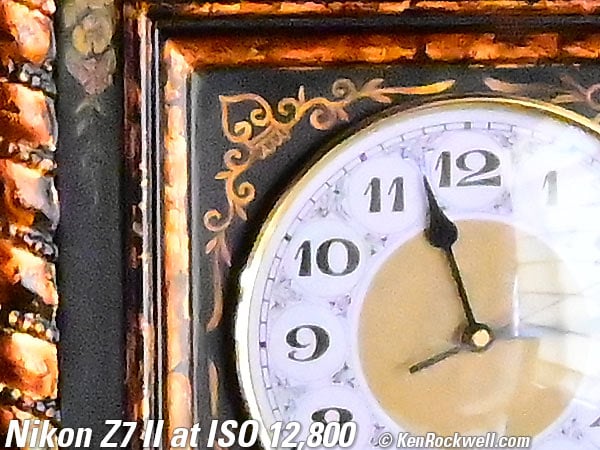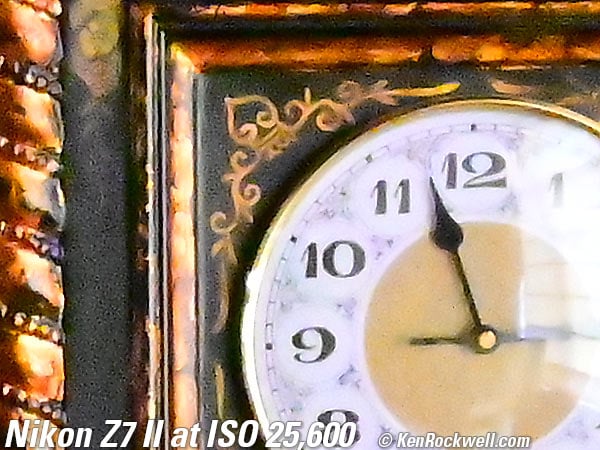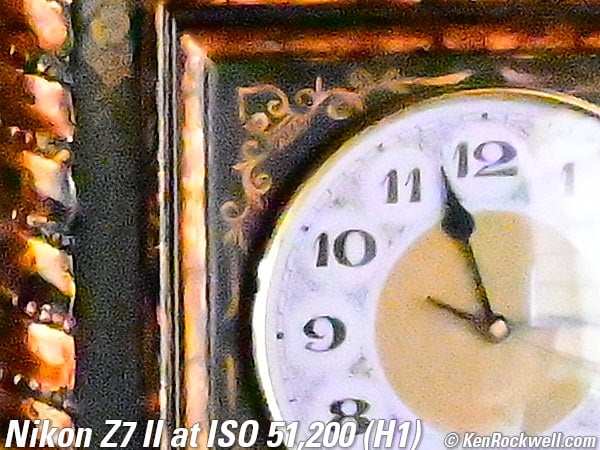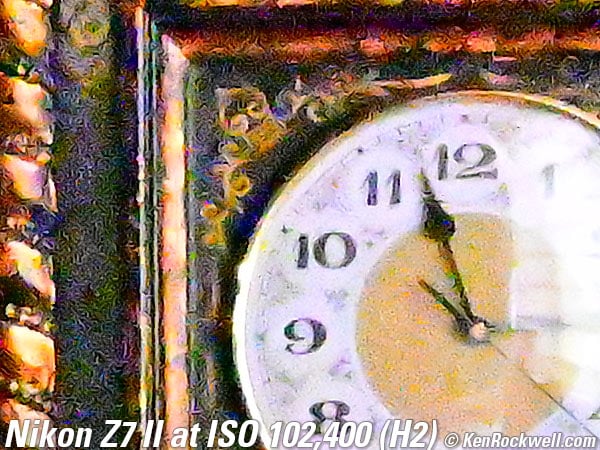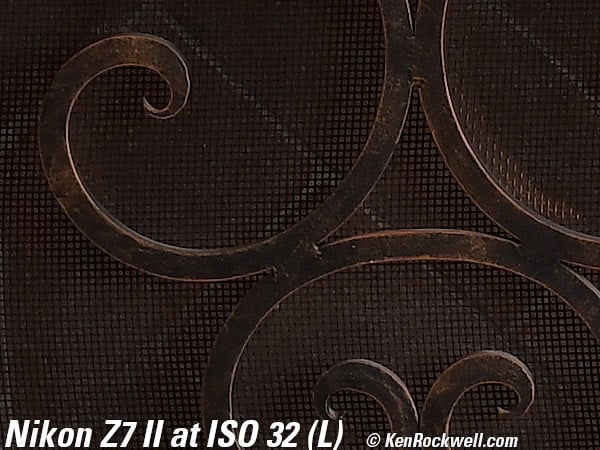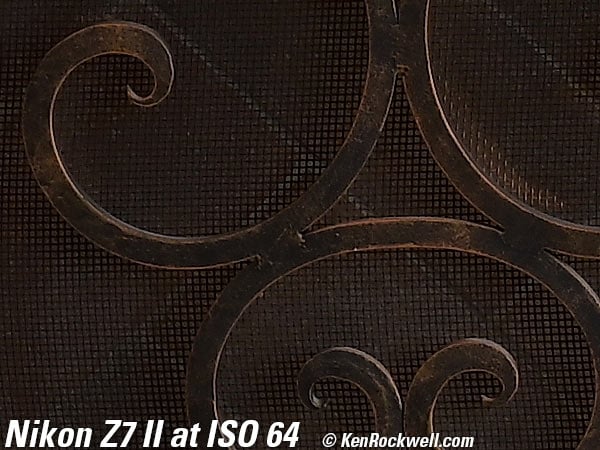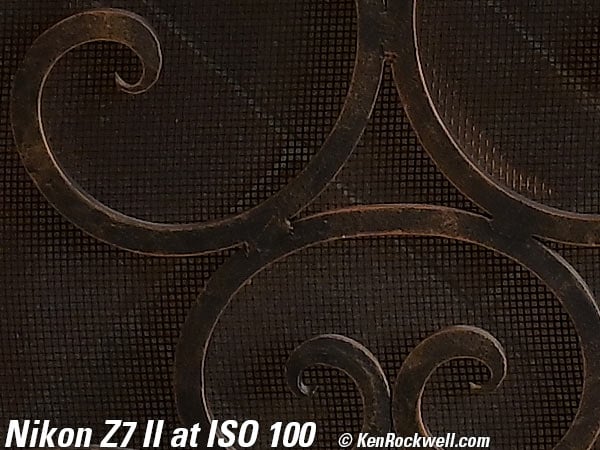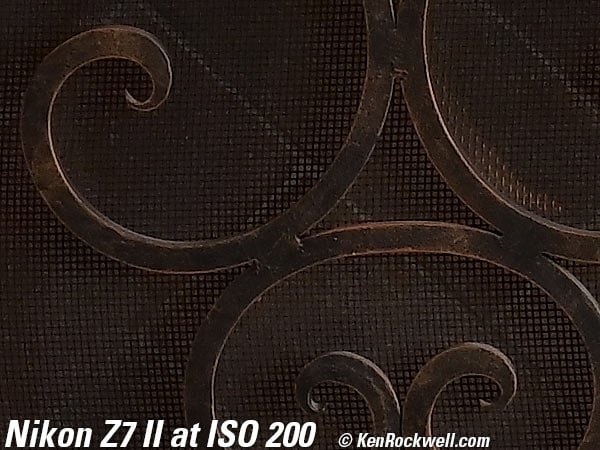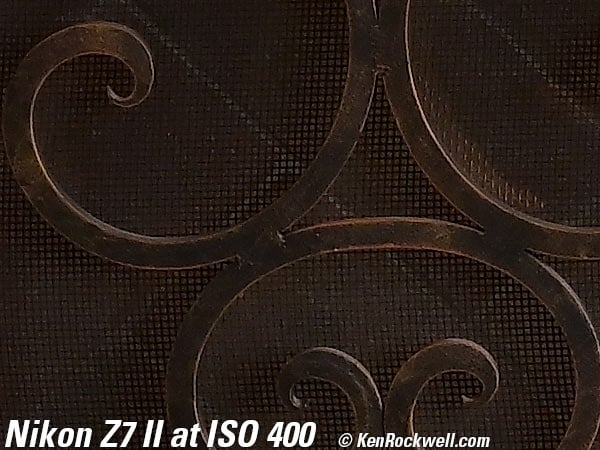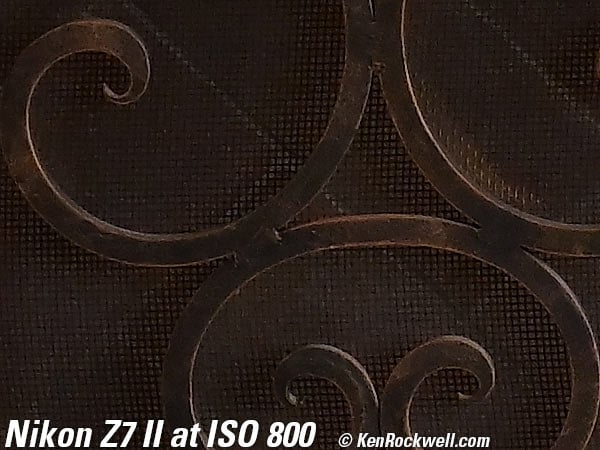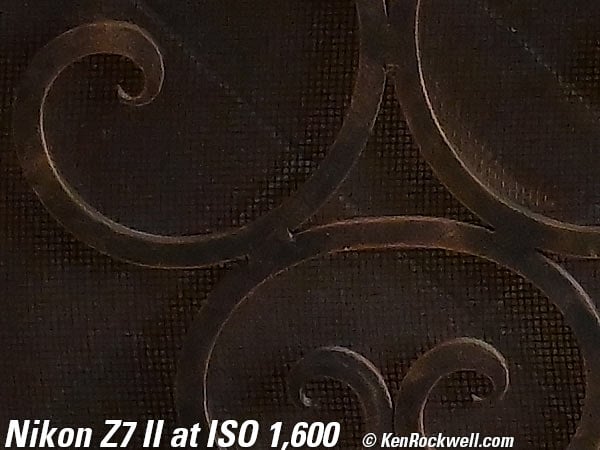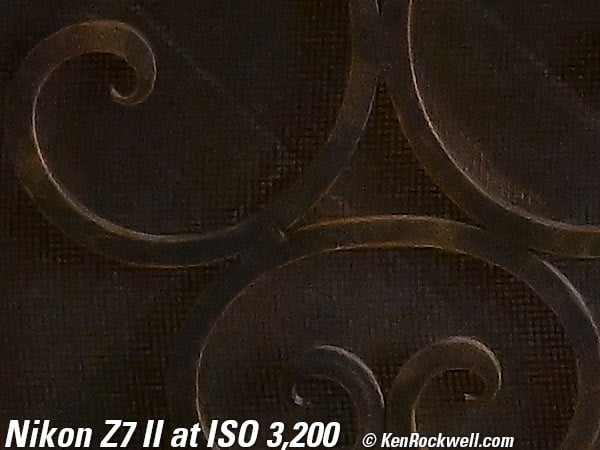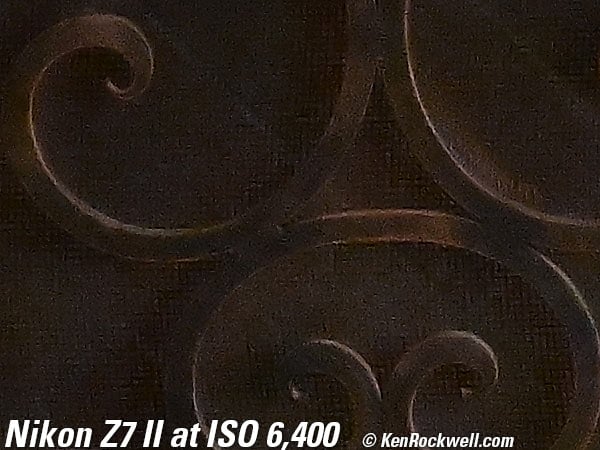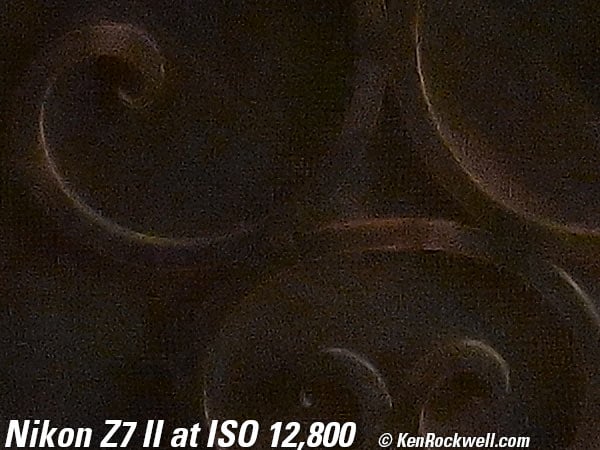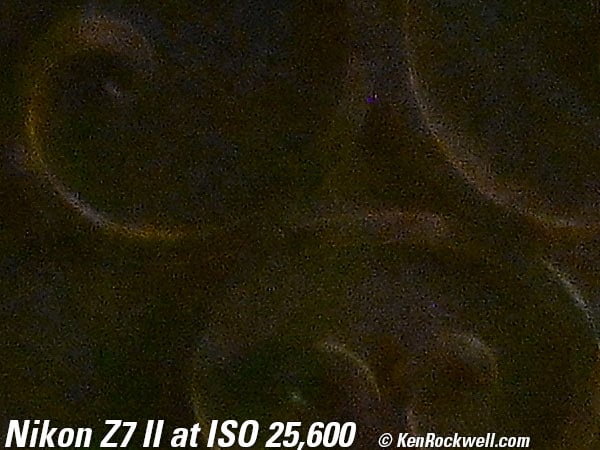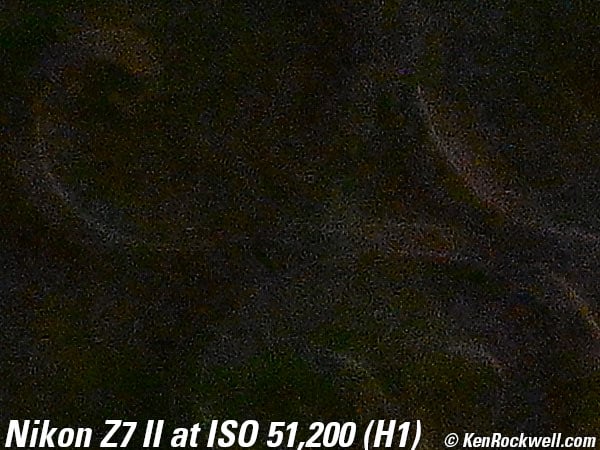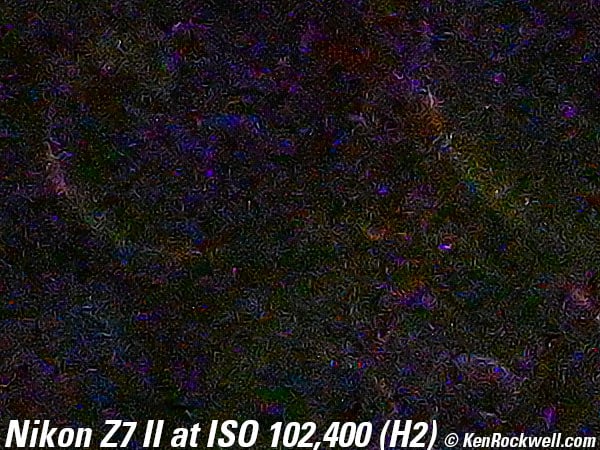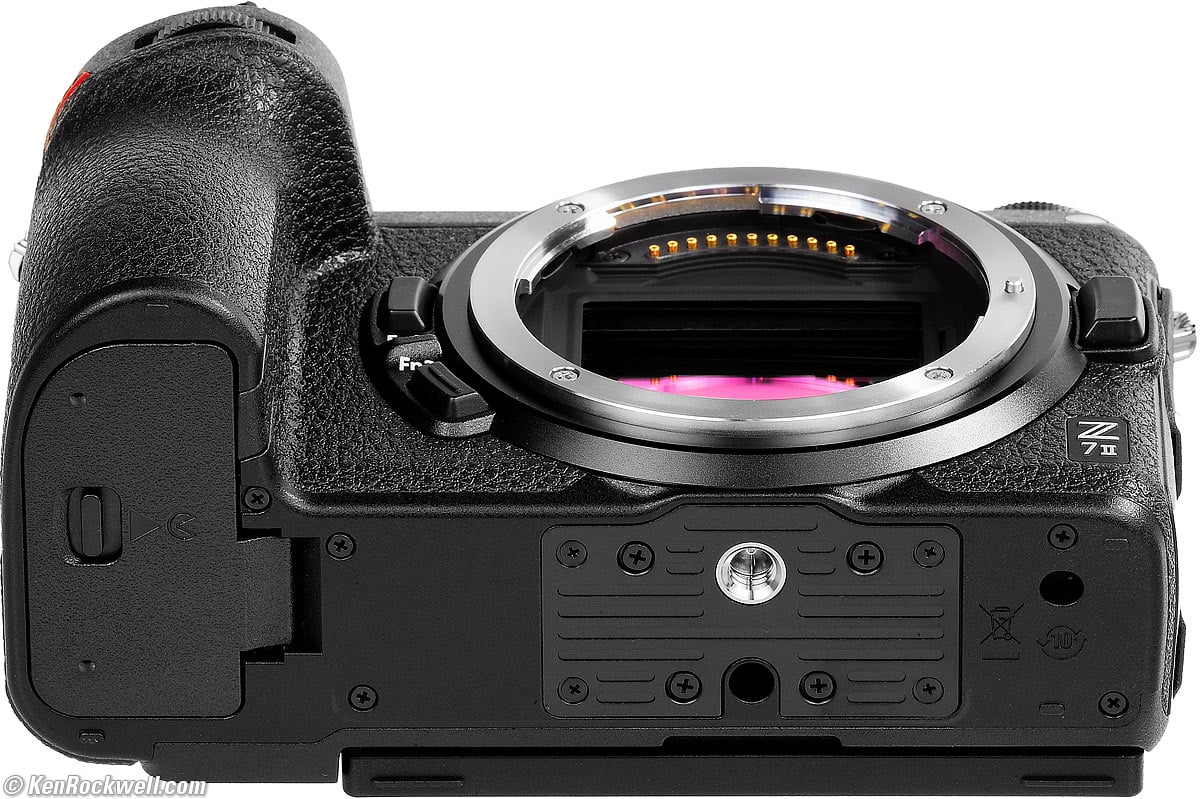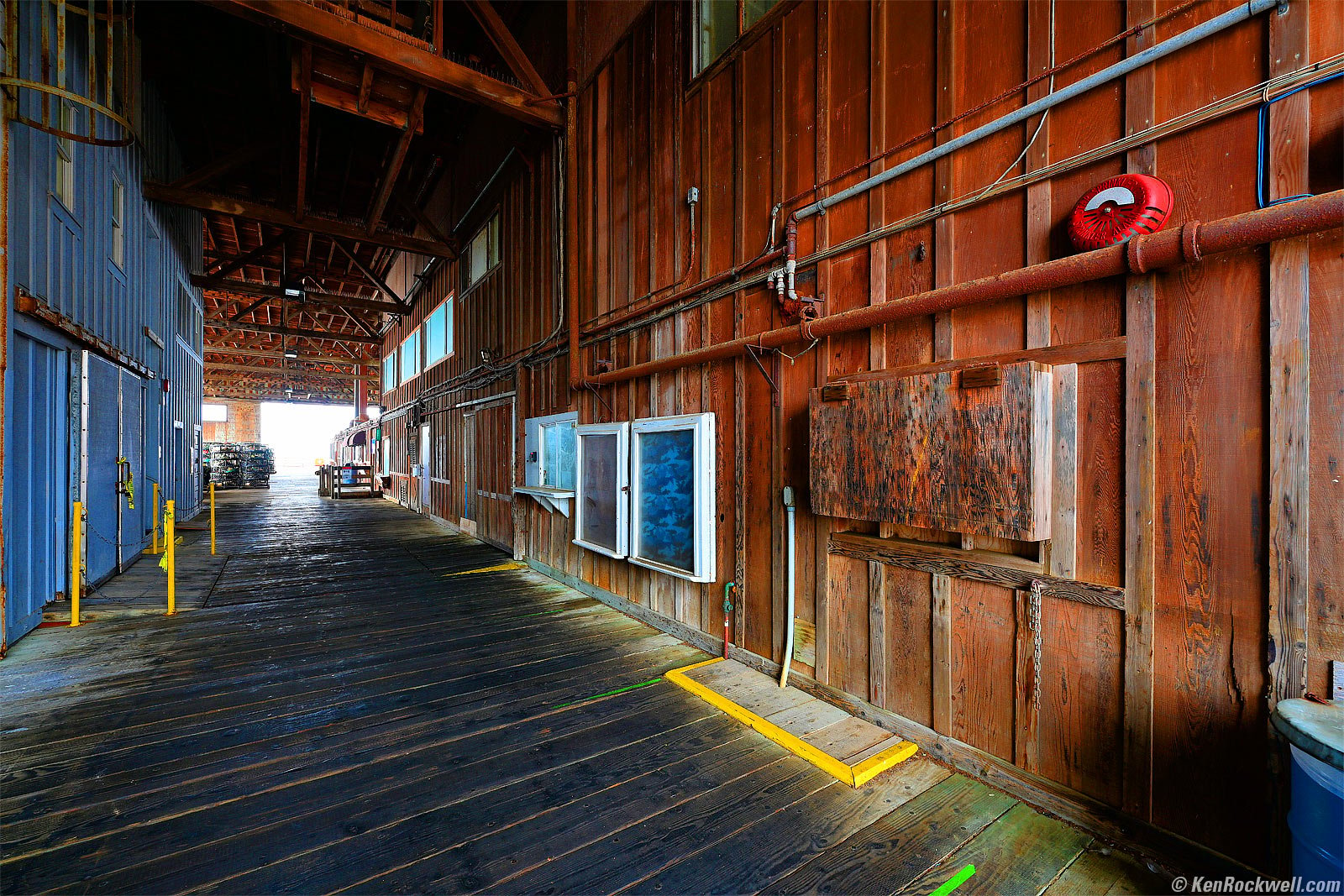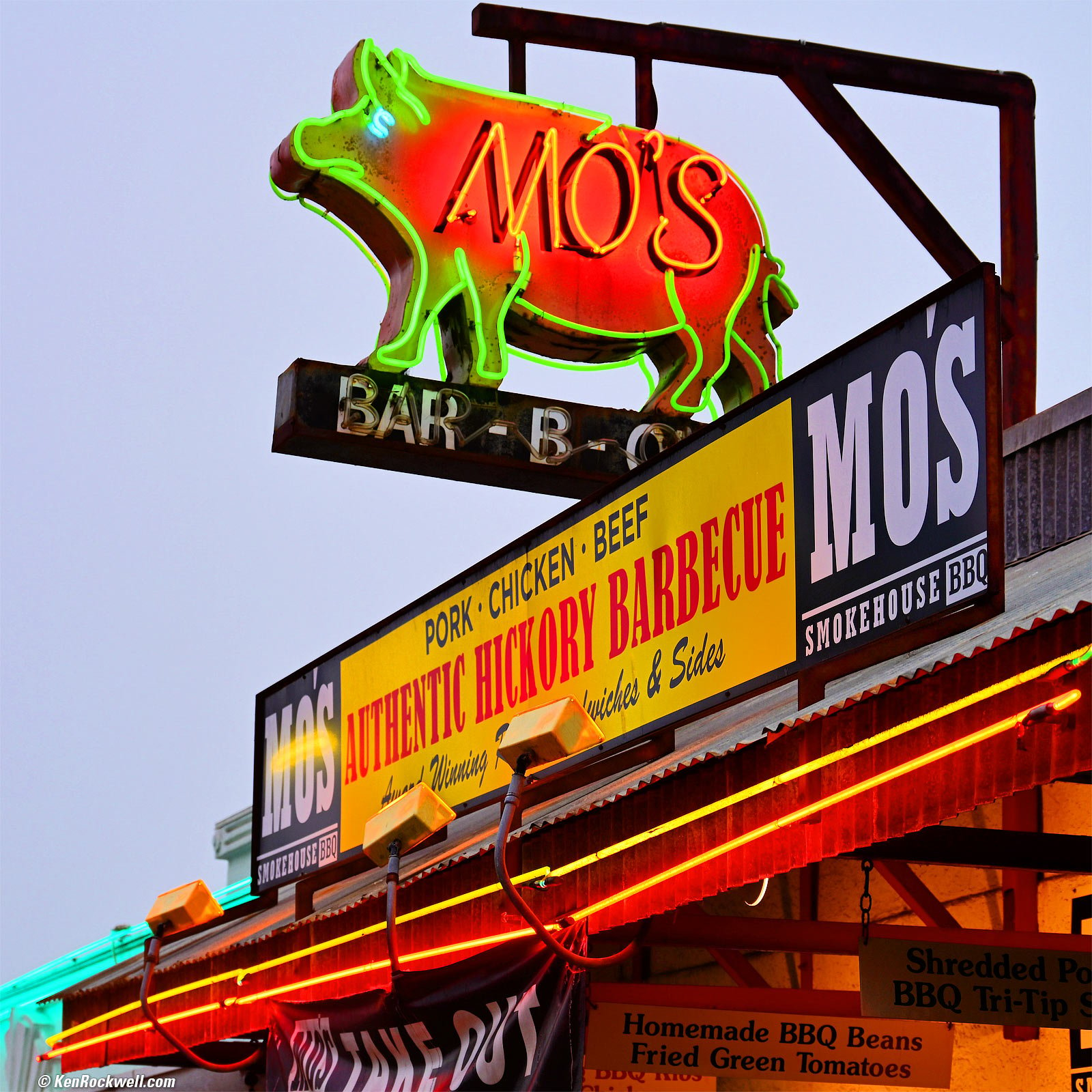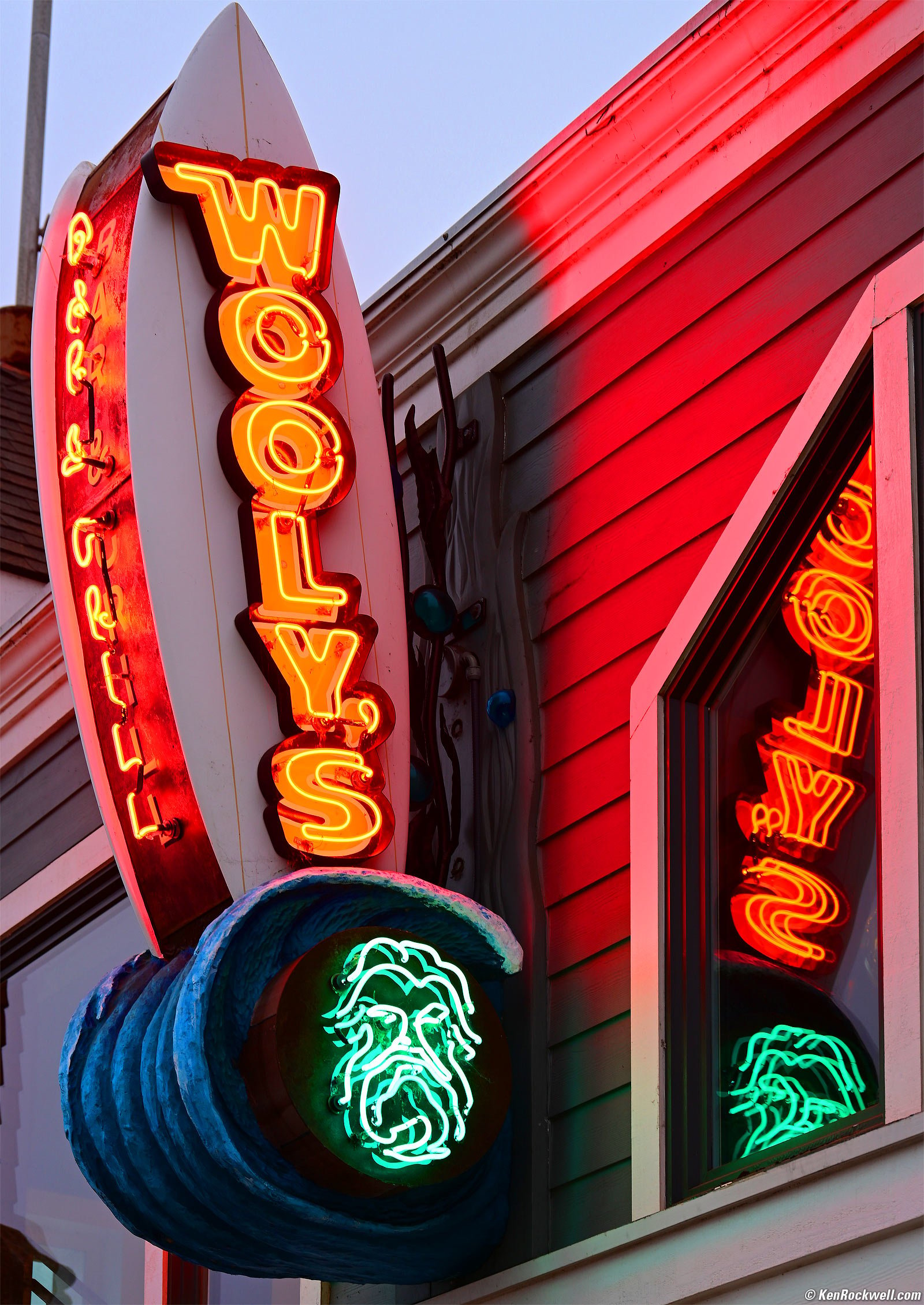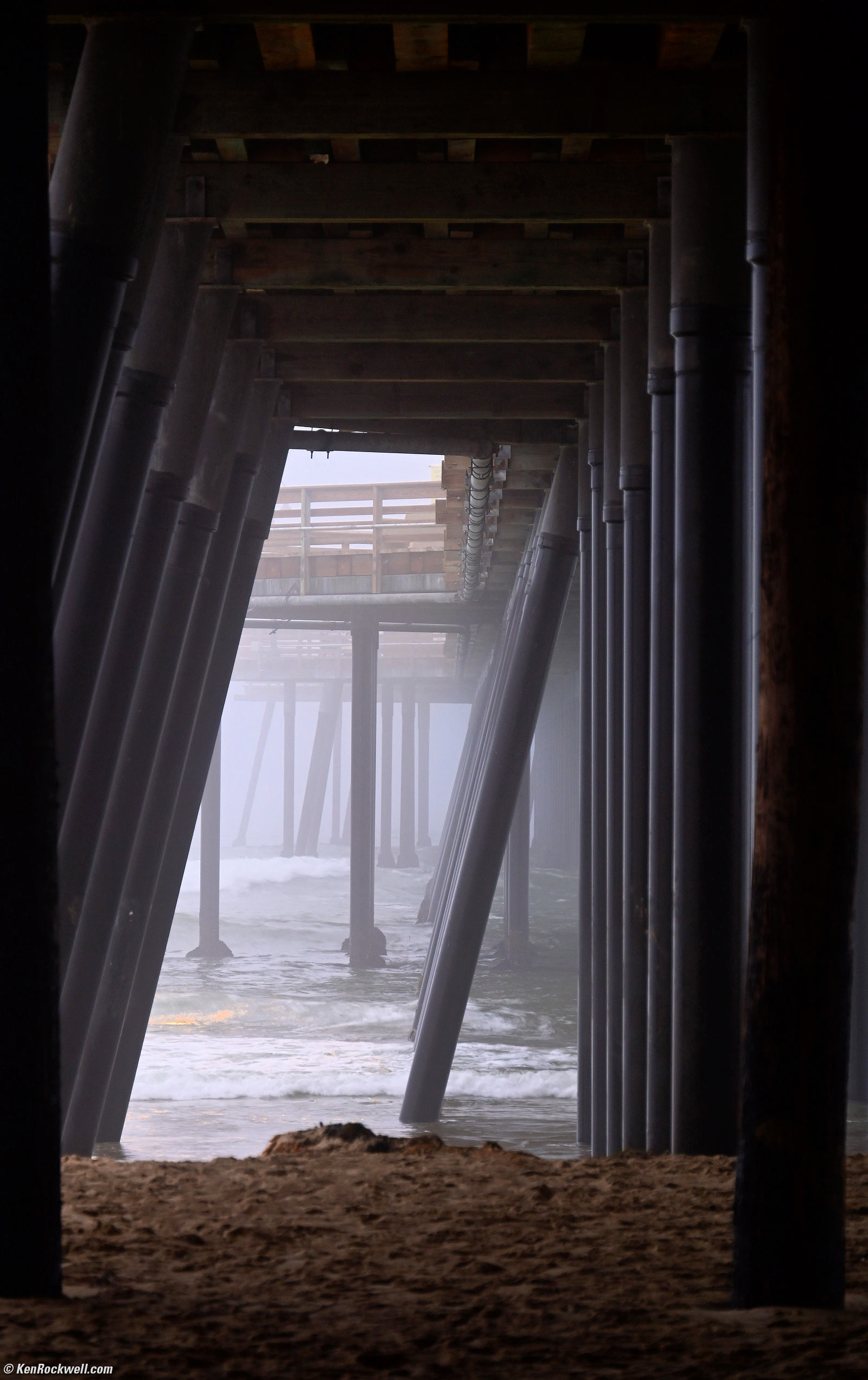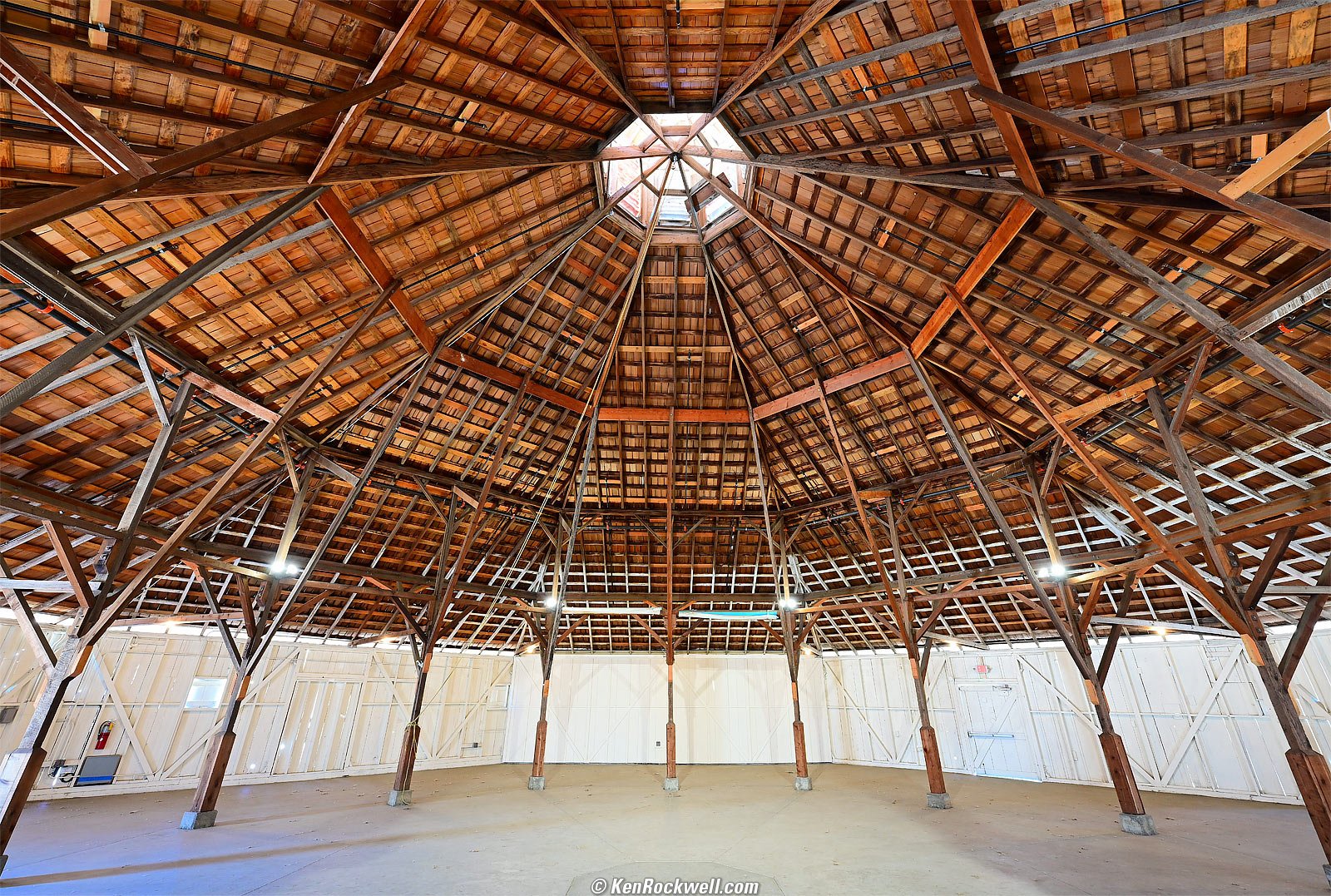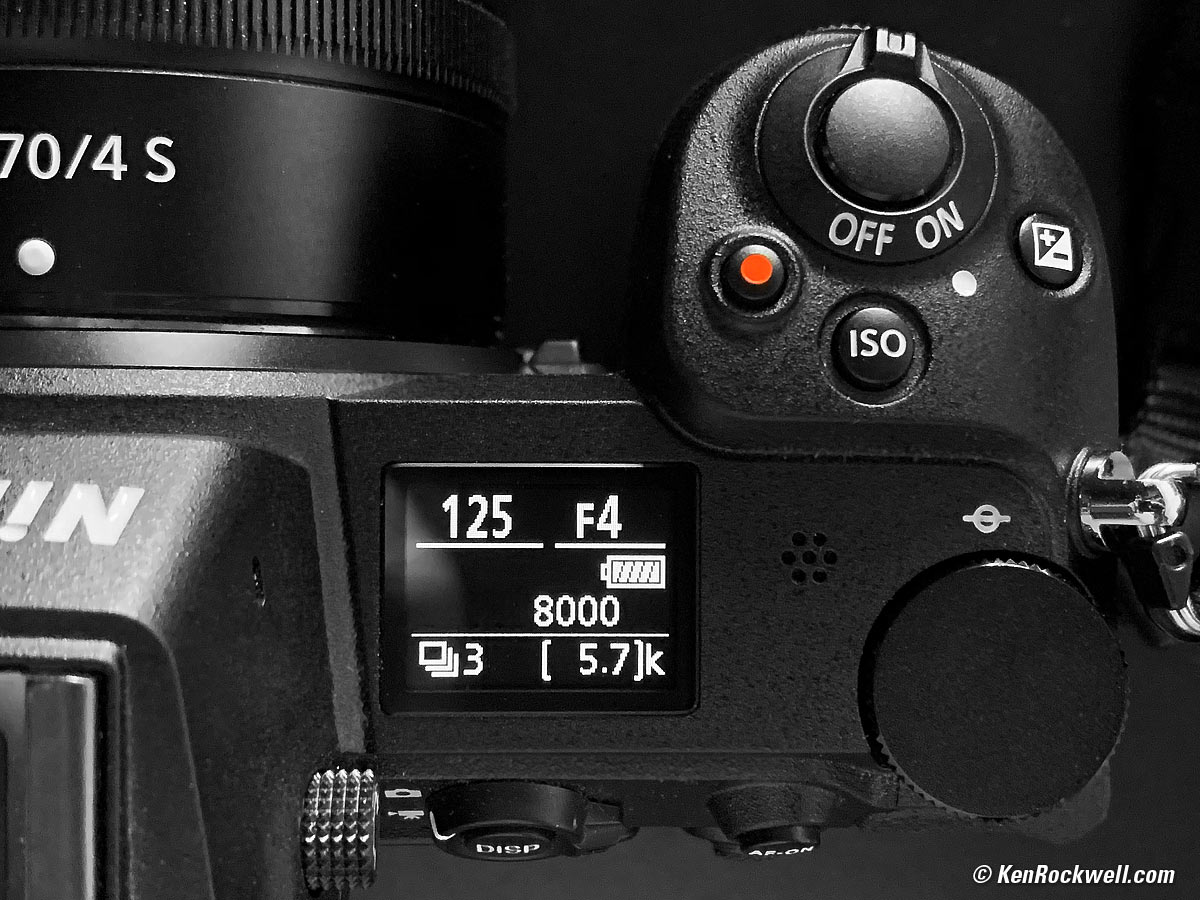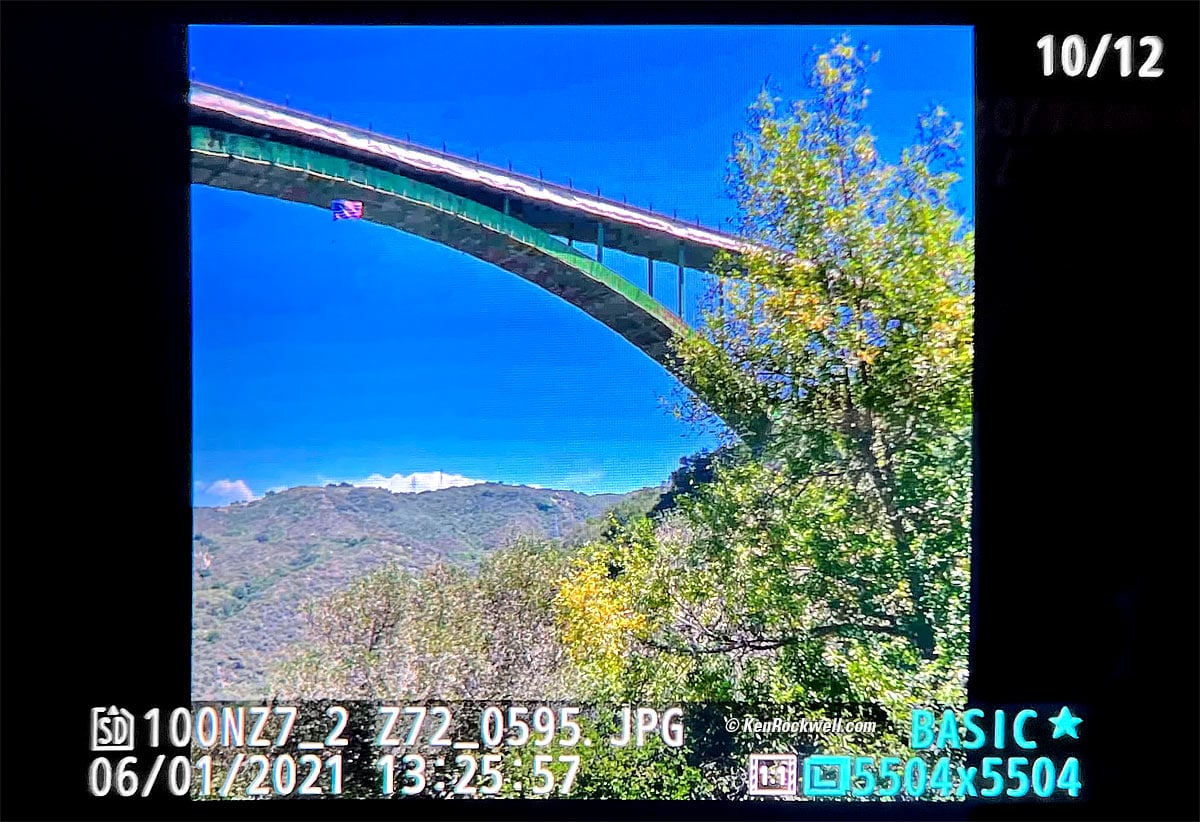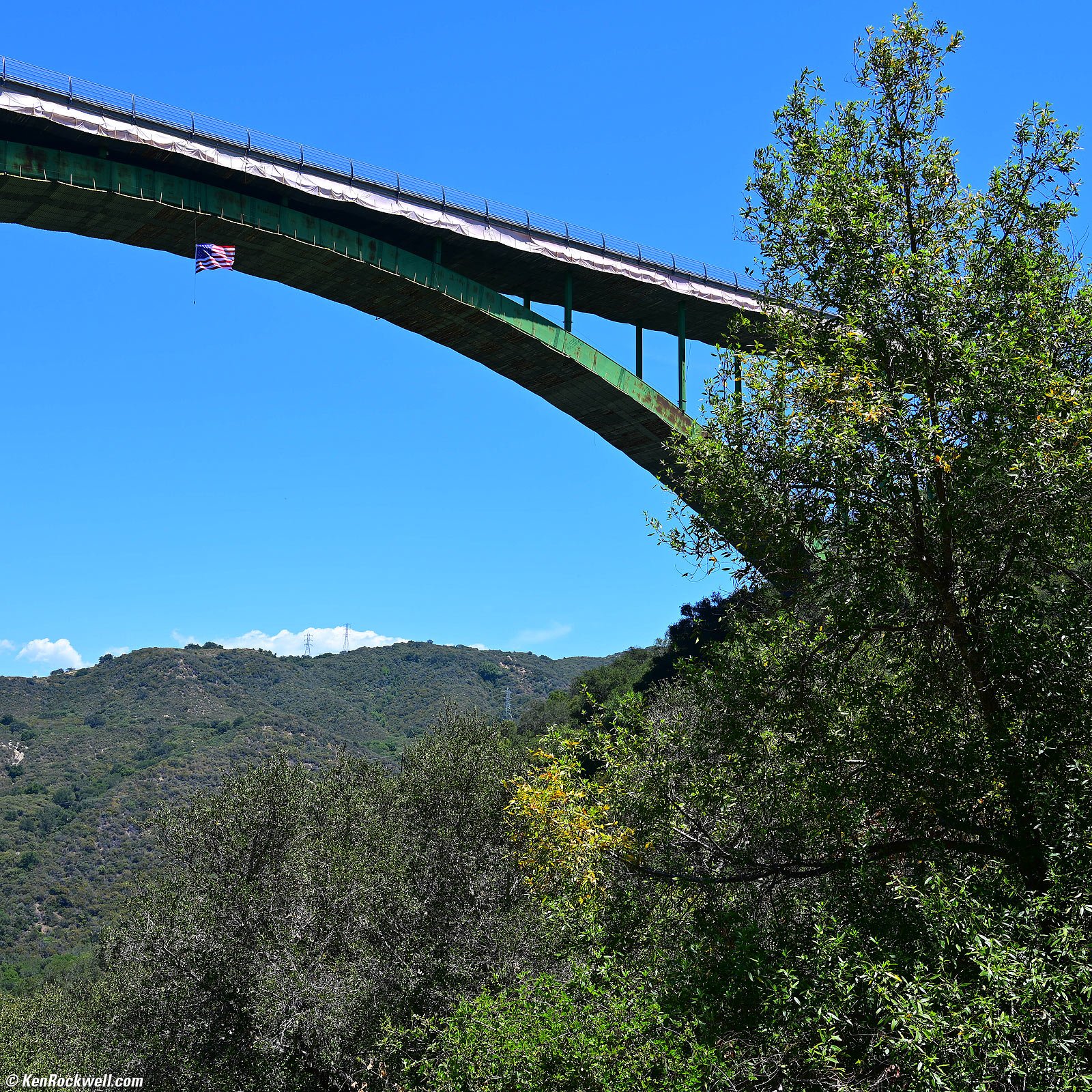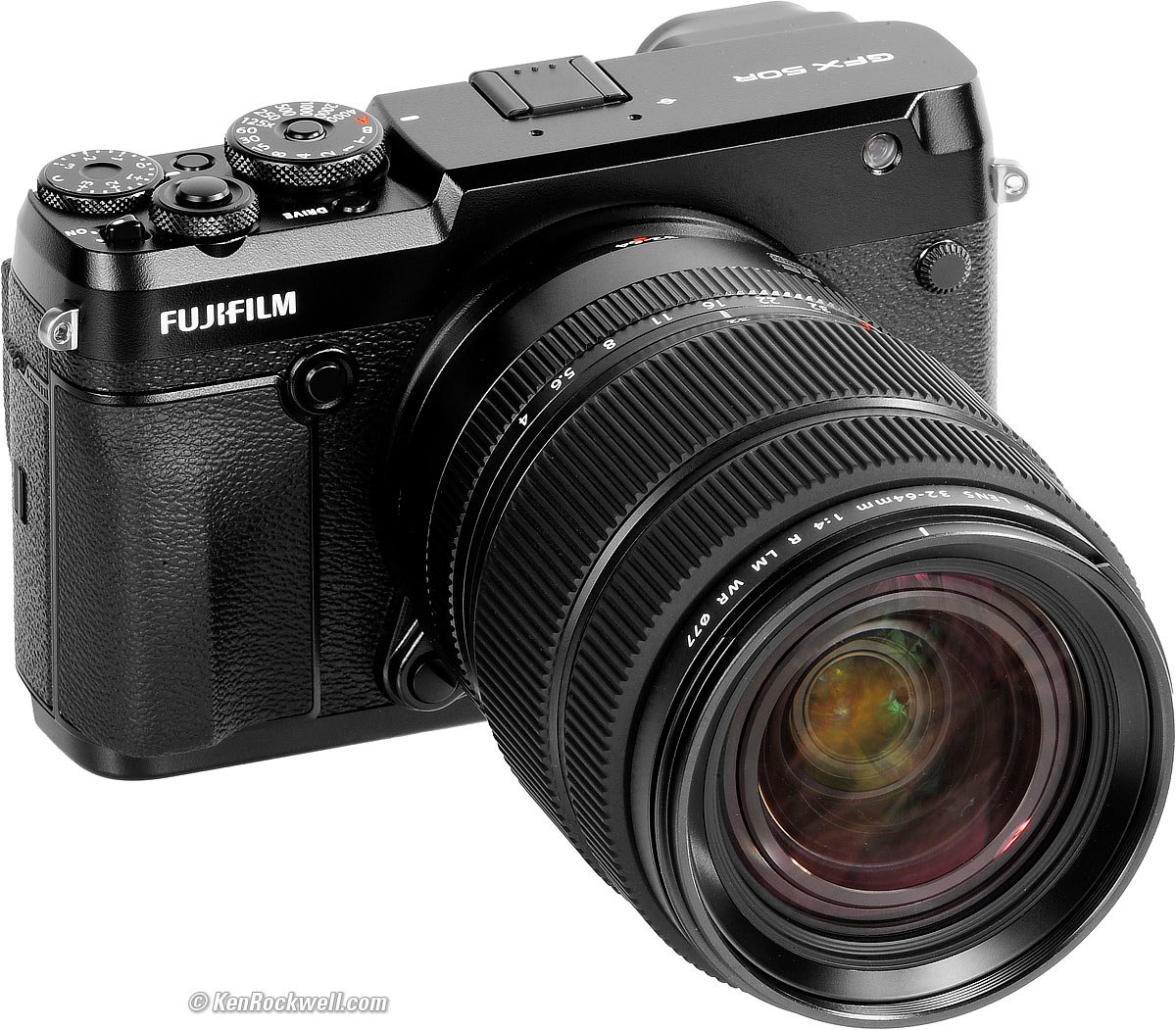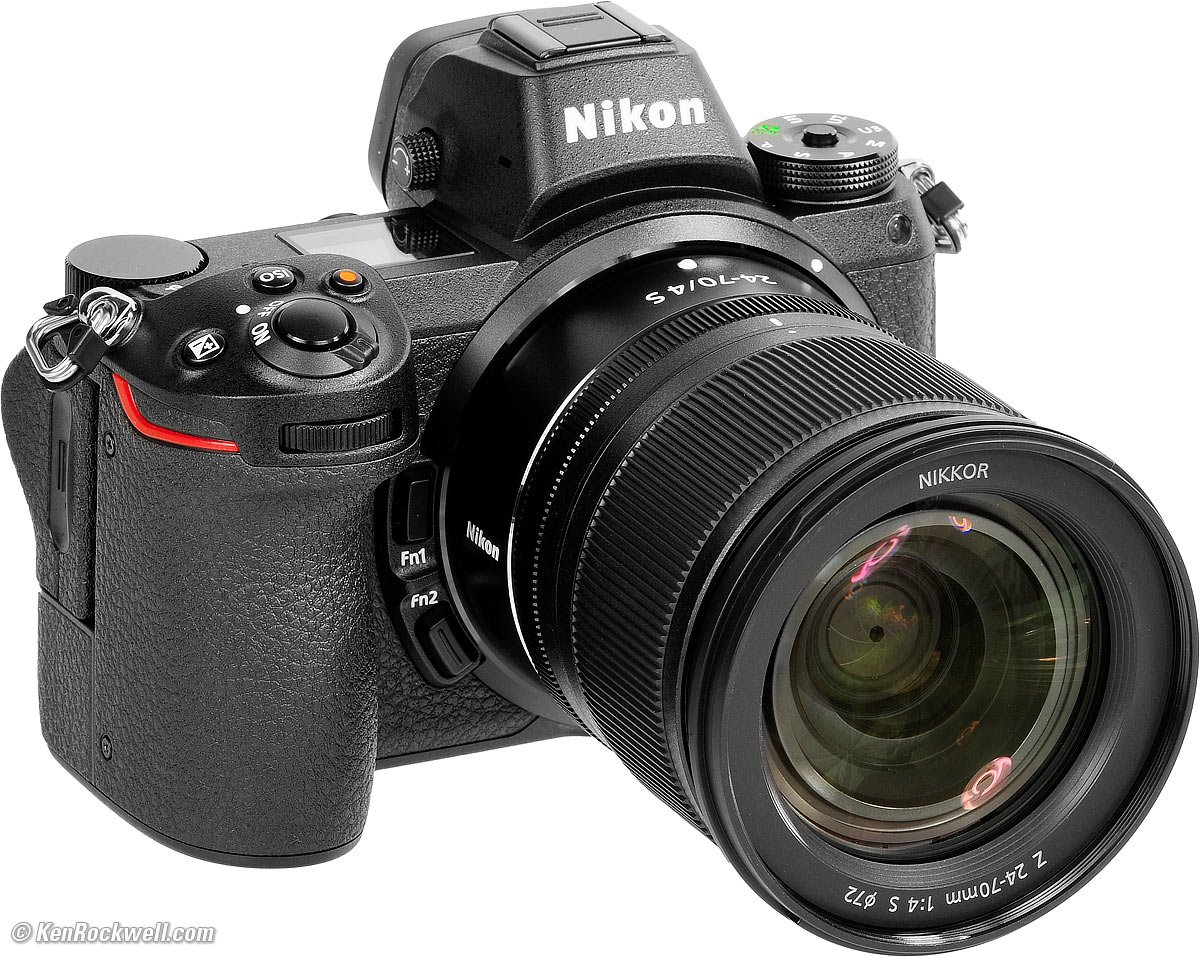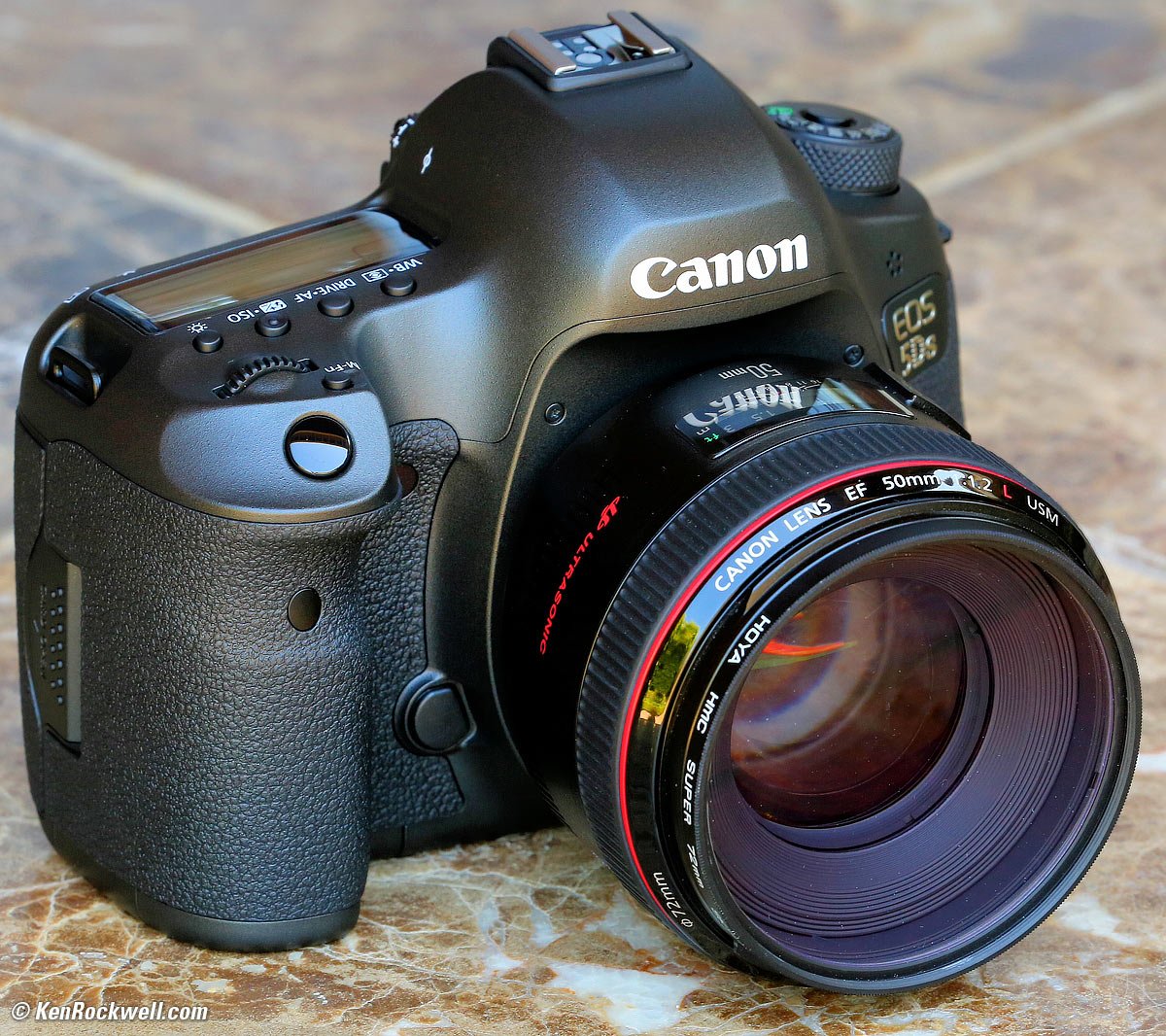Nikon Z7 II
Stabilized 45MP FX, 10 FPS Silent, IBIS, ISO 32~102,400
Lenses & Compatibility Specifications
USA Version Performance Compared
Z9 Z8 Z7 II Z6 II Zf Z7 Z6 Z5 Z fc Z50 Z30
Z System Z Lenses All Nikon Lenses Flash
Nikon Z7 II (Z mirrorless lens mount, $2,597, 24.5 oz./694g with battery and one SD card, has one SD card slot and a second XQD card slot that also works with CFexpress type B cards) and Nikon Z 14-24mm f/2.8. bigger. I got mine at B&H. I'd also get it at:
Z7 II body-only: $2,597 at Adorama, at Amazon, at B&H and at Crutchfield.
Z7 II & discounted FTZ adapter: $2,797 at Adorama.
Z7 II & discounted Z 24-50mm: $2,897 at B&H.
Z7 II & discounted Z 24-70mm f/4 S: $3,197 at Adorama, at Amazon, at B&H and at Crutchfield.
Z7 II, discounted FTZ adapter & discounted Z 24-70mm f/4 S: $3,397 at Adorama.
Z7 II & discounted Z 24-200mm VR: $3,397 at B&H.
About $1,800 used if you know How to Win at eBay.
This 100% all-content, junk-free website's biggest source of support is when you use those or any of these links to my personally approved sources I've used myself for way over 100 combined years when you get anything, regardless of the country in which you live. Nikon does not seal its boxes in any way, so never buy at retail or any other source not on my personally approved list since you'll have no way of knowing if you're missing accessories, getting a defective, damaged, returned, non-USA, store demo or used camera — and all of my personally approved sources allow for 100% cash-back returns for at least 30 days if you don't love your new camera. I've used many of these sources since the 1970s because I can try it in my own hands and return it if I don't love it, and because they ship from secure remote warehouses where no one gets to touch your new camera before you do. Buy only from the approved sources I've used myself for decades for the best prices, service, return policies and selection.
April 2024 Nikon Mirrorless Mirrorless Lenses All Nikon Lenses Nikon Flash All Reviews
Nikon vs Canon vs Sony Full Frame Mirrorless Compared
Nikon Z7 II. bigger.
Nikon Z7 II. bigger.
Sample Images top
Lenses & Compatibility Specifications
USA Version Performance Compared
All shot hand-held as BASIC ★ JPGs; no tripods, no RAW files, NORMAL or FINE JPGs were used or needed.
Giuseppe's Restaurant, San Luis Obispo, California, 4:53 P.M, 01 June 2021. Nikon Z7 II and Nikon Z 24-200mm VR at 95mm at f/6.3 at 1/640 at Auto ISO 64, -0.7 stops exposure compensation (LV 15.3), Perfectly Clear. bigger, full-resolution or camera-original © file.
Giuseppe's Restaurant, San Luis Obispo, California, 4:55 P.M, 01 June 2021. Nikon Z7 II and Nikon Z 24-200mm VR at 185mm wide-open at f/6.3 at 1/800 at Auto ISO 64, -0.7 stops exposure compensation (LV 15.6), Perfectly Clear. bigger.
Wind Waves in Sand, Oceano Dunes, San Luis Obispo County, California, 7:17 P.M, 01 June 2021. Nikon Z7 II and Nikon Z 24-200mm VR at 51 mm at f/11 hand-held at 1/50 at Auto ISO 500, +1 stop exposure compensation (LV 10¼), Perfectly Clear and strong contrast increase with a curves layer (set to Luminosity blending mode) in Photoshop CS6. It's trivial to do all this with JPG images. bigger.
PISMO BEACH Backlit LED Sign, 8:08 P.M, 01 June 2021. Nikon Z7 II and Nikon Z 24-200mm VR at 39mm wide-open at f/5 at 1/25 at Auto ISO 100, +0.7 stops exposure compensation (LV 9.3), Perfectly Clear. bigger.
Pismo Beach Hotel, 8:44 P.M, 01 June 2021. Nikon Z7 II and Nikon Z 14-24mm f/2.8 at 18.5mm at f/2.8 hand-held at ¼ second at Auto ISO 200, -0.7 stops exposure compensation (LV 4.0), Perfectly Clear. bigger, full-resolution or camera-original © file.
I've been shooting at night for almost 50 years. Back in 1971 it was a real pain in the neck, requiring a tripod and having to guess at exposure because most CdS meters couldn't read this low unless you played some tricks with them (meter the white and subtract two stops, for instance).
These night shots are easy hand-held today with the Z7 II: just point, hold still and shoot! Metering and auto exposure and and auto ISO all work great once you set them to taste. Also back in the day there were no lenses this wide, and even if there were in other formats, they certainly weren't f/2.8 and there were no stabilized lenses or cameras. Today we can leave our tripods at home.
A trick I use to get all this dynamic range from bright neon to dark shadows is to expose for the highlights (use the most exposure I can that doesn't lose the highlights) and then use Perfectly Clear to bring up the shadows without losing the highlights. Easy, and as you can see it works great from BASIC ★ JPG files, no raw needed!
Dawn, Irish Hills, San Luis Obispo, California, 6:36 A.M, 02 June 2021. Nikon Z7 II in square-crop mode and Nikon Z 24-200mm VR at 92mm (210mm equivalent on 6×6 cm Hasselblad) at f/10 at 1/1,000 at Auto ISO 64, -0.7 stops exposure compensation (LV 17¼), Perfectly Clear. bigger.
Tree Bridge at Dawn, San Luis Obispo, California, 7:50 AM, 02 June 2021. Nikon Z7 II and Nikon Z 24-200mm VR at 24mm at f/8 hand-held at 1/10 at Auto ISO 64, -0.7 stops exposure compensation (LV 10.0), Perfectly Clear. bigger.
I pulled two tricks here. First, I had to force White Balance to SHADE to warm it up; otherwise AUTO1 got fooled by the warm morning light and tried to render it too blue (cool). I could have used AUTO NATURAL LIGHT which might have been better, but I preferred to force it where I needed to get the look I wanted.
Secondly I exposed for the highlights and used Perfectly Clear and a curves adjustment layer in Photoshop CS6 to bring the grass back up to green rather than black as it was in the original JPG file. By "exposed for the highlights" I simply made sure that I didn't overexpose the highlights; I don't bother with the Highlight Priority exposure option.
Aztec Calendar on Red, Port San Luis, California, 8:34 A.M, 02 June 2021. Nikon Z7 II in 4:5 crop mode and Nikon Z 24-200mm VR at 24mm (90mm equivalent on 4x5" film) at f/8 hand-held at ⅛ at Auto ISO 320 (LV 7⅓), Perfectly Clear. bigger, full-resolution or camera-original © file.
Colorful Stools, Avila Beach Pier, Port San Luis, California, 9:56 A.M, 02 June 2021. Nikon Z7 II and Nikon Z 24-200mm VR at 54mm at f16 hand-held at 1/25 at Auto ISO 64 (LV 13.3), Perfectly Clear, unneeded color removed with an adjustment layer in Photoshop CS6. bigger.
Need f/16 for depth-of-field with a long lens? No problem hand-holding at 1/25 at super-clean ISO 64!
Old Mission San Luis Obispo at Dusk, 8:41 P.M, 02 June 2021. Nikon Z7 II and Nikon Z 14-24mm f/2.8 at 16mm (38mm equivalent on 6×6 cm Hasselblad) wide-open at f/2.8 hand-held at 1/15 at Auto ISO 450 (LV 4.7), Perfectly Clear. bigger.
I so love being able to point-and-shoot this night work rather than having to hump my Hasselblad and a tripod all over. I'd have to expose for f/16 at 32 seconds on Velvia 50, and it's a pain trying to muscle a tripod into exactly the right point in 3D space to get this composition, which is trivial hand-held.
RAINBOW Trees, San Luis Obispo, California, 8:43 P.M, 02 June 2021. Nikon Z7 II and Nikon Z 14-24mm f/2.8 at 14mm wide-open at f/2.8 hand-held at ⅛ at Auto ISO 250 (LV 4.6), Perfectly Clear. bigger or full-resolution.
Yes, I LOVE the colors I get from my Z7 II! Check this out:
Carnegie Library, San Luis Obispo, California, 8:47 P.M, 02 June 2021. Nikon Z7 II and Nikon Z 14-24mm f/2.8 at 18 mm (40mm equivalent on 6×6 cm Hasselblad) wide-open at f/2.8 hand-held at ⅛ at Auto ISO 1,400, -0.7 stops exposure compensation (LV 2.2), Perfectly Clear. bigger or full-resolution.
I would have to expose Velvia 50 for two and a half minutes at f/11 in my Hasselblad. I don't have the time for this, and certainly no patience to haul a tripod around downtown all night when I can get the same results hand-held with a Z7 II — and much better color than scanned Velvia.
Morro Rock, Morro Bay, California, 9:48 A.M, 03 June 2021. Nikon Z7 II and Nikon Z 24-200mm VR at 24mm at f/6.3 at 1/160 at Auto ISO 64 (LV 13.3), Perfectly Clear, split-toned print. bigger or full-resolution.
I added deliberate vignetting in Photoshop CS6 to keep your eyes on the rock and not out in the corners.
Wave Mural, Morro Bay, California, 10:33 A.M, 03 June 2021. Nikon Z7 II and Nikon Z 24-200mm VR at 37mm at f/8 at 1/250 at Auto ISO 64 (LV 14.6), Perfectly Clear. bigger.
Automatic distortion correction works well!
Ford Seat Sculpture, Morro Bay, California, 3:25 P.M, 03 June 2021. Nikon Z7 II in square-crop mode and Nikon Z 24-200mm VR at 29.5mm (65mm equivalent on 6×6 cm Hasselblad) at f/7.1 at 1/200 at Auto ISO 64, -0.3 stops exposure compensation (LV 13.9), Perfectly Clear. bigger or full-resolution.
The Three Stacks, Morro Bay, California, 3:25 P.M, 03 June 2021. Nikon Z7 II and Nikon Z 24-200mm VR at 200mm wide-open at f/6.3 at 1/640 at Auto ISO 64 (LV 15.3), Perfectly Clear. bigger.
Ice Plant Flower, Cambria, California, 11:54 A.M, 03 June 2021. Nikon Z7 II and Nikon Z 24-200mm VR at 200mm at f/6.3 at 1/500 at Auto ISO 64, -0.3 stops exposure compensation (LV 14.92 Columbus Day), Perfectly Clear. bigger.
Hotel San Luis Obispo at Dusk, 8:31 P.M, 03 June 2021. Nikon Z7 II and Nikon Z 14-24mm f/2.8 at 14mm wide-open at f/2.8 hand-held at 1/15 at Auto ISO 220, -0.7 stops exposure compensation (LV 5¾), Perfectly Clear. bigger or full-resolution.
We returned to our basic motel, then I walked back downtown by myself to see what may have been going on afterwards. I was charmed at how many people I saw on bicycles.
Just Before Bike Night, Higuera Street, San Luis Obispo, California, 9:31 P.M, 03 June 2021. Nikon Z7 II and Nikon Z 14-24mm f/2.8 at 14mm at f/2.8 at 1/15 at Auto ISO 1,250, -0.7 stops exposure compensation (LV 3.2), Perfectly Clear. bigger, or full-resolution.
Little did I realize for all the decades I've been going to the Farmer's Market that there is an insane Bike Night on first Thursdays after the Farmer's Market where hundreds of cyclists muster at the B of A lot and ride laps around town (down Higuera, left at Nipomo and back up Marsh to the B of A) en masse. It was pretty out of control; it was the first Bike Night since The Time Before. They kept riding at least as late as 11PM!
Woodstock's Pizza, San Luis Obispo, California, 3:25 P.M, 03 June 2021. Nikon Z7 II and Nikon Z 14-24mm f/2.8 at 24mm at f/2.8 at 1/25 at Auto ISO 1,000, -0.3 stops exposure compensation (LV 4.3), Perfectly Clear. bigger or full-resolution.
I did this shot by exposing for the highlights and knowing that Perfectly Clear would let me bring up the dark parts afterwards for the results above, especially from JPG files. HDR demands a tripod; and I'm not going to carry a tripod when I realize that I should have been on my bike and not just walking around. Here's how it looked right out of the camera uncropped and unboosted:
As shot. bigger.
Wooden Walkway over Oso Flaco Lake, California, 10:58 A.M, 04 June 2021. Nikon Z7 II in square-crop mode and Nikon Z 24-200mm VR at 60mm (150mm equivalent on 6×6 cm Hasselblad) at f/11 hand-held at 1/60 at Auto ISO 90 (LV 13.0), Perfectly Clear, image vignetted for emphasis and flipped in Photoshop CS6 to read left-to-right, split-toned print. bigger.
After these shots we bid good-bye to Mark, Chuck and Charlie. Chuck took Charlie back to the airport.
From Oso Flaco Lake Dave, Jim, Iris and I kept heading towards home, stopping at Mission Santa Barbara:
Mission Santa Barbara, California, 3:32 P.M, 04 June 2021. Nikon Z7 II and Nikon Z 24-200mm VR at 80mm at f/8 at 1/250 at Auto ISO 64 (LV 14.6), Perfectly Clear. bigger or full-resolution.
I shot this deliberately with SHADE white balance to make things much warmer. AUTO1 White Balance rendered it as it looked: cool and much grayer and not the way I wanted to see it. Most folks don't realize that this SHADE white balance trick (or an 85 filter with film) makes most things look warmer, but still leaves the sky blue, making it a much more inviting photograph than shot as it looked:
Green Field and Farmhouse, Camarillo, California, 5:21 P.M, 04 June 2021. Nikon Z7 II and Nikon Z 14-24mm f/2.8 at 24mm at f/16 hand-held at 1/30 at Auto ISO 64, -0.3 stops exposure compensation (LV 13.6), Perfectly Clear, perspective correction in Photoshop CS6. bigger or camera-original © file.
Introduction top
Lenses & Compatibility Specifications
USA Version Performance Compared
|
I buy only from these approved sources. I can't vouch for ads below. |
The Nikon Z7 II has unbeaten technical image quality in a mirrorless camera simply because it has all of the highest resolution and sharpness and, most importantly, unbeaten color rendition. No digital camera takes better pictures than the Z7 II, although the Canon R5 is just as good and has more speed and much better autofocus.
While Sony has good color accuracy, Sony's artistic color rendition falls behind. Panasonic's S1R claims 47MP, but it's not part of a complete pro system and has unknown color rendition. Fujifilm has inferior color rendition for anything but people, and doesn't even make a full-frame camera.
Technical image quality doesn't matter unless you're shooting test charts in your mom's basement. Some people go on and on about the superior dynamic range of this Nikon, but only bad photographers don't know how to light their subjects properly and have to fall back on their camera to rescue their poorly-lit photos worry about it.
What does matter is the Z7 II's superior color rendition, which is obvious in my Sample Images. The superior sharpness only matters if you're genuinely making prints 30 feet wide; for all normal uses, including making 40 × 60" (1 × 1.5 meter) prints, all today's cameras are the same — but Nikon's colors are unbeaten regardless of picture size.
The Z7 II has a full-frame sensor in a camera that weighs less than a DX D7500, and is built to the same standards as the D850.
It has hybrid phase & contrast autofocus over at least 90% of the frame.
There is a new series of lenses for it, and of course there is an FTZ lens mount adapter so we can use all our F-mount lenses with varying degrees of performance (many lenses won't autofocus with this adapter).
The short flange focal distance means we can use Nikon, LEICA and other rangefinder lenses from the 1920s through today. We can use Nikon's original S-mount Nikon rangefinder lenses as well as LEICA M lenses, and the Z7 II takes much better pictures with better color and features than any LEICA M digital camera. We can't do this with DSLRs because their mounts are too deep, but with the short mount of cameras without mirrors make it easy.
A beauty of the Z7 II is that the rear LCD/EVF switch is magic; the rear LCD pops on when I pull my Z7 II from my face and just works. Unlike a DSLR in Live View, the Z7 II works fast, with no time wasted swapping modes.
The Z7 II has sensor-shift image stabilization, and it works great, even with ancient 1940s rangefinder lenses!
Z7 II body-only: $2,597 at Adorama, at Amazon, at B&H and at Crutchfield.
Z7 II & discounted FTZ adapter: $2,797 at Adorama.
Z7 II & discounted Z 24-50mm: $2,897 at B&H.
Z7 II & discounted Z 24-70mm f/4 S: $3,197 at Adorama, at Amazon, at B&H and at Crutchfield.
Z7 II, discounted FTZ adapter & discounted Z 24-70mm f/4 S: $3,397 at Adorama.
Z7 II & discounted Z 24-200mm VR: $3,397 at B&H.
About $1,800 used if you know How to Win at eBay.
New since 2018's Z7 intro top
 New Electronic Level display is now much less obtrusive so we can compose and shoot with the level active.
New Electronic Level display is now much less obtrusive so we can compose and shoot with the level active.
 New added second SD card slot, along with one XQD slot from the Z7.
New added second SD card slot, along with one XQD slot from the Z7.
 XQD slot now also works with CFexpress type B cards.
XQD slot now also works with CFexpress type B cards.
 Two image processors, up from one in the Z7.
Two image processors, up from one in the Z7.
 Autofocus works down to LV -3, two stops better than Z7.
Autofocus works down to LV -3, two stops better than Z7.
 New optional MB-N11 vertical battery grip.
New optional MB-N11 vertical battery grip.
 New EN-EL15c battery works with the same chargers as older versions.
New EN-EL15c battery works with the same chargers as older versions.
 4K 60p. (iPhones have done this since the iPhone X of 2017).
4K 60p. (iPhones have done this since the iPhone X of 2017).
 Reversible focus ring direction.
Reversible focus ring direction.
 10-bit N-Log and HDR (HLG) video.
10-bit N-Log and HDR (HLG) video.
 Video animal and people eye-detect AF.
Video animal and people eye-detect AF.
 Optional extra-cost 12-bit ProRes video RAW upgrade.
Optional extra-cost 12-bit ProRes video RAW upgrade.
 Cthulhu, Pig Latin, Olde English, Mime and Klingon added to Language Options.
Cthulhu, Pig Latin, Olde English, Mime and Klingon added to Language Options.
 1.1 oz./30g heavier than Z7.
1.1 oz./30g heavier than Z7.
 $400 less expensive at introduction than was the Z7 at its introduction.
$400 less expensive at introduction than was the Z7 at its introduction.
 Now offshored to Thailand, no longer quality-made domestically in Japan. My finder arrived slightly crooked.
Now offshored to Thailand, no longer quality-made domestically in Japan. My finder arrived slightly crooked.
 Exposures settable directly to 15 minutes (900 seconds). Enable these at MENU > PENCIL > d6: extended shutter speeds (M) > ON.
Exposures settable directly to 15 minutes (900 seconds). Enable these at MENU > PENCIL > d6: extended shutter speeds (M) > ON.
Desert Home, 22 June 2019, 8:50-8:52 PM. Nikon Z7, Nikon 14-30mm at 14mm at f/11 at ISO 64, 104 second time exposure, Perfectly Clear v3.7 "landscapes" mode. bigger, full-resolution or camera-original © file.
Good intro top
 Optimum ISO of 64 rather than 100 gives much cleaner and sharper high-resolution images than Sony, Canon or Fuji, whose cameras only start at ISO 100 or more before pulling. Couple this with the long exposure modes and you can clean-up when it comes to ultrasharp night shots, like the above.
Optimum ISO of 64 rather than 100 gives much cleaner and sharper high-resolution images than Sony, Canon or Fuji, whose cameras only start at ISO 100 or more before pulling. Couple this with the long exposure modes and you can clean-up when it comes to ultrasharp night shots, like the above.
 Pulled ISOs down to ISO 32 for ultra-sharp, ultra queit results.
Pulled ISOs down to ISO 32 for ultra-sharp, ultra queit results.
 Numerous manual focus aids for fast and precise manual focus.
Numerous manual focus aids for fast and precise manual focus.
 Exposures settable directly to 15 minutes (900 seconds). Enable these at MENU > PENCIL > d6: extended shutter speeds (M) > ON.
Exposures settable directly to 15 minutes (900 seconds). Enable these at MENU > PENCIL > d6: extended shutter speeds (M) > ON.
 TIME exposure mode right between X200 and BULB modes in manual exposure mode. Oddly the top OLED stays on the whole time but doesn't show elapsed time, just the set aperture and ISO.
TIME exposure mode right between X200 and BULB modes in manual exposure mode. Oddly the top OLED stays on the whole time but doesn't show elapsed time, just the set aperture and ISO.
 In-camera sensor-shift image-stabilization rated for 5 stops improvement.
In-camera sensor-shift image-stabilization rated for 5 stops improvement.
 In-camera sensor-shift VR actually works with all our ancient F, AI , AI'd and AI-s and adapted rangefinder lenses — even if the FTZ doesn't work very well with them.
In-camera sensor-shift VR actually works with all our ancient F, AI , AI'd and AI-s and adapted rangefinder lenses — even if the FTZ doesn't work very well with them.
 Completely silent operation if you set it.
Completely silent operation if you set it.
 Three user presets on the top dial: U1, U2 and U3. Hallelujah!
Three user presets on the top dial: U1, U2 and U3. Hallelujah!
 Optional 4:5, square 1:1, DX and 16:9 as-shot crops. I often shoot in 4:5 or 1:1 since the native 3:2 is usually to long and skinny.
Optional 4:5, square 1:1, DX and 16:9 as-shot crops. I often shoot in 4:5 or 1:1 since the native 3:2 is usually to long and skinny.
 Full Frame Autofocus. You have sensors all over the entire frame!
Full Frame Autofocus. You have sensors all over the entire frame!
 Ultra-short 16mm Flange Focal Distance (FFD) allows all other brands of DSLR, SLR and rangefinder lenses to be adapted to it.
Ultra-short 16mm Flange Focal Distance (FFD) allows all other brands of DSLR, SLR and rangefinder lenses to be adapted to it.
 HDR.
HDR.
 Flicker shoot-through.
Flicker shoot-through.
 Superior Nikon image quality for colors and dynamic range.
Superior Nikon image quality for colors and dynamic range.
 Crud-resistant fluorine-coated finder eyepiece.
Crud-resistant fluorine-coated finder eyepiece.
 Aspherical eyepiece elements.
Aspherical eyepiece elements.
 Wi-Fi and Bluetooth.
Wi-Fi and Bluetooth.
 Multiple exposures.
Multiple exposures.
 Uses standard EN-EL15, EN-EL15a and EN-EL15b batteries from Nikon's DSLRs and the original Z7, as well as its new included EN-EL15c battery that can charge in-camera via USB (the EN-EL15b also charges in-camera).
Uses standard EN-EL15, EN-EL15a and EN-EL15b batteries from Nikon's DSLRs and the original Z7, as well as its new included EN-EL15c battery that can charge in-camera via USB (the EN-EL15b also charges in-camera).
 Charges from any source via USB-C at 2.4 W; charges at 9.4W from Power-Delivery chargers.
Charges from any source via USB-C at 2.4 W; charges at 9.4W from Power-Delivery chargers.
 Uses "standard" WT-7/A/B/C wireless transmitters.
Uses "standard" WT-7/A/B/C wireless transmitters.
 Flash system fully compatible with Nikon's existing DSLR flashes, with both optical and radio remote control.
Flash system fully compatible with Nikon's existing DSLR flashes, with both optical and radio remote control.
Bad intro top
 Sadly, like most mirrorless cameras, the finder's displays are always slightly delayed as we change settings. It slows down professional attempts at shooting when we have to wait a moment for the display to catch up every time we change settings rather than responding instantly. Geesh.
Sadly, like most mirrorless cameras, the finder's displays are always slightly delayed as we change settings. It slows down professional attempts at shooting when we have to wait a moment for the display to catch up every time we change settings rather than responding instantly. Geesh.
 Matrix meter no longer properly exposes whites, snow and sand as white in direct sunlight as Nikon matrix meters have done since 1984. Instead they now come out gray, just as they did without exposure compensation in the 1950s. (The Z7 had the same problem.)
Matrix meter no longer properly exposes whites, snow and sand as white in direct sunlight as Nikon matrix meters have done since 1984. Instead they now come out gray, just as they did without exposure compensation in the 1950s. (The Z7 had the same problem.)
 Sensor not protected by shutter blades with power off. Instead, the sensor is always exposed and out in the open every time you change lenses or leave the body without a lens.
Sensor not protected by shutter blades with power off. Instead, the sensor is always exposed and out in the open every time you change lenses or leave the body without a lens.
 Front and rear dials are hard and not grippy. They feel more like — gasp — Sony's nasty cameras than real Giorgetto Giugiaro-designed Nikons.
Front and rear dials are hard and not grippy. They feel more like — gasp — Sony's nasty cameras than real Giorgetto Giugiaro-designed Nikons.
 The FTZ adapter autofocuses only with Nikon's newest lenses with a built-in AF motor (AF-S and AF-P). The FTZ does not autofocus with any other lenses. The FTZ is a dud for those of us with a large collection of Nikon lenses because it only works (autofocuses or indexes properly) with about half of them. Nikon likes to forget to mention that all traditional AF and AF-D (screw-type) lenses will not autofocus. The FTZ works very poorly with manual-focus F, AI , AI'd and AI-s lenses, having no diaphragm control meaning you have to open and close the diaphragm manually for precise focus before and after each shot, has no exposure or EXIF data so you have no in-finder indication of aperture and have no EXIF aperture data, and there is no Matrix metering, Program or Shutter-priority automation with manual-focus lenses — which offer all these functions and more if used on 1984's Nikon FA! Worse, the Z7's automatic viewfinder brightness varies all over the place as you change the aperture on a manual lens. F, AI , AI'd, AI-s, AF and AF-D lenses, many of which Nikon still sells new today, work much better on any FX DSLR like a D750. Poo!
The FTZ adapter autofocuses only with Nikon's newest lenses with a built-in AF motor (AF-S and AF-P). The FTZ does not autofocus with any other lenses. The FTZ is a dud for those of us with a large collection of Nikon lenses because it only works (autofocuses or indexes properly) with about half of them. Nikon likes to forget to mention that all traditional AF and AF-D (screw-type) lenses will not autofocus. The FTZ works very poorly with manual-focus F, AI , AI'd and AI-s lenses, having no diaphragm control meaning you have to open and close the diaphragm manually for precise focus before and after each shot, has no exposure or EXIF data so you have no in-finder indication of aperture and have no EXIF aperture data, and there is no Matrix metering, Program or Shutter-priority automation with manual-focus lenses — which offer all these functions and more if used on 1984's Nikon FA! Worse, the Z7's automatic viewfinder brightness varies all over the place as you change the aperture on a manual lens. F, AI , AI'd, AI-s, AF and AF-D lenses, many of which Nikon still sells new today, work much better on any FX DSLR like a D750. Poo!
 No dedicated AF-S / AF-C / MF lever; you have to assign a button and use dials to set this.
No dedicated AF-S / AF-C / MF lever; you have to assign a button and use dials to set this.
 No playback autorotate. Unlike an iPhone, images don't automatically rotate as you turn the camera while playing back.
No playback autorotate. Unlike an iPhone, images don't automatically rotate as you turn the camera while playing back.
 Playback scroll of zoomed images is defective. You have to release the controller before changing direction, otherwise it STOPS! Also if the center button is hit, scroll stops again. This is weird; it should just ignore the center button and not need to go through neutral to change directions while zipping around. This firmware defect makes it really choppy trying to scroll around a zoomed image. Even weirder, this works fine for live focus zoom, but not for zoomed playback.
Playback scroll of zoomed images is defective. You have to release the controller before changing direction, otherwise it STOPS! Also if the center button is hit, scroll stops again. This is weird; it should just ignore the center button and not need to go through neutral to change directions while zipping around. This firmware defect makes it really choppy trying to scroll around a zoomed image. Even weirder, this works fine for live focus zoom, but not for zoomed playback.
 Offshored to Thailand, not quality-made domestically in Japan.
Offshored to Thailand, not quality-made domestically in Japan.
 There is a junk " NC_FLLST.DAT" file in each image folder (100NZ7_2, etc.).
There is a junk " NC_FLLST.DAT" file in each image folder (100NZ7_2, etc.).
 Sadly the viewfinder is slightly misaligned in my sample so its image is very slightly rotated from horizontal. This can drive you nuts when you notice that the horizon isn't at exactly as the same angle in the finder as it is in the actual subject!
Sadly the viewfinder is slightly misaligned in my sample so its image is very slightly rotated from horizontal. This can drive you nuts when you notice that the horizon isn't at exactly as the same angle in the finder as it is in the actual subject!
Missing intro top
 No built-in flash.
No built-in flash.
 No full-stop ISO settings; they only set in third stops. Of course we can set the full stops, just that it takes three clicks to get there each time because there is no full stop setting option.
No full-stop ISO settings; they only set in third stops. Of course we can set the full stops, just that it takes three clicks to get there each time because there is no full stop setting option.
 No color histograms while shooting (only on playback).
No color histograms while shooting (only on playback).
 No playback autorotate. Unlike an iPhone, images don't automatically rotate as you turn the camera while playing back.
No playback autorotate. Unlike an iPhone, images don't automatically rotate as you turn the camera while playing back.
 No option to have U1, U2 and U3 settings auto-update (Canon can do this).
No option to have U1, U2 and U3 settings auto-update (Canon can do this).
 Nikon specifies no battery life figure.
Nikon specifies no battery life figure.
 No dedicated AF-S / AF-C / MF lever; you have to assign a button and use dials to set this.
No dedicated AF-S / AF-C / MF lever; you have to assign a button and use dials to set this.
 No auto brightness control for the rear LCD; heck, even my iPhone does this. (the finder does have auto brightness control).
No auto brightness control for the rear LCD; heck, even my iPhone does this. (the finder does have auto brightness control).
 No GPS, but you might be able to tag images using your phone over an app.
No GPS, but you might be able to tag images using your phone over an app.
 No illuminated buttons or controls.
No illuminated buttons or controls.
 Not threaded to use a standard threaded cable release.
Not threaded to use a standard threaded cable release.
 In-finder data displays do not rotate with the camera.
In-finder data displays do not rotate with the camera.
 Menus don't rotate when the camera's held vertically.
Menus don't rotate when the camera's held vertically.
 No shutter speed dial.
No shutter speed dial.
 No ISO dial.
No ISO dial.
 No Stabilizer switch. Some - but not all - lenses have this, but there's no switch for the built-in stabilizer. You usually have to stop and use a menu.
No Stabilizer switch. Some - but not all - lenses have this, but there's no switch for the built-in stabilizer. You usually have to stop and use a menu.
 No voice notes like the Nikon D6 or Canon EOS R5.
No voice notes like the Nikon D6 or Canon EOS R5.
Nikon Z 50mm f/2.8 Macro on a Z7 II. bigger.
Z7 II Lenses & Compatibility top
Lenses & Compatibility Specifications
USA Version Performance Compared
Z7 II body-only: $2,597 at Adorama, at Amazon, at B&H and at Crutchfield.
Z7 II & discounted FTZ adapter: $2,797 at Adorama.
Z7 II & discounted Z 24-50mm: $2,897 at B&H.
Z7 II & discounted Z 24-70mm f/4 S: $3,197 at Adorama, at Amazon, at B&H and at Crutchfield.
Z7 II, discounted FTZ adapter & discounted Z 24-70mm f/4 S: $3,397 at Adorama.
Z7 II & discounted Z 24-200mm VR: $3,397 at B&H.
About $1,800 used if you know How to Win at eBay.
Lens Mount
Nikon Z7 II. bigger.
The Z7 II uses the Nikon Z mount optimized for Nikon's Z-mount mirrorless lenses. It has a 55mm inner diameter, larger than the old F mount, and has a flange focal distance of only 16.00mm.
This is the shortest distance between flange and sensor of any pro camera: Sony E is 18.00mm, Fuji X is 17.70mm. Canon RF is 20.00mm, LEICA M is 27.80mm, Contax G is 29.00mm, Nikon's 1950s rangefinder S-mount is 34.85mm. Canon EF is 44.00mm and Nikon F is 46.5mm, so there is always enough room for someone to machine an adapter ring to go between anything and this new Nikon Z mount.
DX Z Lenses
The DX 16-50 and DX 50-250mm are superb lenses, and the Z7 II automatically crops its sensor to DX, but by doing this you're throwing away more than half your sensor area.
FTZ Adapter
I have an entire page on what works and doesn't work with Nikon's FTZ adapter, which lets Nikon's F-Mount lenses mount on a Z camera.
In short, all the newest AF-I, AF-S and AF-P lenses work fine with Nikon's FTZ adapter, while there is no autofocus with any other lenses, and especially no autofocus with older AF and AF‑D lenses, many of which Nikon still sells new today.
Manual-Focus F, AI converted, AI and AI‑s don't work very well, with no communication or control of aperture. Manual-focus lenses work much better on any FX DSLR than on the FTZ.
See all the details at Nikon FTZ Compatibility & Review.
Fringer Canon EF-to-Nikon Z Adapter
Adapts Canon EF lenses with often better results on my Nikon Z cameras than Nikon's own lenses give on this crappy FTZ adapter! It also works with other brands of lenses in Canon EF mount, adapting them to Nikon Z.
Adapted Rangefinder Lenses
You don't need and can't use the FTZ Adapter with rangefinder lenses. These lenses have to get closer to the sensor, and are the original mirrorless lenses. This is good, because we can get basic adapters cheap direct from China over eBay for just about any kind of lens.
In fact, we now can use even Nikon's original 1940s-1960s rangefinder lenses on the Z7 II II:
Nikon Z7 with W-NIKKOR•C 3.5cm f/1.8 (1956~1964). bigger.
LEICA's lenses for the LEICA M3 with goggles work great, too!
See Use with Adapted Rangefinder Lenses for more.
Palms and Storm, 6:21 PM, 29 November 2018. 2018 Nikon Z7 with 1956 W-NIKKOR•C 3.5cm f/1.8 (see Adapting Rangefinder Lenses to Nikon Mirrorless), f/4 at 10 seconds at ISO 64, shown exactly as shot. bigger or camera-original © file. The palm tree is blowing all over in the wind; don't expect it to be museum-sharp.
Specifications top
Lenses & Compatibility Specifications
USA Version Performance Compared
Z7 II body-only: $2,597 at Adorama, at Amazon, at B&H and at Crutchfield.
Z7 II & discounted FTZ adapter: $2,797 at Adorama.
Z7 II & discounted Z 24-50mm: $2,897 at B&H.
Z7 II & discounted Z 24-70mm f/4 S: $3,197 at Adorama, at Amazon, at B&H and at Crutchfield.
Z7 II, discounted FTZ adapter & discounted Z 24-70mm f/4 S: $3,397 at Adorama.
Z7 II & discounted Z 24-200mm VR: $3,397 at B&H.
About $1,800 used if you know How to Win at eBay.
Autofocus
493 AF points.
Phase and contrast detection.
90% linear frame coverage.
Range: LV -3 ~ +19 with f/2 lens and center AF point; LV -4 ~ +19 with "low light AF."
Distance-Axis AF Modes
AF-S (single and lock), AF-S (continuous tracking) with predictive tracking.
"Full-time" AF-F in movie mode only.
Manual focus.
Electronic rangefinder.
AF-Area Selection Modes (X & Y axes)
Auto area selection.
Pinpoint (still photo mode only).
Single-point.
Dynamic area AF (still photo mode only).
Wide-area AF (S or L).
Image Sensor specifications top
Nikon Z7 II. bigger.
23.9 × 35.9 mm backside-illuminated CMOS with phase-detection AF pixels.
45.44 MP.
Ultrasonic cleaner.
Image Dust Off reference data (requires Capture NX-D).
ISO specifications top
ISO 64 ~ 25,600.
Pullable to ISO 32 and pushable to ISO 102,400.
Image Stabilization specifications top
5-axis in-camera sensor-shift.
Works great with VR lenses, too.
Additional electronic stabilization for video.
Rated 5 stops with Nikon Z mount lenses, 3-stops with non-VR F-mount lenses.
With F-mount VR lenses the camera corrects roll while the lens corrects pitch and yaw.
With F-mount non-VR lenses the camera corrects roll, pitch and yaw.
Auto ISO specifications top
Programmable for high and low limits from ISO 64 to ISO 104,800.
Still Image Sizes specifications top
Full-Frame
8,256 × 5,504 pixels native (Large, 45.44 MP)
6,192 × 4,128 (Medium, 25.6 MP)
4,128 × 2,752 (Small, 11.4 MP)
Cropped
4:5 (24 × 30mm)
6,880 × 5,504 (Large, 37.9 MP)
5,152 × 4,120 (Medium, 21.2 MP)
3,440 × 2,752 (Small, 9.5 MP)
Square 1:1 (24 × 24mm)
5,504 × 5,504 (Large, 30.3 MP)
4,128 × 4,128 (Medium, 17 MP)
2,752 × 2,752 (Small, 7.6 MP)
16:9 (20 × 36mm)
8,256 × 4,640 (Large, 38.3 MP)
6,192 × 3,480 (Medium, 21.5 MP)
4,128 × 2,320 (Small, 9.6 MP)
DX (16 × 24mm)
5,408 × 3,600 (Large, 19.5 MP)
4,048 × 2,696 (Medium, 10.9 MP)
2,704 × 1,800 (Small, 4.9 MP)
Stills grabbed while rolling in 4K
3,840 × 2,160
Stills grabbed while rolling video in any other size
1,920 × 1,080
Frame Rates (Still images) specifications top
Same rates in Silent and regular.
10 FPS, continuous high "extended" (H+; locked exposure) (only 9 FPS in 14-bit raw). In this "extended" mode it can't track exposure between frames and instead locks and uses the same exposure for every frame in the sequence, but it does track autofocus at this highest rate.
5.5 FPS, continuous high (5 FPS in 14-bit raw) with tracking exposure and AF for each frame. It works; I really do get 5.5 FPS with tracking AF and auto exposure, however it will slow down if it has to like every other camera.
1~5 FPS (adjustable) Continuous Low.
Still Formats specifications top
TIFF, JPG and/or raw.
JPG saved as LARGE, MEDIUM or SMALL resolution in FINE, NORMAL or BASIC compression.
Raw saved as 12- or 14-bit uncompressed, lossy or losslessly compressed at full LARGE resolution.
Raw also may be saved at MEDIUM or SMALL resolutions, but at only 12-bit lossless compressed.
sRGB and Adobe RGB.
Picture Controls specifications top
Auto, Standard, Neutral, Vivid, Monochrome, Portrait, Landscape and Flat.
Gimmick Picture Controls: Dream, Morning, Pop, Sunday, Somber, Dramatic, Silence, Bleached, Melancholic, Pure, Denim, Toy, Sepia, Blue, Red, Pink, Charcoal, Graphite, Binary and Carbon.
Of course these each can be adjusted and saved, and apply to both still images and video.
Video specifications top
Video Frame Sizes and Rates
3,840 × 2,160 (4K UHD 10-bit): 59.94p (progressive), 50p, 29.97p, 25p, 23.976p.
1,920 × 1,080: 119.88p, 100p, 59.94p, 50p, 29.97p, 25p, 23.976p.
1,920 × 1,080 (slow-mo): 29.97p ×4, 25p ×4, 23.976p ×5.
Different compression ratios (quality settings) selectable at all sizes except 3,840 × 2,160, 1,920 × 1,080 119.88p/100p, and 1,920 × 1,080 slow-mo, where quality is fixed at high.
Video File Formats & Coding
MOV and MP4.
H.264/MPEG-4 Advanced Video Coding.
AAC and LPCM audio coding.
Video Features
Uses the same Picture Controls as still images.
Active D-Lighting, electronic vibration reduction, and focus peaking can be used with 4K UHD and 1,080 movie recording.
The N-Log color profile can also be used with 10-bit HDMI output. The N-Log setting utilizes extensive color depth and twelve-stop, 1,300% dynamic range to record a wealth of tone information from highlights and shadows for more effective color grading.
Timecode.
Time-lapse.
Electronic vibration reduction.
29:59 (a half hour) maximum take length.
Audio specifications top
Recorded only along with video.
Stereo microphones built in.
Mic-in jack with plug-in power overrides built-in mic.
Headphone jack.
Linear PCM or AAC coding.
Metering Modes specifications top
Matrix.
75% center-weighted in center 12mm.
Full-frame unweighted average.
4mm spot on selected AF point.
Highlight-weighed.
Metering Range specifications top
LV -3 ~ +17 with an f/1.4 lens at 20º C.
Finder specifications top
Crud-resistant fluorine-coated finder eyepiece.
Aspherical eyepiece elements.
0.5" (12.7mm) 1,280 × 960 pixel OLED.
3,686,400 dots.
4:3 aspect ratio.
Auto (or manual) brightness control.
0.80× magnification with 50mm lens.
-4 to +2 diopters.
21 mm eyepoint.
Auto eye sensor selects read LCD or finder.
Shutter specifications top
Vertical Metal Focal Plane and silent electronic shutter.
The shutter does not close with the power off.
1/8,000 ~ 32 seconds in P, S, A and M modes.
Additionally goes to 900 seconds (15 minutes) in manual mode, with TIME and BULB options as well.
1/200 flash sync speed.
Self Timer.
Multiple Exposures (standard, average, lighten or darken modes).
Tested to 200,000 cycles.
Remote Releases specifications top
Nikon MC-DC 2 and similar.
Flash specifications top
1/200 flash sync speed.
Auto FP High Speed Sync.
Standard i-TTL system.
Balanced fill-flash in matrix, center-weighted, and highlight-weighted metering modes. The flash level balances with ambient light.
Standard i-TTL fill-flash in spot metering. The flash exposure takes precedence over ambient light.
Front-curtain sync, slow sync, rear-curtain sync, red-eye reduction, red-eye reduction with slow sync and slow rear-curtain sync modes.
i-TTL flash control, radio-controlled Advanced Wireless Lighting, optical Advanced Wireless Lighting, modeling illumination, FV lock, Color Information Communication, Auto FP High-Speed Sync and unified flash control.
Built-in Flash
NONE.
External Flash
Dedicated ISO-518 hot shoe.
LCD Monitor specifications top
Nikon Z7 II tilting LCD. bigger.
3.2" (8 cm) diagonal.
Touch screen.
2,100,000 dots.
170º viewing.
Manual brightness control only.
It flips up and down, but doesn't flip 180º so you can't use it for self-portraits.
Top OLED Display specifications top
Yes, monochrome.
Connectors specifications top
Nikon Z7 II. bigger.
All these connectors are covered by crappy plastic covers that flop around while you're using the connectors, and have to be snapped-in carefully when you're done so they stay down.
Left Side, from top
3.5mm stereo headphone jack.
3.5mm stereo mic-in jack.
Right Side, from top
USB C.
HDMI C.
Special rectangular remote-control connector.
Wi-Fi specifications top
IEEE 802.11b/g/n/a/ac
2.412 ~ 2.462 GHz (channel 11) at up to 7 dBm EIRP (effective isotropic radiated power).
5.180 to 5.320 GHz at up to 12.1 dBm EIRP (effective isotropic radiated power).
Open system, WPA2-PSK authentication.
10m (30 foot) range on a good day.
Bluetooth specifications top
Version 4.2.
Low energy.
2.402 to 2.480 GHz.
GPS specifications top
NONE; try using the app with your phone.
Storage specifications top
One XQD slot, which also works with CFexpress type B cards.
One SD card slot, UHS-II.
Nikon Z7 II. bigger.
Ritz Gear CFexpress type B and SanDisk SD card. bigger.
Power & Battery specifications top
Battery
New EN-EL15c battery has a little more capacity than the older EN-EL15, EN-EL15a and EN-EL15b batteries.
7.0V, 2,280 mAh, or 16 Wh.
1.6 × 2.2 × 0.8 inches (40 × 56 × 20.5 mm).
2.9 ounces (80g).No rated shot capacity. I get about 600 shots per charge in general walking-around shooting.
Charging
Charge in-camera over USB.
An EH-7P Charging AC Adapter is included, which can power the camera directly or charge the newest EN-EL15c or older EN-EL15b batteries in-camera. Nikon doesn't claim that this adapter will power the camera on its own and simply says it will "greatly extend the battery life."
Included Folding-Plug EH-7P Charging AC Adapter for Nikon Z7 II. bigger.
The older EN-EL15 and EN-EL15a batteries can't charge in camera; use the included MH-25A external charger:
Nikon MH-25a charger, included. enlarge.
Bottom, Nikon MH-25a charger. enlarge.
The extra MH-25A external battery charger charges any of the EN-EL15, EN-EL15a, EN-EL15b and EN-EL15c Li-Ion batteries.
The MH-25a charger has been used for years. It has a bizarre flipping socket which requires either an awkward short US plug, or a standard "figure-8" charger cord.
The charger is clumsy, requires you slip the battery into the hole instead of popping it in from the top like most good chargers, and is useless unless you also bring a cord or plug.
The charge light is Nikon's standard. It blinks slowly while charging and goes solid when done. There is no indication of charge percentage while charging.
Size specifications top
4 × 5.3× 2.8 inches HWD.
100.5 × 134 × 69.5 millimeters HWD.
Weight specifications top
24.755 oz. (701.7g) with battery, strap rings, Ritz Gear CFexpress type B and SanDisk SD card, as measured by me.
24.485 oz. (694.1g) with battery, strap rings and SanDisk SD card (no CFexpress type B card), as measured by me.
24.695 oz. (700.1g) with battery, strap rings and Ritz Gear CFexpress type B (no SD card), as measured by me.
Rated 24.9 oz. (705g) with battery and card.
Rated 21.7 oz. (615g) stripped naked.
Environment specifications top
Operating
0 ~ 40º C (32 ~ 104º F).
0 to 85% RH, no condensation.
Quality specifications top
Made in Thailand.
Menu Languages specifications top
Japanese, Pig Latin, Olde English, Loud English, English, Arabic, Hillbilly, Bengali, Moron, Bulgarian, Cthulhu, Chinese (Simplified, Traditional and Klingon), Czech, Danish, Dutch, English, Finnish, French, German, Greek, Hindi, Hungarian, Indonesian, Italian, Korean, Marathi, Mime, Norwegian, Persian, Polish, Portuguese (Portugal and Brazil), Romanian, Russian, Serbian, Spanish, Swedish, Tamil, Telugu, Thai, Turkish, Ukrainian and Vietnamese.
Included specifications top
Box, Nikon Z7 II. bigger.
On top of box
1-Year USA Warranty paperwork
Two printed manuals, one in English and on in Spanish
Camera shipped on left side of box with all this attached
Nikon Z7 II Body
BS-1 Hot-Shoe Cover
BF-N1 Body Cap
DK-29 Rubber Eyecup
Accessories shipped on right side of box
AN-DC19 Strap
EN-EL15c Rechargeable Lithium-Ion Battery with terminal cover
MH-25A Battery Charger to charge EN-EL15/A/B Li-Ion Batteries
EH-7P Charging AC Adapter to charge EN-EL15b or EN-EL15c in-camera.
UC-E24 USB-C Cable
HDMI/USB Cable Clip (strain relief for tethered shooting).
Announced specifications top
12:01 AM, Wednesday, 14 October 2020, NYC time.
Promised for specifications top
December 2020.
Nikon's Model Number specifications top
1653.
Price, U. S. A. specifications top
05 April 2024 ($400 off since October 2020 inrroductuon)
Z7 II body-only: $2,597 at Adorama, at Amazon, at B&H and at Crutchfield.
Z7 II & discounted FTZ adapter: $2,797 at Adorama.
Z7 II & discounted Z 24-50mm: $2,897 at B&H.
Z7 II & discounted Z 24-70mm f/4 S: $3,197 at Adorama, at Amazon, at B&H and at Crutchfield.
Z7 II, discounted FTZ adapter & discounted Z 24-70mm f/4 S: $3,397 at Adorama.
Z7 II & discounted Z 24-200mm VR: $3,397 at B&H.
About $1,800 used if you know How to Win at eBay.
17 July 2023 (Same as introduction to April 2022, which is $400 more than April 2023)
Z7 II body-only: $2,997 at Adorama, at Amazon, at B&H and at Crutchfield.
Z7 II & discounted FTZ adapter: $3,147 at Adorama.
Z7 II & discounted Z 24-50mm: $3,297 at B&H.
Z7 II & discounted Z 24-70mm f/4 S: $3,597 at Adorama, at Amazon, at B&H and at Crutchfield.
Z7 II, discounted FTZ adapter & discounted Z 24-70mm f/4 S: $3,747 at Adorama.
Z7 II & discounted Z 24-200mm VR: $3,797 at B&H.
About $2,000 used if you know How to Win at eBay.
21 April 2023 ($400 ~ $550 less than April 2022)
Z7 II body-only: $2,597 at Adorama, at Amazon, at B&H and at Crutchfield.
Z7 II & discounted FTZ adapter: $2,747 at Adorama.
Z7 II & discounted Z 24-50mm: $2,897 at B&H.
Z7 II & discounted Z 24-70mm f/4 S: $3,197 at Adorama, at Amazon, at B&H and at Crutchfield.
Z7 II, discounted FTZ adapter & discounted Z 24-70mm f/4 S: $3,347 at Adorama.
Z7 II & discounted Z 24-200mm VR: $3,297 at B&H.
About $2,100 used if you know How to Win at eBay.
02 April 2022
Z7 II body-only: $2,997 at Adorama, at Amazon, at B&H and at Crutchfield.
Z7 II & discounted FTZ adapter: $3,247 at Adorama.
Z7 II & discounted Z 24-50mm: $3,297 at B&H.
Z7 II & discounted Z 24-70mm f/4 S: $3,597 at Adorama, at Amazon, at B&H and at Crutchfield.
Z7 II, discounted FTZ adapter & discounted Z 24-70mm f/4 S: $3,847 at Adorama.
Z7 II & discounted Z 24-200mm VR: $3,797 at B&H.
You also can get it for about $2,700 used if you know How to Win at eBay.
31 July 2021
Z7 II body-only: $2,997 at Adorama, at Amazon, at B&H and at Crutchfield.
Z7 II & discounted FTZ adapter: $3,097 at Adorama, at Amazon and at B&H.
Z7 II & discounted Z 24-50mm: $3,297 at B&H.
Z7 II & discounted Z 24-70mm f/4 S: $3,597 at Adorama, at Amazon, at B&H and at Crutchfield.
Z7 II, discounted FTZ adapter & discounted Z 24-70mm f/4 S: $3,697 at Adorama, at Amazon and at B&H.
Z7 II & discounted Z 24-200mm VR: $3,797 at B&H.
You also can get it for about $2,400 used if you know How to Win at eBay.
15 June 2021
Z7 II body-only: $2,997 at Adorama, at Amazon, at B&H and at Crutchfield.
Z7 II & discounted FTZ adapter: $3,097 at Adorama, at Amazon and at B&H.
Z7 II & discounted Z 24-50mm: $3,297 at B&H.
Z7 II & discounted Z 24-70mm f/4 S: $3,597 at Adorama, at Amazon, at B&H and at Crutchfield.
Z7 II, discounted FTZ adapter & discounted Z 24-70mm f/4 S: $3,697 at Adorama, at Amazon and at B&H.
Z7 II & discounted Z 24-200mm VR: $3,697 at B&H.
14 October 2020 (introduction)
Z7 II body-only: $2,997 at Adorama, at Amazon, at B&H and at Crutchfield.
Z7 II with FTZ adapter at Amazon and at B&H.
Z7 II with discounted Z 24-70mm f/4 S: $3,597 at Adorama, at Amazon, at B&H and at Crutchfield.
Z7 II with FTZ adapter & discounted Z 24-70mm f/4 S: $3,647 at B&H.
Nikon Z7 II. bigger.
Getting a Legal U. S. A. Version top
Lenses & Compatibility Specifications
USA Version Performance Compared
Z7 II body-only: $2,597 at Adorama, at Amazon, at B&H and at Crutchfield.
Z7 II & discounted FTZ adapter: $2,797 at Adorama.
Z7 II & discounted Z 24-50mm: $2,897 at B&H.
Z7 II & discounted Z 24-70mm f/4 S: $3,197 at Adorama, at Amazon, at B&H and at Crutchfield.
Z7 II, discounted FTZ adapter & discounted Z 24-70mm f/4 S: $3,397 at Adorama.
Z7 II & discounted Z 24-200mm VR: $3,397 at B&H.
About $1,800 used if you know How to Win at eBay.
This section applies in the U. S. A. only.
Your box should have "US" on the UPC sticker by the model number (BK means black):
Box side with UPC & Serial Number Stickers, Nikon Z7 II. bigger.
Most importantly you need a USA Warranty Card, and the serial number must match the one on the back of your camera, otherwise you have no warranty.
Nikon Z7 II USA Warranty Card. bigger.
If you don't have this card, if the card doesn't say "VALID IN THE CONTINENTAL UNITED STATES" or the serial number on the card doesn't match the one on your camera exactly, you got ripped off with a gray market version from another country. All legitimate cameras come with printed warranty cards, even if you prefer to register online. (The serial number on the box doesn't have to match, but if it doesn't it means you bought from a shady dealer who took cameras out of boxes and then resold them as new.)
Did you notice the clever nod to ancient computer technology? This is printed on tractor-fed paper with tear-off sides and dot-matrix printing of model and serial numbers! If your card lacks these side perforations, beware. Everyone counterfeits laser holograms, but few people have dot-matix printers floating around to trey to fake these.
Always be sure to check your box, warranty card and serial numbers while you can still return it, or just don't buy from unapproved sources or at retail so you'll be able to have your camera serviced and get free updated firmware as needed.
This is why I never buy anyplace other than from my personally approved sources. You just can't take the chance of buying elsewhere, especially at any retail store, because non-USA versions have no warranty in the U. S. A., and you won't even be able to get firmware or service for it — even if you're willing to pay out-of-pocket for it when you need it!
Nikon U. S. A. enforces its trademarks strictly. It's unlikely, but possible that US customs won't let your camera back in the country if you bought a gray-market version in the U. S. A., carried it overseas, and try to bring it back in. (If you take the chance of buying one overseas, be sure you have a receipt to prove you bought it overseas and be prepared to pay duty on it.)
If a gray market version saves you $1,000 it may be worth it, but for $200 or less I wouldn't risk having no warranty or support.
U. S. A. versions include two small, 56-page printed manuals, one in English y uno en español.
Get yours from the same places I do and you won't have a problem, but if you take the risk of getting yours elsewhere, be sure to check everything while you still can return it.
Performance top
Lenses & Compatibility Specifications
USA Version Performance Compared
Overall Autofocus Manual Focus Auto ISO
Auto White Balance Color Rendition Crop Modes
Ergonomics Exposure Finder Flash High ISOs
Lens Correction Mechanics Rotation Stabilization
Top OLED U123 Rear LCD Playback Data
Power & Battery Clock Accuracy
Z7 II body-only: $2,597 at Adorama, at Amazon, at B&H and at Crutchfield.
Z7 II & discounted FTZ adapter: $2,797 at Adorama.
Z7 II & discounted Z 24-50mm: $2,897 at B&H.
Z7 II & discounted Z 24-70mm f/4 S: $3,197 at Adorama, at Amazon, at B&H and at Crutchfield.
Z7 II, discounted FTZ adapter & discounted Z 24-70mm f/4 S: $3,397 at Adorama.
Z7 II & discounted Z 24-200mm VR: $3,397 at B&H.
About $1,800 used if you know How to Win at eBay.
Overall performance top
The Z7 II offers unbeaten image quality in a body with good enough ergonomics. If you're deep into the Nikon system, this is a superb camera.
Auto Focus performance top
Autofocus still has the same problem as the old Z7 which is that if the camera is focused at a distance and you have big, closer central subject, that astonished that the Z7 II will ignore the obvious subject and try to stay focused on the background.
The way around this is to grab the manual focus ring and full focus closer, at which point pressing the shutter (AF) button again will bring it home.
Otherwise if it does correctly lock-on to a target, it does a pretty good job of staying in focus.
It works well in Auto-AF Area select mode for general shooting.
Manual Focus performance top
Manual focus works better than on other mirrorless brands because Nikon is the only mirrorless brand where instant manual-focus override works in all modes.
Manual focus aids include:
1.) Just turn the ring until it's sharp in the finder or rear LCD.
2.) Focus zones (one selected zone at a time, which can be anywhere in the picture) turn from red to green when in focus.
3.) You can magnify the live image in the finder or rear LCD.
4.) There's a three-way null indicator (▶●◀, even when zoomed) to tell you in what direction to turn the focus ring for perfect focus.
5.) Focus peaking is at MENU > CUSTOM (pencil) > d Shooting/display > d11 focus peaking > Peaking level.
6.) There's a rough near/far bar indication of focussed distance in the finder or LCD to let you know if you're at the right or wrong end of the focus range. Sorry, no numeric focus distance display in the finder.
Auto ISO performance top
Auto ISO is the usual, fully programmable even to being able to shift the automatically-selected minimum shutter speed by ±2 stops from 1/focal length.
Auto White Balance performance top
Auto White Balance is excellent, as usual today.
Color Rendition performance top
I LOVE the colors I get from my Z7 II:
Pismo Beach Hotel, 8:44 P.M, 01 June 2021. Nikon Z7 II and Nikon Z 14-24mm f/2.8 at 18.5mm at f/2.8 hand-held at ¼ second at Auto ISO 200, -0.7 stops exposure compensation (LV 4.0), Perfectly Clear. bigger, full-resolution or camera-original © file.
RAINBOW Trees, San Luis Obispo, California, 8:43 P.M, 02 June 2021. Nikon Z7 II and Nikon Z 14-24mm f/2.8 at 14mm wide-open at f/2.8 hand-held at ⅛ at Auto ISO 250 (LV 4.6), Perfectly Clear. bigger or full-resolution.
Carnegie Library, San Luis Obispo, California, 8:47 P.M, 02 June 2021. Nikon Z7 II and Nikon Z 14-24mm f/2.8 at 18 mm (40mm equivalent on 6×6 cm Hasselblad) wide-open at f/2.8 hand-held at ⅛ at Auto ISO 1,400, -0.7 stops exposure compensation (LV 2.2), Perfectly Clear. bigger or full-resolution.
Ice Plant Flower, Cambria, California, 11:54 A.M, 03 June 2021. Nikon Z7 II and Nikon Z 24-200mm VR at 200mm at f/6.3 at 1/500 at Auto ISO 64, -0.3 stops exposure compensation (LV 14.92 Columbus Day), Perfectly Clear. bigger.
Woodstock's Pizza, San Luis Obispo, California, 3:25 P.M, 03 June 2021. Nikon Z7 II and Nikon Z 14-24mm f/2.8 at 24mm at f/2.8 at 1/25 at Auto ISO 1,000, -0.3 stops exposure compensation (LV 4.3), Perfectly Clear. bigger or full-resolution.
As you can see at my Sample Images, the Z7 II's color rendition is the same great look we've had since Nikon's second generation of 2007.
I've never shot a digital camera with better color rendition for all subjects.
Color rendition is more critical to picture quality than resolution or dynamic range or any of the other pedagogical but invisible measures of performance; color rendition is how the picture actually looks and the Z7 II is unbeaten.
Crop Modes performance top
It's easy to assign a button to allow fast selection of 4:5, 1:1 square or DX as-shot crop modes modes. Bravo!
Ergonomics performance top
 The card door is perfect! It opens and closes intuitively, and never opens on it's own. It's much better than Fuji or Sony.
The card door is perfect! It opens and closes intuitively, and never opens on it's own. It's much better than Fuji or Sony.
 It has both a rear multiway nubbin and another rear multiway controller.
It has both a rear multiway nubbin and another rear multiway controller.
 Of course we can see and magnify and playback and set menus in the finder, something no DSLR does.
Of course we can see and magnify and playback and set menus in the finder, something no DSLR does.
 It's good that there are U1, U2 and U3 programmable preset recall modes on the top dial, but bad is that they only save and recall about 2/3 of what you need. Many things, like advance mode, display brightness and crop modes still need to be reset manually as you change these modes. The U1, U2 and U3 presets ignore the SETUP menu options. U1, U2 and U3 do recall the Shooting menu settings and more: exposure mode, AF settings, image size and format, Picture Controls, ISO settings, and white balance.
It's good that there are U1, U2 and U3 programmable preset recall modes on the top dial, but bad is that they only save and recall about 2/3 of what you need. Many things, like advance mode, display brightness and crop modes still need to be reset manually as you change these modes. The U1, U2 and U3 presets ignore the SETUP menu options. U1, U2 and U3 do recall the Shooting menu settings and more: exposure mode, AF settings, image size and format, Picture Controls, ISO settings, and white balance.
 The PLAY button is on the wrong (left) side. It takes a second hand to press.
The PLAY button is on the wrong (left) side. It takes a second hand to press.
 The rear dial is ignored in "A" exposure mode and the front dial is ignored in "S" mode.
The rear dial is ignored in "A" exposure mode and the front dial is ignored in "S" mode.
 Like most mirrorless cameras, the finder's displays are always slightly delayed as we change settings. It slows down professional attempts at shooting when we have to wait a moment for the display to catch up every time we change settings rather than responding instantly. Geesh.
Like most mirrorless cameras, the finder's displays are always slightly delayed as we change settings. It slows down professional attempts at shooting when we have to wait a moment for the display to catch up every time we change settings rather than responding instantly. Geesh.
 The metal mode dial is on the wrong (left) side and has a center lock button, so it takes a second (left) hand and two fingers to change.
The metal mode dial is on the wrong (left) side and has a center lock button, so it takes a second (left) hand and two fingers to change.
 Front and rear dials are hard and not grippy. They feel more like — gasp — Sony's nasty cameras than real Giorgetto Giugiaro-designed Nikons.
Front and rear dials are hard and not grippy. They feel more like — gasp — Sony's nasty cameras than real Giorgetto Giugiaro-designed Nikons.
 The amber CHARGE LED above the USB-C port is easily hidden by the plastic flap.
The amber CHARGE LED above the USB-C port is easily hidden by the plastic flap.
Exposure performance top
Morro Rock in Fog, Noon, 03 June 2021
Fog Lifting over the Irish Hills, San Luis Obispo, California, 7:02 A.M, 02 June 2021. Nikon Z7 II and Nikon Z 24-200mm VR at 75mm at f/11 at 1/60 at Auto ISO 64, +0.7 stops exposure compensation (LV 13.5), Perfectly Clear. bigger, full-resolution or camera-original © file.
A bad thing about Nikon's mirrorless cameras is that their "Matrix" meters aren't as good as DSLR Matrix meters when we have snow, fog or sand in daylight. For some unknown reason Nikon now allows their mirrorless cameras to set exposures above LV 16⅓ (probably because some software coder thought that was a mistake that he "fixed"), letting things that should be white now look like gray. In the photo above I had to add +0.7 stops of exposure compensation rather than my usual minus 0.7 stops. In other words I added 1⅓ stops more exposure than usual to make the photo look they way it should, which my DSLRs and SLRs made since 1984 all do properly.
It's hard to set proper exposure through the finder without playback and color histograms. Unlike DSLRs and SLRs where the Matrix Meter worked properly, it's difficult predict exposure based on the view through the electronic finder since we can't see color histograms until after we shoot.
Finder performance top
The Z7 II's finder is big, bright and sharp. The eyepiece is big, but should be bigger as it's not unusual to have to move your eye to see every corner.
Sadly mine was assembled somewhat sloppily in Thailand so the horizon isn't quite horizontal; sorry, that's what you get from this made-in-Thailand camera.
You may see some banding in the skies during playback unless you magnify the image.
The Electronic Level is much less obnoxious than it was in my 2018 Z7, so now I can use the level and it doesn't interfere too much as I compose and shoot.
Finder brightness varies all over the place as you vary the apertures if you're using adapted manual-focus lenses. The FTZ adapter is cheap and has no aperture coupling lever, so the Z7 II has no idea if the lens is stopped down so it assumes incorrectly that things just got dark.
The flash ready bolt is ORANGE.
Actual electronic finder image as seen through the eyepiece. bigger.
Flash performance top
Sync speed is 1/200.
Flash uses the same system as Nikon's DSLRs, which is state of the art. Flash exposures are very good, and the biggest limitation is your skill at lighting.
Daylight fill flash works great so long as you have enough flash power, and indoor flash fill is usually limited by your ability to gel (color-balance) your flash to match the ambient light and set the best exposure ratio. No Nikon or Canon flash system works that well balancing flash with indoor light; the Fujifilm X100F is much better — but you still have to gel the flash to match the ambient light.
The flash ready bolt in the finder is ORANGE.
High ISO Performance performance top
Complete Images details dark detail performance top
As seen at normal image sizes below, the Z7 II pretty much makes the same images from ISO 32 (L) to ISO 25,600.
ISO 51,200 (H1) gets a little blotchier or noisy, and ISO 102,400 (H2) gets blotchier and grainier, but still quite usable if I need it for normal-sized images as shown below.
This is magnificent performance.
Click any for the camera-original © LARGE FINE JPG files:
Click any for the camera-original © 45 MP JPG files (about 25 MB each).
600 × 450 Pixel Crops (13.8× magnification) High ISOs details dark detail performance top
These 600 × 450 pixel crops will vary in size to fit your browser window.
If they are about 3" (7.5cm) wide on your screen, the complete images would print at a jumbo 27½ × 41¼″ (2½ × 3½ feet or 70 × 105 cm) at this same high magnification.
If they are about 6" (15cm) wide on your screen, the complete images would print at a huge 55 × 82½″ (5 × 7 feet or 1.4 × 2.1 meters) at this same high magnification.
If they are about 12" (30cm) wide on your screen, the complete images would print at a mammoth 110 × 165″ (9 × 14 feet or 2.8 × 4.2 meters) at this same extremely high magnification!
What we see at the very high magnifications below is that fine details go away as the ISO increases. This happens with all cameras and our own eyes and is an artifact of the noise reduction working harder as the ISO increases.
In the Z7 II the most detail is at ISO 32 (L), and becomes softer at every higher ISO. This is normal and how noise reduction works in every camera. Yes, as expected, ISO 100 is softer than ISO 64 or ISO 32 (L). The optimum ISO of the Z7 II is ISO 64, not ISO 100.
ISO 32 (L)is a "pull" ISO, and thus has more highlight contrast. This usually increases perceived highlight detail, and can lead to clipped highlights if you have too much subject contrast, as in the case of the window reflection in the glass of the clock face.
By ISO 1,600 most of the detailed scrollwork between the clock numbers is gone.
By ISO 25,600 the minute marks are mostly gone.
By ISO 51,200 (H1) all the detail is gone from the clock face, leaving only the numbers.
At ISO 102,400 (H2) even the numbers and hands are starting to disappear.
It's normal for all digital cameras for details to go away at higher ISOs.
Click any for the camera-original © JPG files:
Click any for the camera-original © 45 MP JPG files (about 25 MB each).
Dark-Area 600 × 450 Pixel Crops (13.8× magnification) High ISOs details dark detail performance top
Here are different crops from the same images as above, now showing the dark grillwork of the fireplace.
These 600 × 450 pixel crops will vary in size to fit your browser window.
If they are about 3" (7.5cm) wide on your screen, the complete images would print at a jumbo 27½ × 41¼″ (2½ × 3½ feet or 70 × 105 cm) at this same high magnification.
If they are about 6" (15cm) wide on your screen, the complete images would print at a huge 55 × 82½″ (5 × 7 feet or 1.4 × 2.1 meters) at this same high magnification.
If they are about 12" (30cm) wide on your screen, the complete images would print at a mammoth 110 × 165″ (9 × 14 feet or 2.8 × 4.2 meters) at this same extremely high magnification!
ISO 32 (L) is a "pull" ISO, and throws much more light into the shadows and thus gives them the most detail.
ISO 64 also looks great, and ISO 100 isn't much worse. Bravo, Nikon!
Higher ISOs greatly reduce the details in the shadows, as we expect.
The screen is starting to go away at ISO 800.
The bricks behind the grill start to go away at ISO 3,200 and are gone by ISO 12,800. The big iron bars are starting to be erased by ISO 12,800!
At ISO 51,200 (H1) there isn't much of anything left in the shadows, and by ISO 102,400 (H2) there's not much more than just noise!
Again, it's normal for all digital cameras for details to go away at higher ISOs.
Click any for the camera-original © JPG files:
Click any for the camera-original © 45 MP JPG files (about 25 MB each).
Lens Corrections performance top
The Z7 II corrects for any or all of distortion, diffraction and falloff, any of which you may turn ON or OFF. Some lenses won't let you turn off distortion correction.
The Z7 II always corrects for lateral color fringes (chromatic aberration); this is part of Nikon's secret sauce and never appears in any menu.
Mechanical Quality performance top
Nikon Z7 II. bigger.
Metal
Strap lugs, top cover, mode dial, finder hump, hot shoe, top right control dial, lens mount, back cover, LCD hinge, card door hinge and spring, bottom plate around tripod socket and the tripod socket.
Plastic
Mode dial lock release button, all buttons, top OLED cover, card door, all levers, all nubbins, rear multiway controller, LCD cover, LCD frame, bottom cover and the battery door.
Rubberized
Grips.
Connector flaps.
Serial Number
Nikon Z7 II. bigger.
Printed on a sticker glued into a recess in the back of the camera, behind the folding LCD.
Date Code
None found.
Noises When Shaken
Moderate to heavy clunking with power off. This is the shifting sensor flopping all over. It's a little but more controlled with power ON, but it still rattles.
Made in
Made in Thailand.
Image Rotation performance top
The rotation sensor does a sloppy (random) job when pointed straight down.
Therefore be sure to be deliberate and tilt the camera down from horizontal carefully when shooting straight down.
Image Stabilization performance top
In-camera sensor-shift Image Stabilization (IS or VR (Vibration Reduction)) works well, giving about three real-world stops of improvement with unstabilized lenses.
"Percent Perfectly Sharp Shots" are the percentage of frames with 100% perfect tripod-equivalent sharpness I get when I'm shooting hand-held while free-standing with no support or bracing. This is a very strict test; in actual shooting at typical print sizes I get acceptable sharpness at much slower speeds, but for the purposes of seeing how much improvement an IS system gives, this is the most precise method.
Hand tremor is a random occurrence, so at marginal speeds some frames will be perfectly sharp while others will be in various stages of blur — all at the same shutter speed. This rates what percentage of shots are perfectly sharp, not how sharp are all the frames.
Warning: While in-camera stabilization can work great with longer lenses and especially in the center of an ultrawide lens, because of the geometry involved it can't correct as well, or at all, on the sides and in the corners of ultrawide lenses. These tests are only measured in the centers of images. Many of the images that were sharp stabilized in the center weren't as sharp in the sides and corners due to the limitations of the in-camera stabilization. (In-camera stabilization would need a rubber sensor to move the corners about 50% more than the center of the sensor to correct corner shake).
Z 14~24mm f/2.8 at 14mm
| % Perfectly Sharp Shots, center | 2s |
1 |
1/2 |
1/4 |
1/8 |
1/15 |
1/30 |
1/60 |
1/125 |
| Stabilization ON | 0 |
57 |
0 |
28 |
100 |
100 |
100 |
100 |
100 |
| Stabilization OFF | 0 |
0 |
0 |
17 |
33 |
50 |
50 |
100 |
100 |
I see about a three-stop real-world improvement.
Z 14~24mm f/2.8 at 24mm
| % Perfectly Sharp Shots, center | 1 |
1/2 |
1/4 |
1/8 |
1/15 |
1/30 |
1/60 |
1/125 |
1/250 |
| Stabilization ON | 0 |
67 |
50 |
100 |
100 |
100 |
100 |
100 |
100 |
| Stabilization OFF | 0 |
0 |
0 |
0 |
33 |
50 |
100 |
100 |
100 |
I see about a three-stop real-world improvement.
Z 50mm f/2.8 Macro
| % Perfectly Sharp Shots | 1 |
1/2 |
1/4 |
1/8 |
1/15 |
1/30 |
1/60 |
1/125 |
1/250 |
| Stabilization ON | 0 |
17 |
0 |
67 |
100 |
100 |
100 |
100 |
100 |
| Stabilization OFF | 0 |
0 |
0 |
0 |
0 |
0 |
28 |
100 |
100 |
I see about a 3.7 stop real-world improvement, which is pretty good.
Z 105mm f/2.8 Macro VR
This 105 macro also has its own internal optical stabilization (VR):
| % Perfectly Sharp Shots | 1 |
1/2 |
1/4 |
1/8 |
1/15 |
1/30 |
1/60 |
1/125 |
1/250 |
| All stabilization ON | 17 |
0 |
0 |
17 |
83 |
83 |
100 |
100 |
100 |
| All stabilization OFF | 0 |
0 |
0 |
0 |
0 |
17 |
17 |
50 |
83 |
I see about a 3.7 stop real-world improvement, which is pretty good.
Here are hand-held samples, all with in-camera stabilization:
Inside the Avila Beach Pier, Port San Luis, California, 10:01 A.M, 02 June 2021. Nikon Z7 II and Nikon Z 14-24mm f/2.8 at 14mm at f/7.1 at 1/10 at Auto ISO 64, -0.7 stops exposure compensation (LV 9.6), Perfectly Clear. bigger or full-resolution.
Mo's Smokehouse BBQ, Pismo Beach, California, 7:55 P.M, 01 June 2021. Nikon Z7 II in square-crop mode and Nikon Z 24-200mm VR at 75mm (180mm equivalent on 6×6 cm Hasselblad) wide-open at f/6 hand-held at 1/20 at Auto ISO 100, -0.7 stops exposure compensation (LV 9.5), Perfectly Clear. bigger.
Catch that? 1/20 of a second at 75mm is easy to hand-hold with stabilization.
Wooly's Bar & Grill, Pismo Beach, California, 8:01 P.M, 01 June 2021. Nikon Z7 II and Nikon Z 24-200mm VR at 77mm wide-open at f/6 hand-held at 1/10 at Auto ISO 100, -0.7 stops exposure compensation (LV 8.5), Perfectly Clear. bigger.
Even better, this is shot at 1/10 hand-held at 77mm. These sharp stabilized slow speeds let me shoot at clean, slow ISOs like ISO 100 here and forgo the noise of the higher ISOs I'd need without stabilization.
Under the Pismo Beach Pier, 8:13 P.M, 01 June 2021. Nikon Z7 II and Nikon Z 24-200mm VR at 135mm wide-open at f/6.3 hand-held at 1/8 at Auto ISO 640 (LV 5.6), Perfectly Clear. bigger.
It was pretty dark; this is right at sunset in the fog.
Pismo Beach Hotel, 8:44 P.M, 01 June 2021. Nikon Z7 II and Nikon Z 14-24mm f/2.8 at 18.5mm at f/2.8 hand-held at ¼ second at Auto ISO 200, -0.7 stops exposure compensation (LV 4.0), Perfectly Clear. bigger, full-resolution or camera-original © file.
Inside The Octagon Barn, San Luis Obispo, California, 11:17 A.M, 02 June 2021. Nikon Z7 II and Nikon Z 14-24mm f/2.8 at 14mm at f/4 hand-held at ⅛ second at Auto ISO 360 (LV 5.2), Perfectly Clear. bigger or full-resolution.
The slight softening in the corners seen in the full-resolution file are from the limitations of sensor-shift stabilization in this ⅛ second hand-held exposure. While in-camera stabilization works great in the center, it can't do much in the corners at 14mm because the geometry is such that the sensor would have to move about 50% more in the corners with this ultra-ultrawide lens than in the center — which it can't do.
Top OLED Display performance top
So long as you're not in direct sunlight, it has automatic brightness control and is superbly legible in any light from daytime outdoors down to starlight:
Top OLED. bigger.
It's almost invisible in direct sunlight because it can't get bright enough. You have to shield it from the sun to read it.
Unlike LCD displays, the top OLED is off whenever the camera is sleeping.
I consider top displays a throwback to 35mm film days, so I don't take these that seriously.
U1, U2 and U3 modes performance top
These top-dial settings on the top dial let us recall large banks of camera settings. I use U1 and U2 for landscapes, and U3 for people, for instance.
These let us recall exposure mode, ISO & Auto ISO and focus and image and picture settings, but don't recall advance or playback settings.
You set your camera as you want, and then save that setting into one of these positions at MENU > WRENCH > Save user settings.
Unlike Canon, there is no way to set these to auto-update as you use the camera, which is useful when the camera's new and you're getting it set to taste. To update a setting, change the setting and then resave it into one of the U1, U2 or U3 positions.
Rear Touch LCD Monitor performance top
No innovation here; it's the same little 3.2" LCD we've seen for years and years. It's not yet an OLED like an iPhone. No wonder people take more pictures on iPhones than Nikons; iPhones have much bigger, brighter and more accurate screens.
It only flips up 120º or down 45º and can't move left or right.
Playback performance top
While vertical images are flagged as vertical, there's no auto rotation as you turn the camera during playback — something every iPhone has done.
Playback scroll of zoomed images is defective. You have to release the controller before changing direction, otherwise it STOPS! Also if the center button is hit, scroll stops. This is weird; it should just ignore the center button and not need to go through neutral to change directions. This firmware defect makes it really choppy trying to scroll around a zoomed image. Even weirder, this works fine for live focus zoom, but not for zoomed playback.
Like most Nikons for the past ten years, it saves highly-compressed thumbnail images as part of each image file. These speed-up the display of multiple images and the swapping and showing of full-size images.
These highly-compressed thumbnails speed up operation, but can lead to banding in skies when playing full images one by one:
Nikon Z7 II Playback Banding (actual view through electronic finder of square crop-mode image). bigger.
Banding is only seen during full-size or multiple-image playback on the rear LCD or in the finder. It goes away as zoomed-in because the Z7 II reads from the full-resolution data.
This is normal on playback if you're not zoomed; don't worry if you see this in your camera during playback.
None of this banding is in the actual images:
San Marcos Pass Bridge (Z72_0595.JPG), 1:26 PM, 01 June 2021. Nikon Z7 II in square crop mode, Nikon Z 24-200mm VR at 31mm (71mm equivalent on 6×6 Hasselblad) at f/8 at 1/500 at Auto ISO 64 (LV 13.6), exactly as shot. bigger or camera-original © square-cropped BASIC ★ JPG.
Data performance top
SD cards, XQD cards and CFexpress type B cards all work great, in their respective slots.
Cards are titled correctly as "NIKON Z7_2."
There is a junk " NC_FLLST.DAT" file in each image folder (100NZ7_2, etc.).
Power & Battery performance top
I get about 600 shots per charge in general walking-around shooting.
You'll get less if you spend more time fiddling with settings and playing back than shooting, or thousands of shots if you shoot lots of long sequences with minimal adjustments or playback.
It charges via USB-C from any conventional USB-A source, or faster with Power Delivery (PD) chargers.
There's an amber CHARGE LED above the USB-C port (easily hidden by the plastic flap) that's on while charging and it turns off when done.
My Z7 II charges at 472 mA (2.4W) with a USB-A to USB-C cord. It draws the same while operating.
My Z7 II charges at 1.858 A (9.4W) from a USB-C PD charger. It draws about 4.3W while operating.
It draws 0 mA when done charging, which is superb.
Clock Accuracy performance top
Every sample is different, but my Z7 II is excellent, losing only -50 milliseconds per day or 1.5 seconds per month. Typical cameras are about ten times worse, but this will vary sample to sample. I just happened to get a good one.
This matters when you shoot multiple cameras (or this camera and an iPhone as I did here) and then sort all the images based on capture time to compare the similar views of each scene.
Compared top
Lenses & Compatibility Specifications
USA Version Performance Compared
Z7 II body-only: $2,597 at Adorama, at Amazon, at B&H and at Crutchfield.
Z7 II & discounted FTZ adapter: $2,797 at Adorama.
Z7 II & discounted Z 24-50mm: $2,897 at B&H.
Z7 II & discounted Z 24-70mm f/4 S: $3,197 at Adorama, at Amazon, at B&H and at Crutchfield.
Z7 II, discounted FTZ adapter & discounted Z 24-70mm f/4 S: $3,397 at Adorama.
Z7 II & discounted Z 24-200mm VR: $3,397 at B&H.
About $1,800 used if you know How to Win at eBay.
Nikon Z6 versus Z7
Introduced |
10 May 2023 |
28 October 2021 |
14 October 2020 |
14 September 2021 |
Resolution |
45 MP |
45 MP |
45 MP |
24 MP |
Top FPS with full AF and auto exposure tracking |
120 FPS @ 11 MP 60 FPS @ 19 MP DX 30 FPS @ 45 MP 20 FPS raw |
120 FPS @ 11 MP 30 FPS @ 45 MP 20 FPS raw |
10 FPS |
30 FPS |
Easy AF Area Selection? |
NO; have to use a clicker like it's 1977 |
NO; have to use a clicker like it's 1977 |
NO; have to use a clicker like it's 1977 |
YES! Mind-control and magic thumb readers! |
Mind-Controlled AF Area Selection?* |
NO |
NO |
NO |
YES! |
Direct recall modes? |
NO; dopey menu banks instead |
NO; dopey menu banks instead |
YES: U1, U2 &U3 |
YES: C1, C2 & C3 |
Sensor dust-blocker when off? |
Yes, programmable |
Yes, programmable |
NO |
Yes, programmable |
Top shutter speed |
1/32,000 |
1/32,000 |
1/8,000 |
1/64,000 |
Voice recorder? |
YES |
YES |
maybe with newest firmware |
YES |
Microphones |
Stereo for video, mono for notes |
Stereo for video, mono for notes |
Stereo |
Mono |
Power Switch |
Poor; easy to knock to OFF |
Poor; easy to knock to OFF |
Poor; easy to knock to OFF |
Excellent |
Card Door Ease of Use |
Perfect! |
Poor, difficult to undo the interlock |
Perfect! |
Perfect! |
One-tap zoomed playback setting |
NO |
NO |
NO |
YES! |
4:5 or 4:3 Crop? |
NONE |
NONE |
Yes, 4:5 |
Yes, 4:3 |
Full set of Vertical Fn Buttons? |
NO |
NO; only one set of Fn 1, Fn 2 & Fn 3 buttons for horizontal shooting. Held vertically, Fn 3 falls where you expect Fn 1 and you can't reach Fn 2 or Fn 3. |
NO (no vertical grip, either.) |
Yes, two full sets of two Fn buttons |
Live RGB histogram while shooting? |
NO; only later on playback. |
NO; only later on playback. |
NO; only later on playback. |
YES! |
Charge LED |
Tiny and not very visible (often hidden by strap). No indication on top LED. |
Tiny and not very visible (often hidden by strap). No indication on top LED. |
Tiny and not visible (usually hidden by USB cover flap) |
On rear, also on top LCD |
Use flash with electronic shutter? |
Yes |
Yes |
no |
Yes |
Top flash sync speed |
1/200 |
1/200 |
1/200 |
1/250 |
Quality |
Thailand |
Thailand |
Thailand |
JAPAN |
Weight with battery and card |
31.7 oz. 899 g |
47.3 oz. 1,340 g |
24.5 oz. 694 g |
35.9 oz. 1,018 g |
Price, 04/2022 |
n/a |
about $7,000 used** if you know How to Win at eBay. |
about $2,700 used if you know How to Win at eBay. |
about $8,000 used** if you know How to Win at eBay. |
Price, 07/2023 |
about $4,100 used** if you know How to Win at eBay. |
about $3,700 used if you know How to Win at eBay. |
about $1,800 used if you know How to Win at eBay. |
about $4,700 used if you know How to Win at eBay. |
Price, 04/2024 |
about $3,250 used if you know How to Win at eBay. |
about $3,700 used if you know How to Win at eBay. |
about $1,800 used if you know How to Win at eBay. |
about $3,850 used if you know How to Win at eBay. |
* AF areas are selected by where you're thinking; completely different from eye recognition.
** These were so in demand that people actually paid more for them used than to wait for them new.
Nikon vs. Sony Mirrorless
(much more at Nikon vs Canon vs Sony Full Frame Mirrorless Compared)
Huge advantages of Nikon mirrorless over Sony are:
 Handles like a real camera, not a VCR. Sonys have awful menu systems and controls!
Handles like a real camera, not a VCR. Sonys have awful menu systems and controls!
 Superior Nikon color rendition. While mirrorless is fun, I get better colors on my Canons and Nikons than I get from Fuji or Sony.
Superior Nikon color rendition. While mirrorless is fun, I get better colors on my Canons and Nikons than I get from Fuji or Sony.
 Full time instant manual focus override. A core incompetancy of Sony's system is that only one lens I've used does this. The rest of the system only can do this part time, only if you set the camera in certain modes, and often the Sony lenses use electronic manual focus which doesn't respond instantly.
Full time instant manual focus override. A core incompetancy of Sony's system is that only one lens I've used does this. The rest of the system only can do this part time, only if you set the camera in certain modes, and often the Sony lenses use electronic manual focus which doesn't respond instantly.
Medium-Format vs. Full-Frame Image-Quality Comparison!!!Now under $4,000 with the Spring Sales, the Fujifilm GFX 50R is awesome. It handles just like Fujifilm's APS-C cameras and outperforms full-frame at the same time. (I'm still working on its detailed review.) 03 May 2019 |
Nikon Z7 II User's Guide top
Lenses & Compatibility Specifications
USA Version Performance Compared
Z7 II body-only: $2,597 at Adorama, at Amazon, at B&H and at Crutchfield.
Z7 II & discounted FTZ adapter: $2,797 at Adorama.
Z7 II & discounted Z 24-50mm: $2,897 at B&H.
Z7 II & discounted Z 24-70mm f/4 S: $3,197 at Adorama, at Amazon, at B&H and at Crutchfield.
Z7 II, discounted FTZ adapter & discounted Z 24-70mm f/4 S: $3,397 at Adorama.
Z7 II & discounted Z 24-200mm VR: $3,397 at B&H.
About $1,800 used if you know How to Win at eBay.
See my Nikon Z7 II User's Guide.
Recommendations top
Lenses & Compatibility Specifications
USA Version Performance Compared
Z7 II body-only: $2,597 at Adorama, at Amazon, at B&H and at Crutchfield.
Z7 II & discounted FTZ adapter: $2,797 at Adorama.
Z7 II & discounted Z 24-50mm: $2,897 at B&H.
Z7 II & discounted Z 24-70mm f/4 S: $3,197 at Adorama, at Amazon, at B&H and at Crutchfield.
Z7 II, discounted FTZ adapter & discounted Z 24-70mm f/4 S: $3,397 at Adorama.
Z7 II & discounted Z 24-200mm VR: $3,397 at B&H.
About $1,800 used if you know How to Win at eBay.
Also consider the Nikon Z6 II, which is the same thing, except faster and sells for less. No one needs the extra resolution of the Z7 II; 24 MP is more than enough for anything, unless you really are printing 30 feet (10 meters) wide or more. If you're printing at less than 40x60" (1 x 1.5 meters), 24MP is more than enough, especially due to Pixel Dumping for all reasonable uses today.
The Z7 II is marvelous for nature, landscapes, posed portraits, science, architecture and just about everything except groups of people, sports or action. For pro sports the D6 is still king (along wth the 1DX Mk III), and for everything else the Z7 II gives great results with much less weight.
Back in 2018 the Z7 was very interesting for nature and landscapes, with its superior resolution and color. However today in 2021 I can't recommend the Nikon mirrorless system because in the almost three years since the Z system first launched Canon has made huge strides with vastly superior cameras and many brilliant lenses today. Nikon's Z system hasn't gone anywhere except to be offshored for low-cost manufacture, and therefore has fallen more than two years behind. Nikon lacks the budgets it used to have and I don't see Nikon catching up anytime in the next few years, if ever. I'd strongly suggest upgrading to the Canon EOS R system and not throwing any more money into Nikon. I've owned and shot Nikon every day since 1983, and things have changed. It's not 1983 anymore. Just look at all the new mirrorless lenses available from Canon (and every Canon lens made since 1987 works flawlessly with an EF to RF adapter), while Nikon has few lenses dedicated to the Z system, and the FTZ adapter only works properly with about half of Nikon's lenses.
Lenses
Get the excellent Nikon Z 24-70mm f/4 S or my favorite, the Z 24-200mm VR for day-to-day use. Both are super sharp, small and compact.
Use the FTZ adapter for your other Nikon lenses, for instance the excellent 28-300mm VR or the 16-35mm VR I use.
Use the FTZ adapter only with Nikon's newest lenses with a built-in AF motor (AF-S and AF-P). These are the only lenses that autofocus with this adapter.
Don't get the FTZ for use with traditional AF-D, AF or manual-focus lenses. Traditional AF-D and AF lenses do not autofocus on the FTZ. Nikon still sells many of these lenses new today, and they work much better on any FX DSLR like a D750. Poo!
Manual-focus F, AI , AI'd, AI-s and adapted rangefinder lenses works poorly on the FTZ with no automatic diaphragm control, poor exposure control, poor finder brightness control and no EXIF or in-finder aperture data — and you have to open-and-close the diaphragm manually for precise focus for each shot!
Flash
The SB-400 is the ultimate mirrorless flash. It works flawlessly with the Z7 II, even turning on and off with the Z7 II's power switch.
Even more than it was on DSLRs, it's tiny as you want on mirrorless, and it's powerful and recycles fast and the Z7 II balances it for fill perfectly.
The SB-400 was discontinued; no worry, you can get them on eBay for under $100 (see How to Win at eBay).
The SB-400 is much better for mirrorless than today's bigger, crummier and more expensive SB-300 and SB-500. The SB300 is bigger, junkier, lower powered and takes too long to recycle from it's pathetic AAA cells, and the SB500 is too darn big and costs more than twice as much for about the same performance as the tiny SB400.
This all-content, junk-free website's biggest source of support is when you use those or any of these links to approved sources when you get anything, regardless of the country in which you live. Nikon does not seal its boxes in any way, so never buy at retail or any other source not on my personally approved list since you'll have no way of knowing if you're missing accessories, getting a defective, damaged, returned, non-USA, store demo or used camera. I use the stores I do because they ship from secure remote warehouses where no one gets to touch your new camera before you do. Buy only from the approved sources I use myself for the best prices, service, return policies and selection.
Thanks for helping me help you!
Ken Rockwell.
© Ken Rockwell. All rights reserved. Tous droits réservés. Alle Rechte vorbehalten. Alla rättigheter förbehållna. Toate drepturile rezervate. Ken Rockwell® is a registered trademark.
Help Me Help You
I support my growing family through this website, as crazy as it might seem.
The biggest help is when you use any of these links when you get anything. It costs you nothing, and is this site's, and thus my family's, biggest source of support. These places always have the best prices and service, which is why I've used them since before this website existed. I recommend them all personally.
If you find this page as helpful as a book you might have had to buy or a workshop you may have had to take, feel free to help me continue helping everyone.
If you've gotten your gear through one of my links or helped otherwise, you're family. It's great people like you who allow me to keep adding to this site full-time. Thanks!
If you haven't helped yet, please do, and consider helping me with a gift of $5.00.
As this page is copyrighted and formally registered, it is unlawful to make copies, especially in the form of printouts for personal use. If you wish to make a printout for personal use, you are granted one-time permission only if you PayPal me $5.00 per printout or part thereof. Thank you!
Thanks for reading!
Ken Rockwell.
